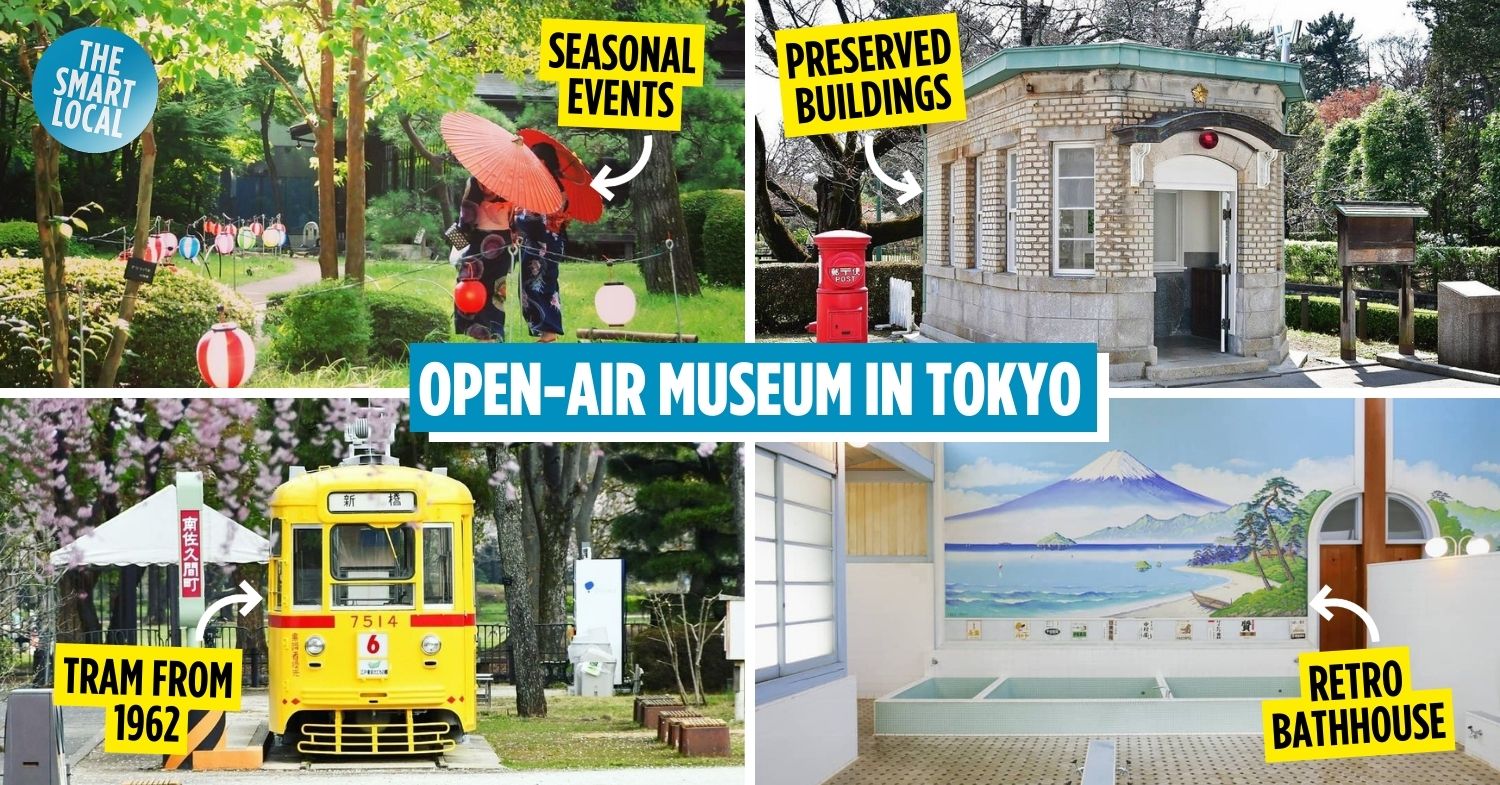Edo Tokyo Open Air Museum
The Edo Tokyo Open Air Museum is home to historic buildings from the Edo, Meiji, Taishō and Shōwa periods. Also known as Tatemono-en (建物園; garden of buildings), the structures relocated and reconstructed here range from rural farmhouses to suburban modernist residences.
Table of Contents
- Edo Tokyo Open Air Museum
- Scout for photo spots
- Visit abodes of famous historical Japanese leaders
- Amble down nostalgic downtown streets of olden-day Tokyo
- Spot magical corners that inspired Studio Ghibli’s creator
- Reimagine thatched houses of wealth and prestige
- Be awed by creative blends of architectural styles
- Dine in historical ambience
- Keep history alive with seasonal events and activities
- Book your tickets beforehand
- Dress & pack for the occasion
- Getting to Edo Tokyo Open Air Museum
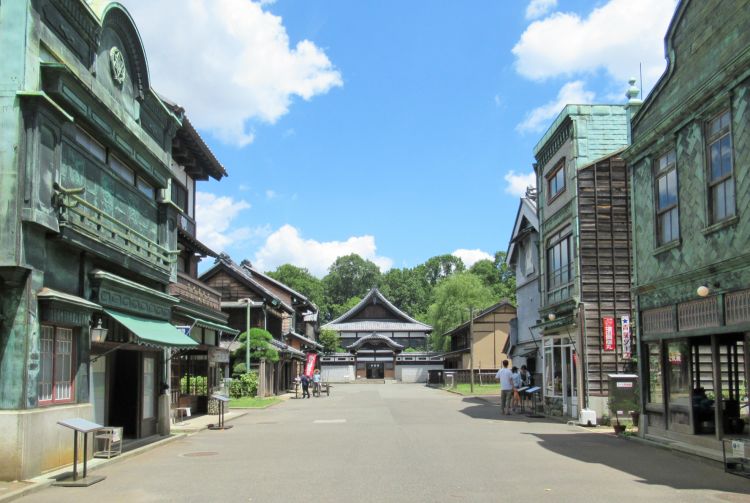
Image credit: Tokyo Convention & Visitors Bureau
Iconic houses from multiple eras are replicated down to the littlest details, so you can time travel into full-sized snapshots of Japan’s architectural history. This guide will take you through things to know before your trip, as well as locations, events, and magical Ghibli corners to look out for.
Scout for photo spots
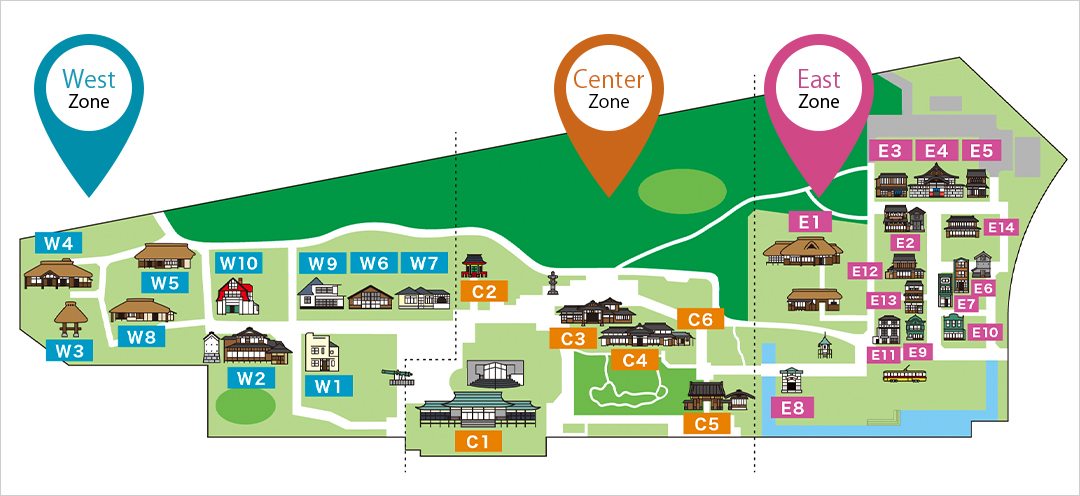
Image credit: Edo Tokyo Open Air Museum
More than 30 buildings spanning across three centuries are arranged like a mini-town within Koganei Park. The place is split into West, Center, and East Zones in clusters of architectural styles that deliver different vibes.
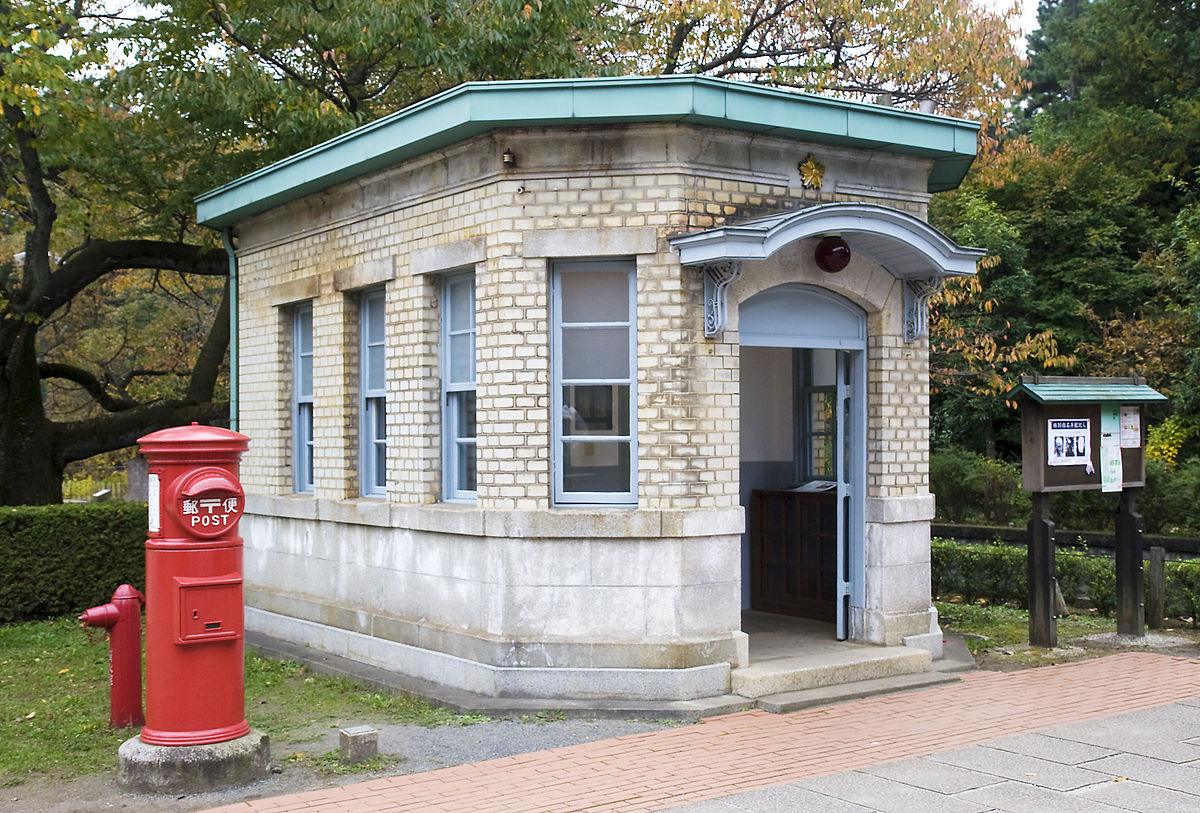
Image credit: MichaelMaggs via Wikimedia
There are also outdoor exhibits scattered among the larger buildings, such as this Police Box from the Mansei Bridge that was uprooted and moved here in one piece.
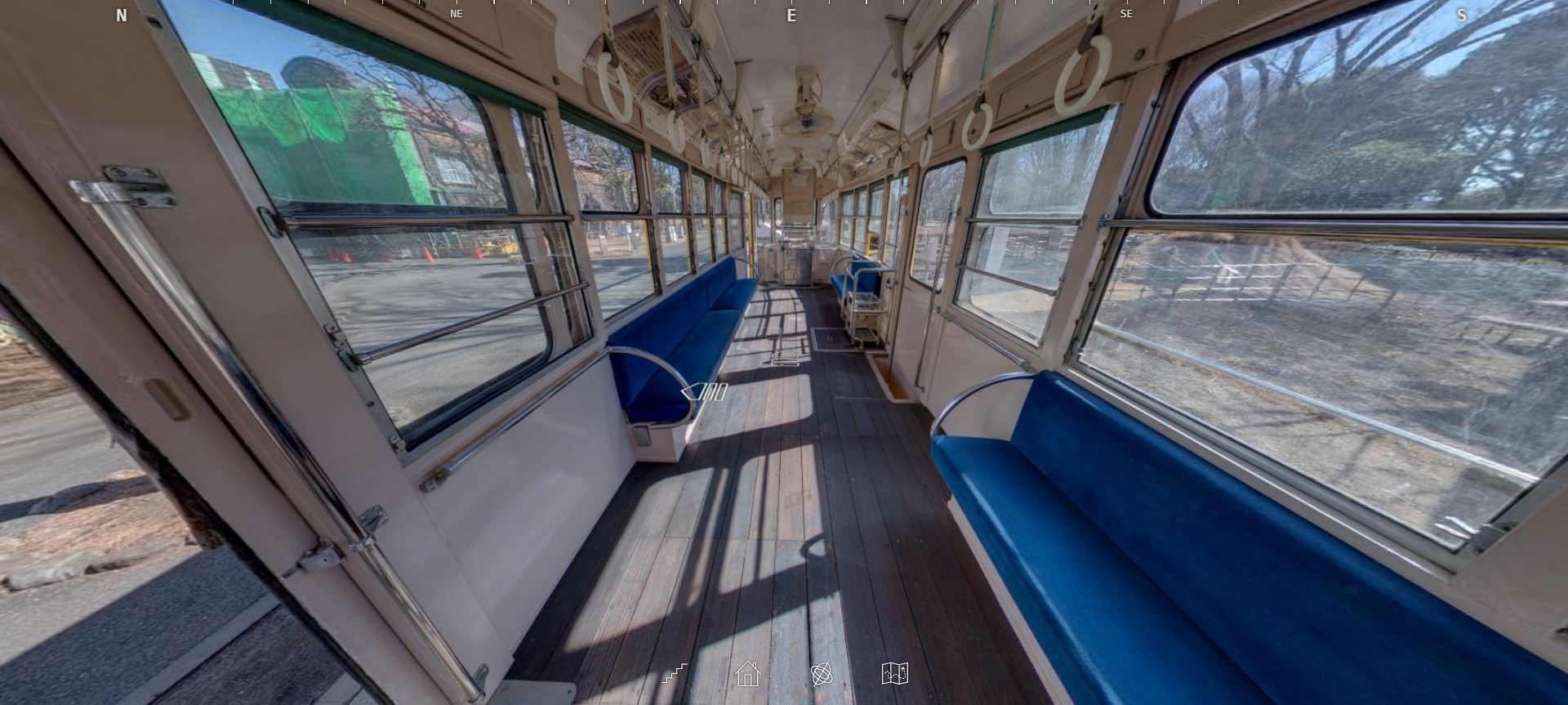
Image adapted from: Edo Tokyo Open Air Museum
If you’d like to scout for photo spots beforehand, the museum offers 360-degree panoramic views of various sites on their website. For example, you can board the city train exhibit online and enjoy the carriage all to yourself.
Visit abodes of famous historical Japanese leaders
Relive milestones throughout Japan’s past by visiting the preserved residences of powerful individuals, all in the Center Zone.
1. House of Korekiyo Takahashi
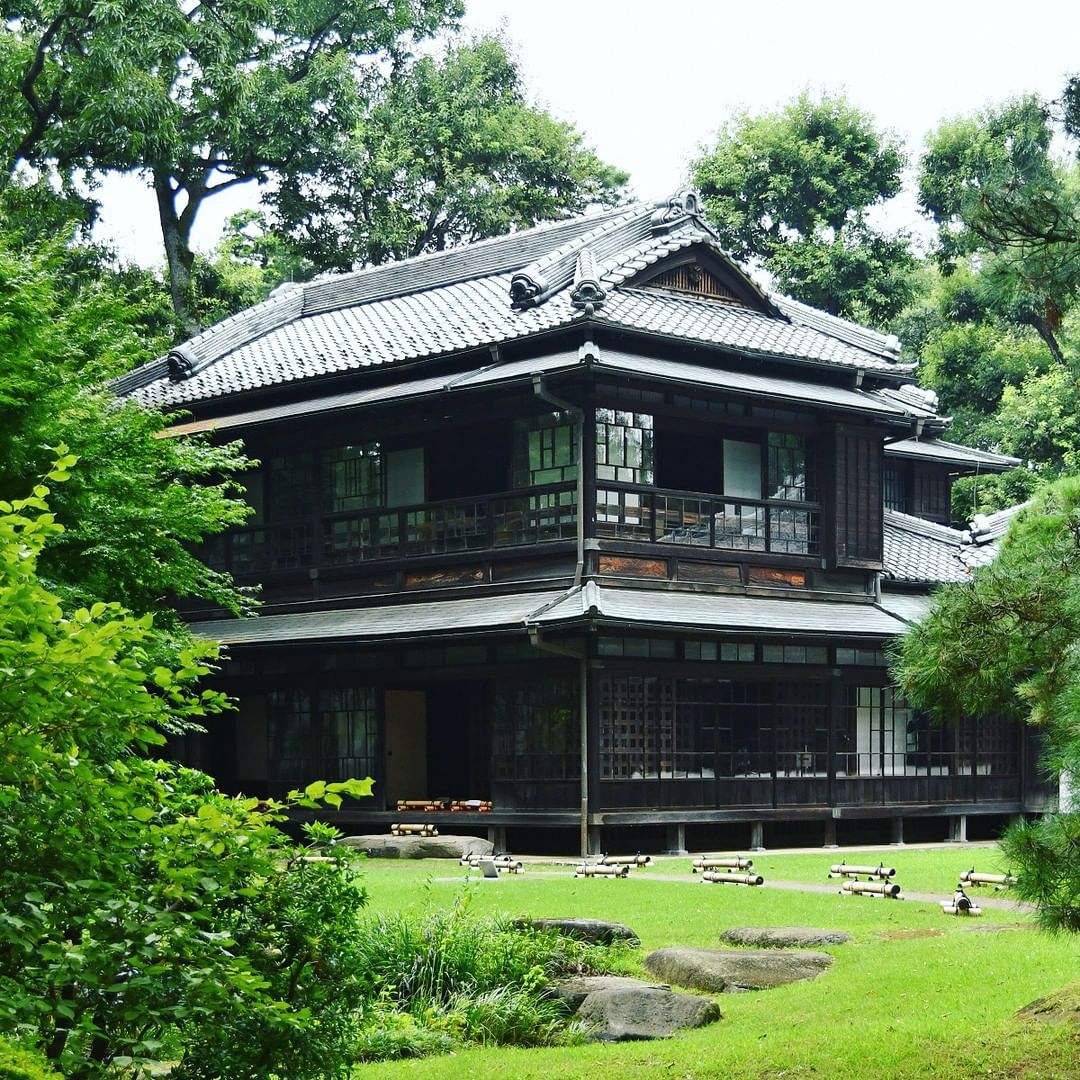
Image credit: @tatemonoen via Instagram
The most noteworthy house in the Center Zone is the House of Korekiyo Takahashi. Takahashi was Japan’s Prime Minister from 1921 to 1922 in the Showa Era.
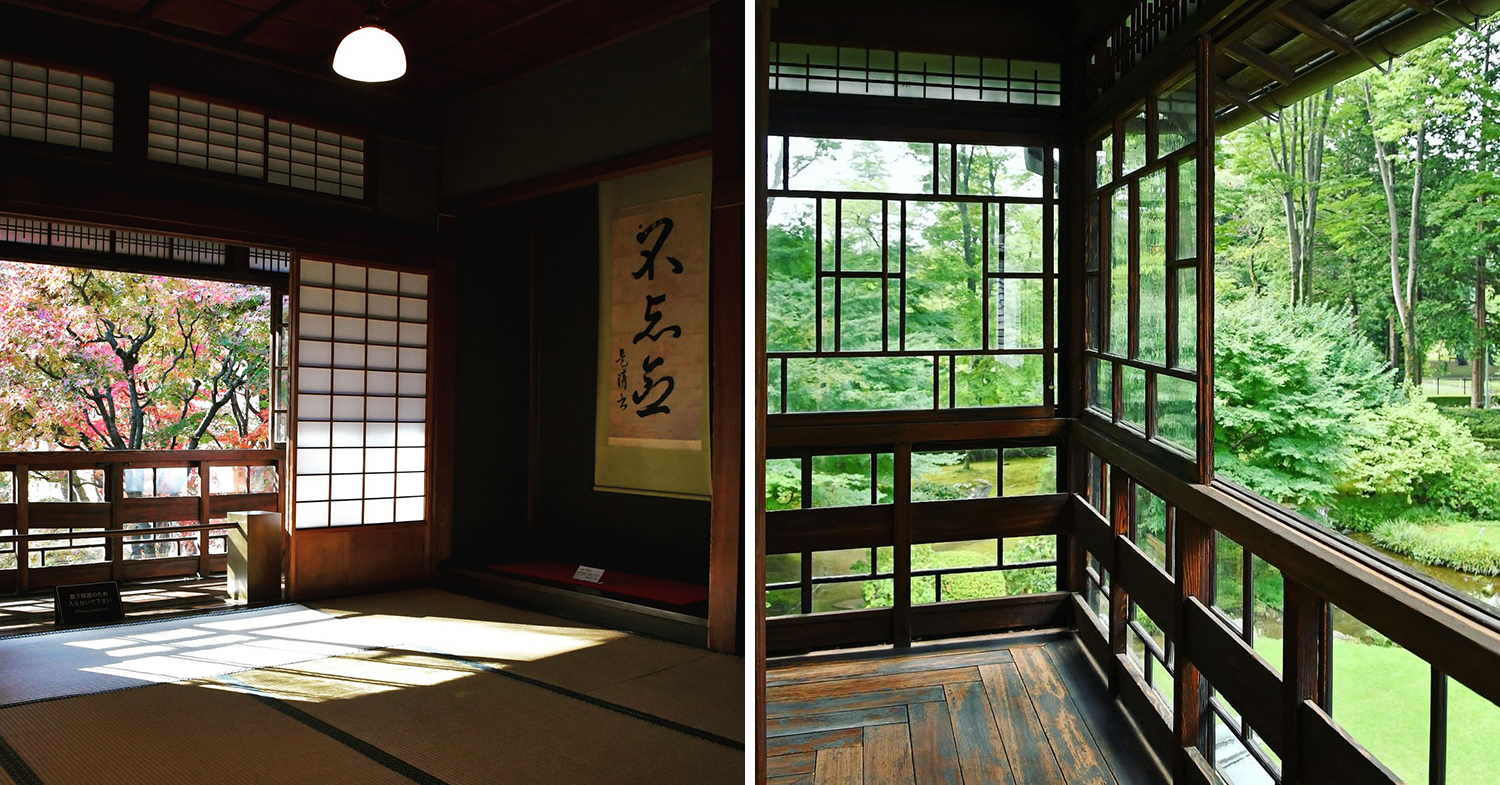
Image adapted from: @tatemonoen via Instagram
Takahashi’s study and bedroom on the second floor was the site of the February 26 Incident. During this 1936 coup, Takahashi was one of seven political leaders on the Imperial Japanese Army’s hit list. He was assassinated for attempting to weaken the military.
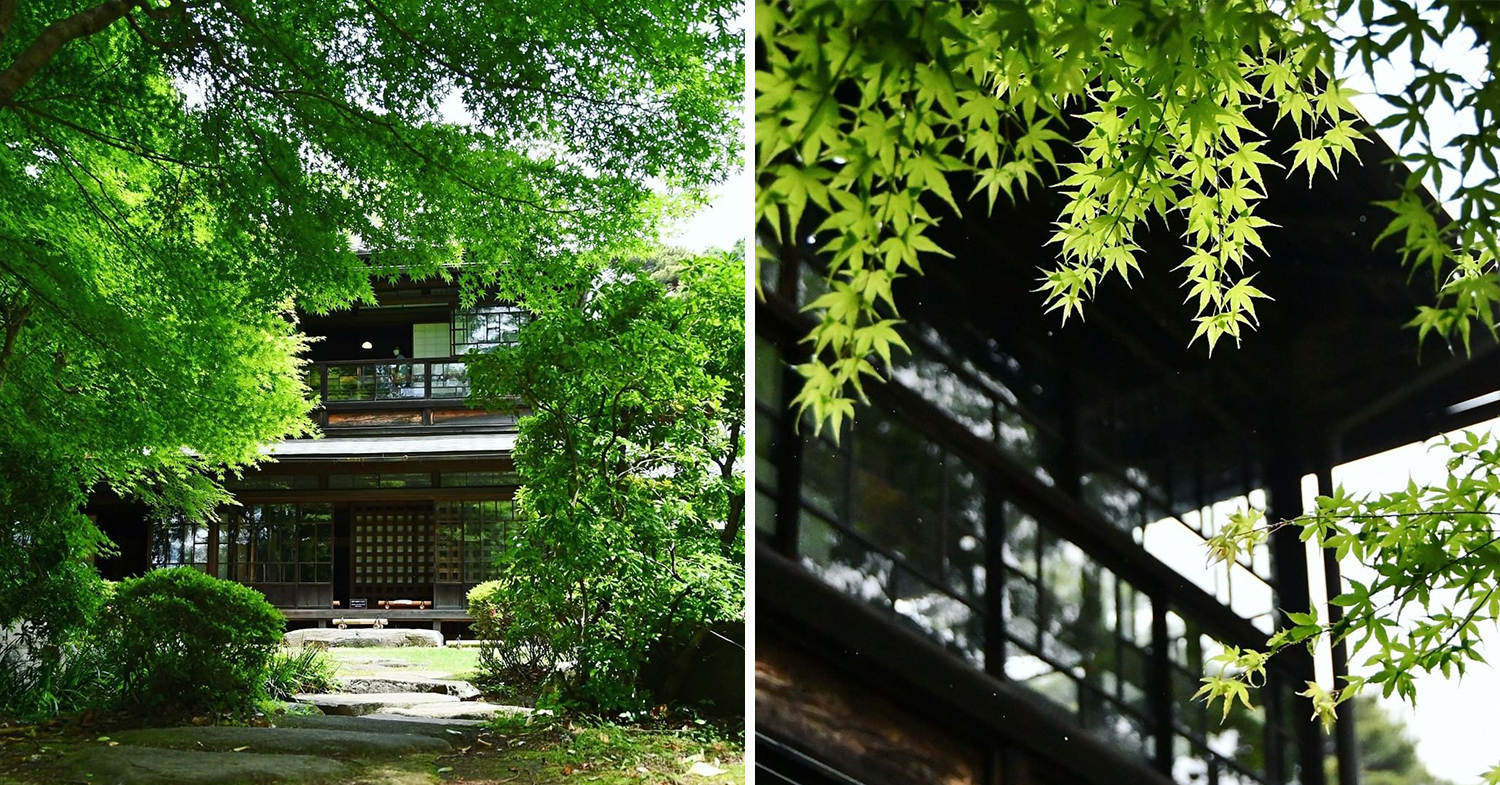
Image adapted from: @tatemonoen via Instagram
In his lifetime, Takahashi enjoyed sunbathing on the lawn. The lush gardens surround serene tatami rooms, a stark contrast to the tumultuous period he lived through while pulling Japan out of the Great Depression.
2. Gate of Date Family Residence
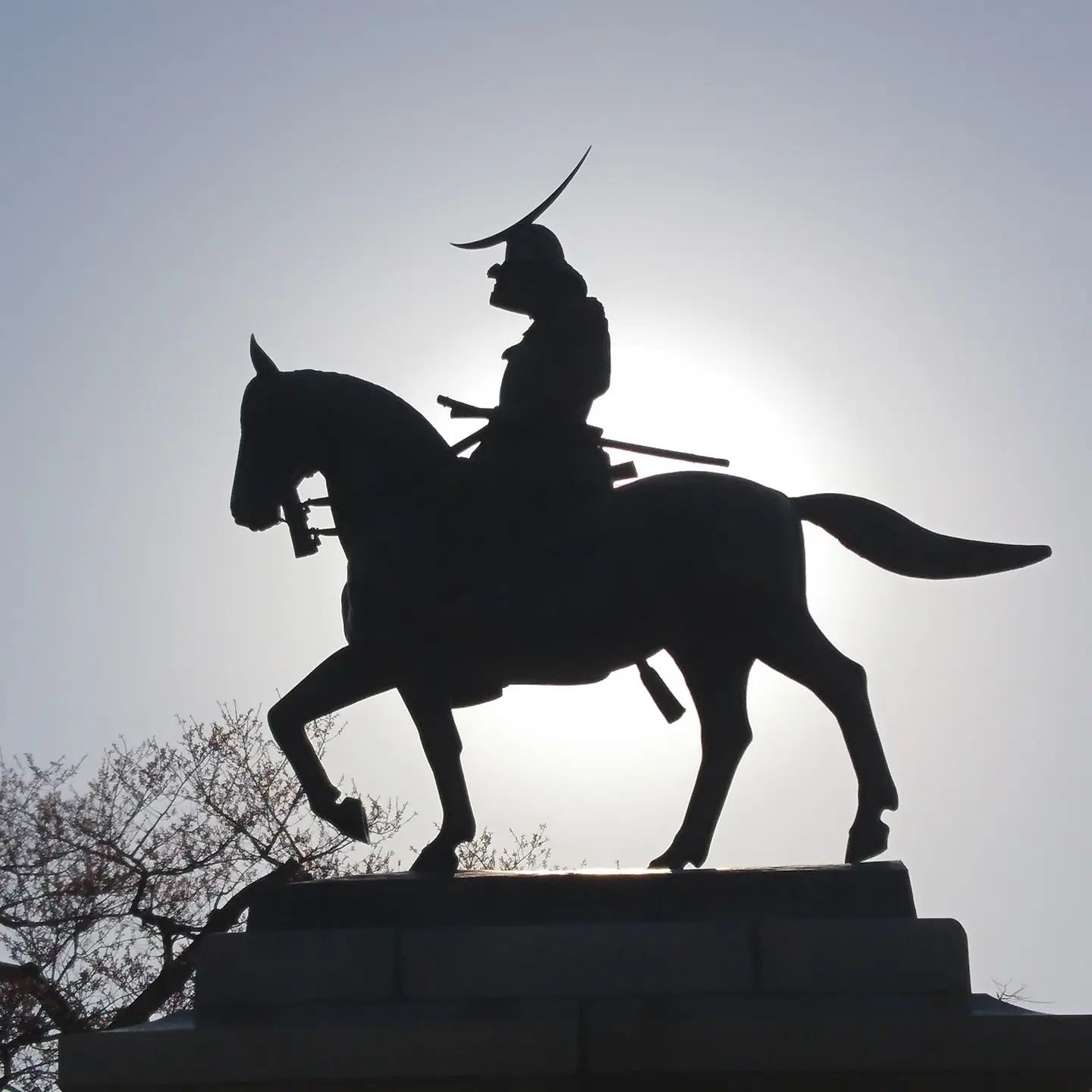 Image credit: @tamuralondon_1965 via Instagram
Image credit: @tamuralondon_1965 via Instagram
If the surname “Date” sounds familiar to you, it’s because the Clan began with Date Masamune, the “One-Eyed Dragon” feudal lord who came to power during the warring Sengoku period.
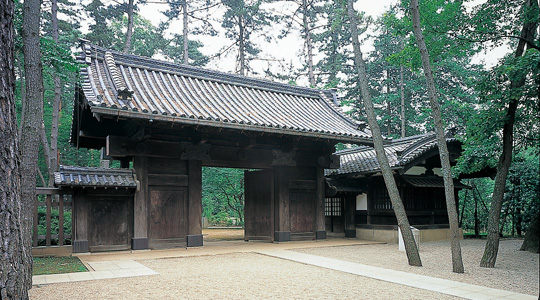
Image credit: Edo Tokyo Open Air Museum
This family residence was founded by Date Hidemune, who could not succeed the family despite being Date Masamune’s first-born son as his mother was a concubine.
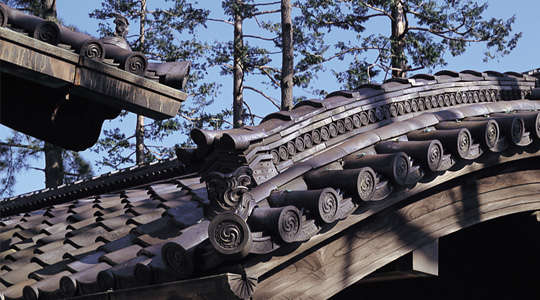
Image credit: Edo Tokyo Open Air Museum
While he stayed outside of Edo at Uwajima Province (present-day Ehime), the residence reproduces feudal lord-style grandeur with its curved-roofed guard house. It is made from Japanese zelkova, one of the largest, commercially available shade trees in East Asia.
Amble down nostalgic downtown streets of olden-day Tokyo
The East Zone’s Shitamachi-naka Street features various shops where replicas of everyday objects from olden times evoke a homely, lived-in feel. You’ll feel like a real window shopper amongst these knickknacks of downtown Tokyo.
1. Maruni Shoten Kitchenware Store
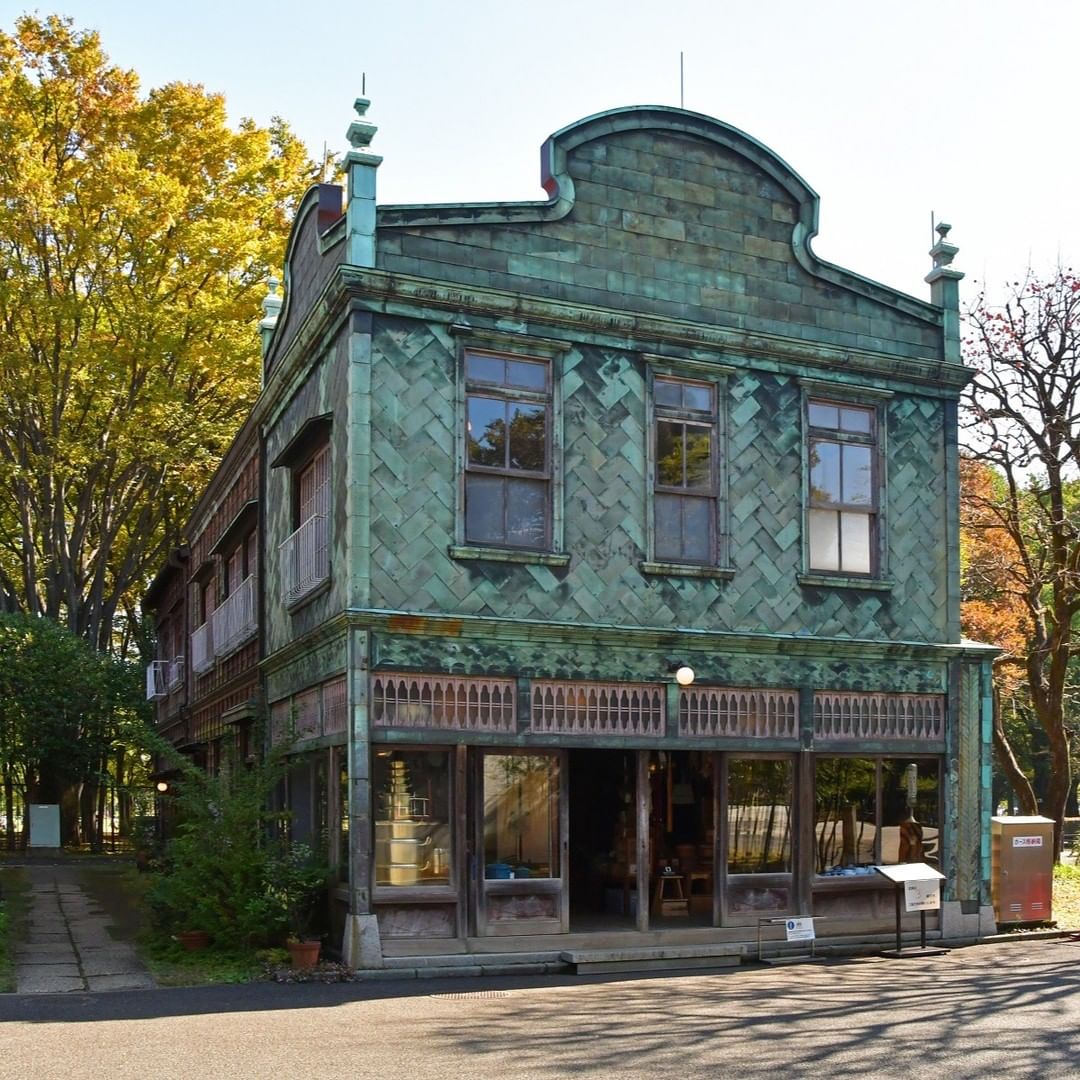 Image credit: @tatemonoen via Instagram
Image credit: @tatemonoen via Instagram
Standing near the end of Shitamachi-naka Street is the Maruni Shoten Kitchenware Store, a must-include feature in every Tatemono-en shitamachi (下町; downtown) panorama.
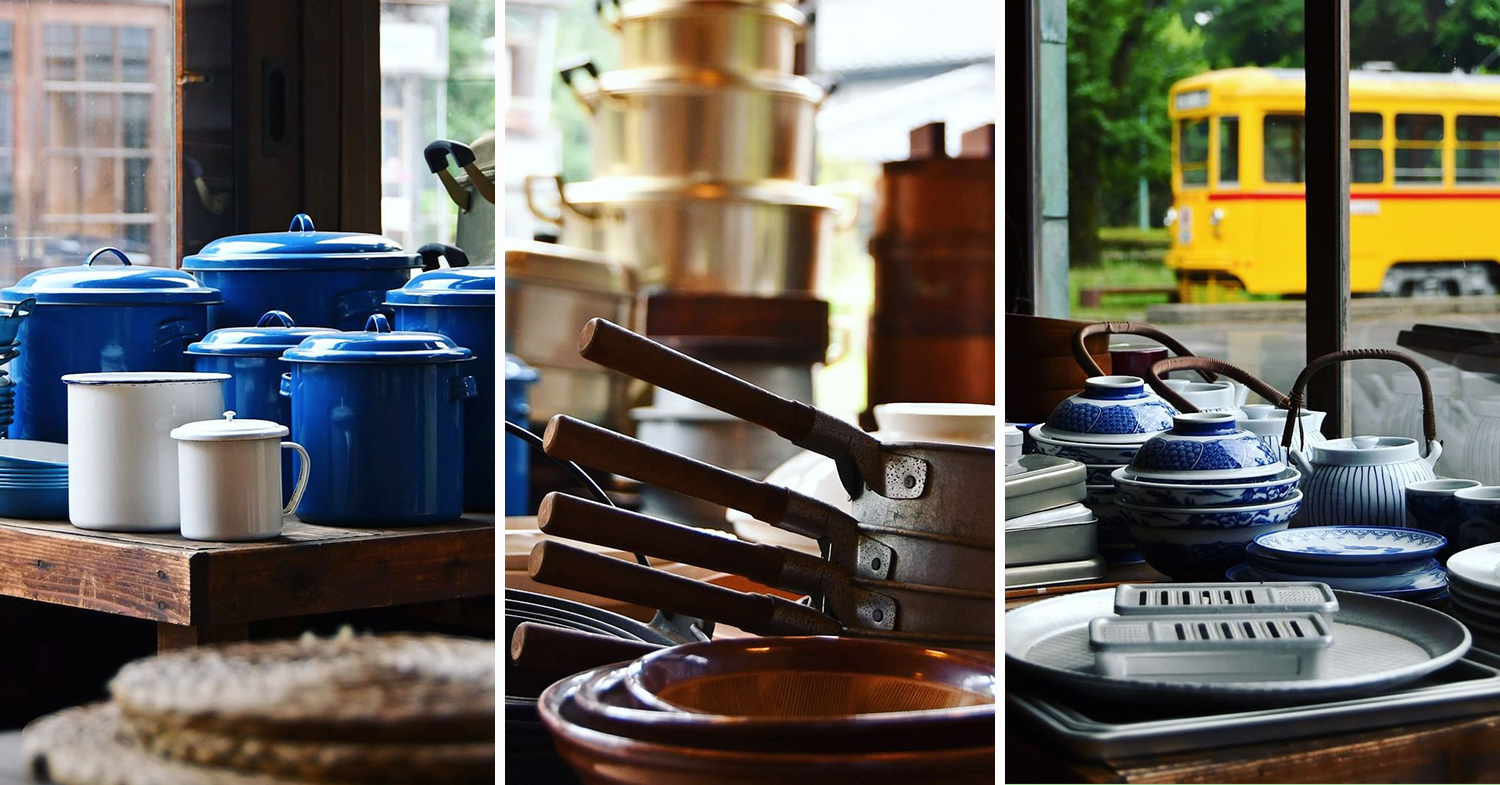
Image adapted from: @tatemonoen via Instagram
From glazed ceramic crockery to sizable pots and pans, this kitchenware store has everything a chef would need.
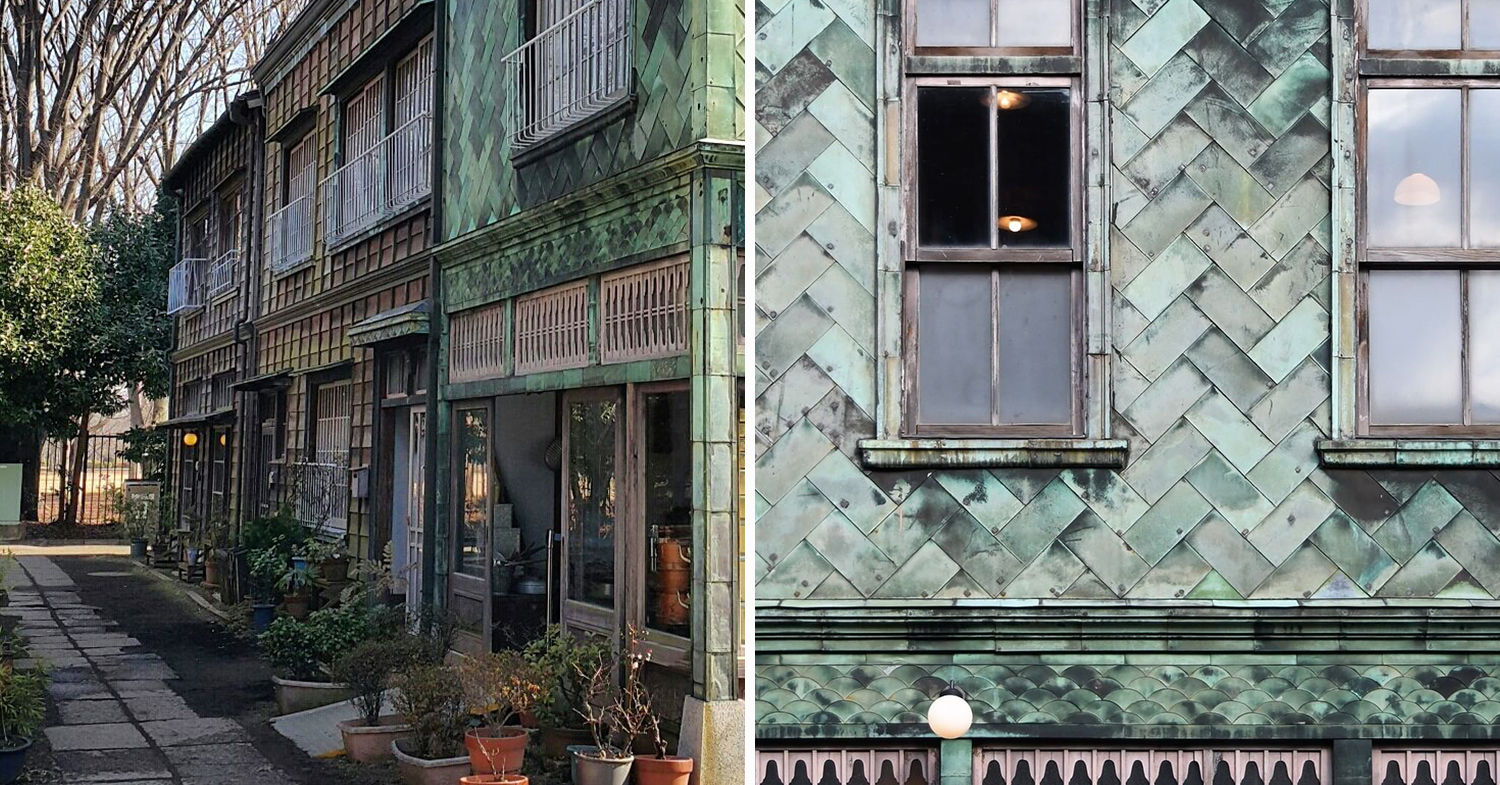
Image adapted from: @a_ha_moma and @tatemonoen via Instagram
Tenement houses were added behind the kitchenware store to recreate the Showa period street atmosphere. The shop is covered in small copper plates that give it a distinctive aged green glow.
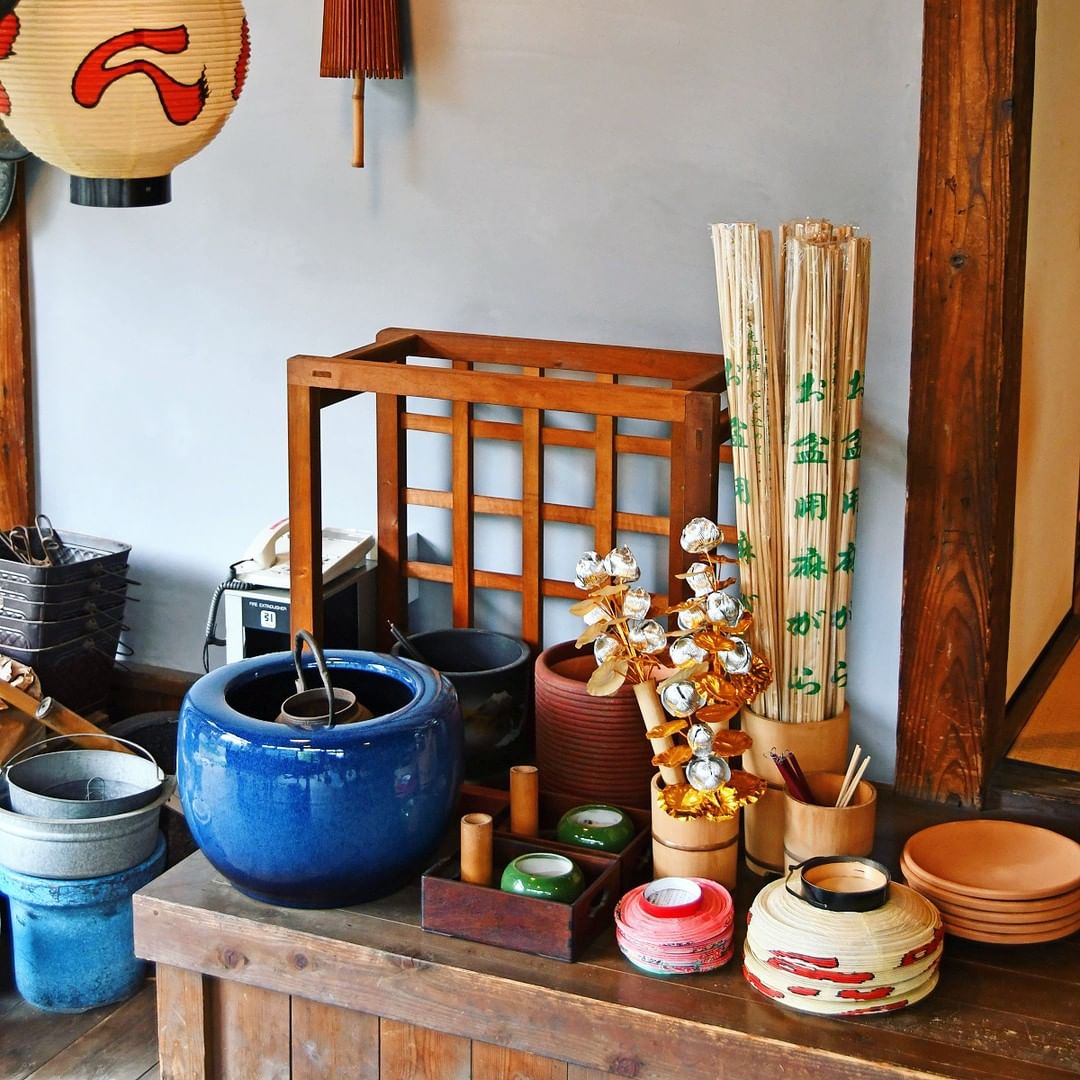
Image credit: @tatemonoen via Instagram
Maruni Shoten also displays other household items, such as decorations for Obon (お盆; day for commemoration of deceased ancestors).
2. Kagiya Bar
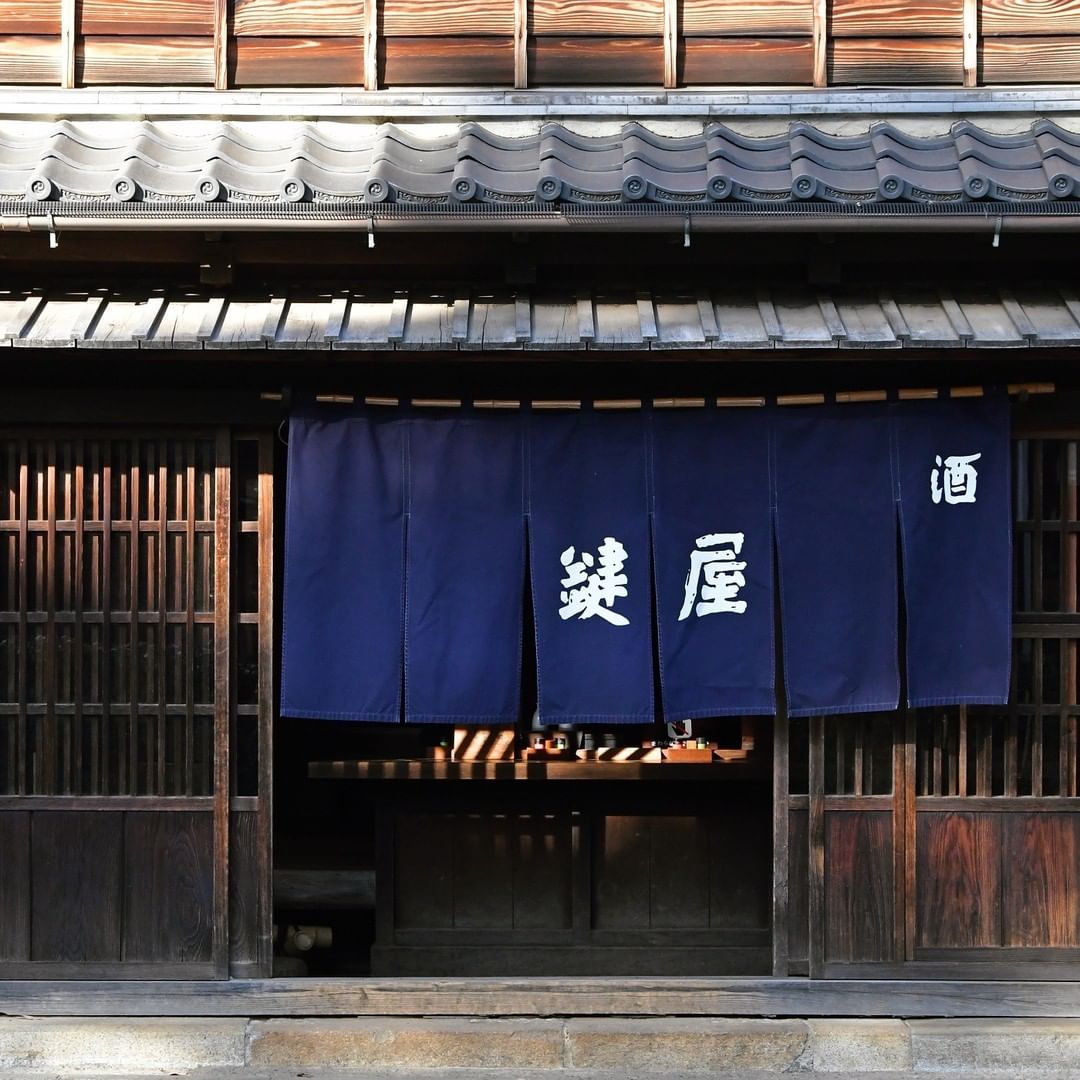
Image credit: @tatemonoen via Instagram
The Kagiya Bar once stood in Shitaya, Taito Ward, in Tokyo’s shitamachi. Built in 1856, it served customers for more than a century till 1970.
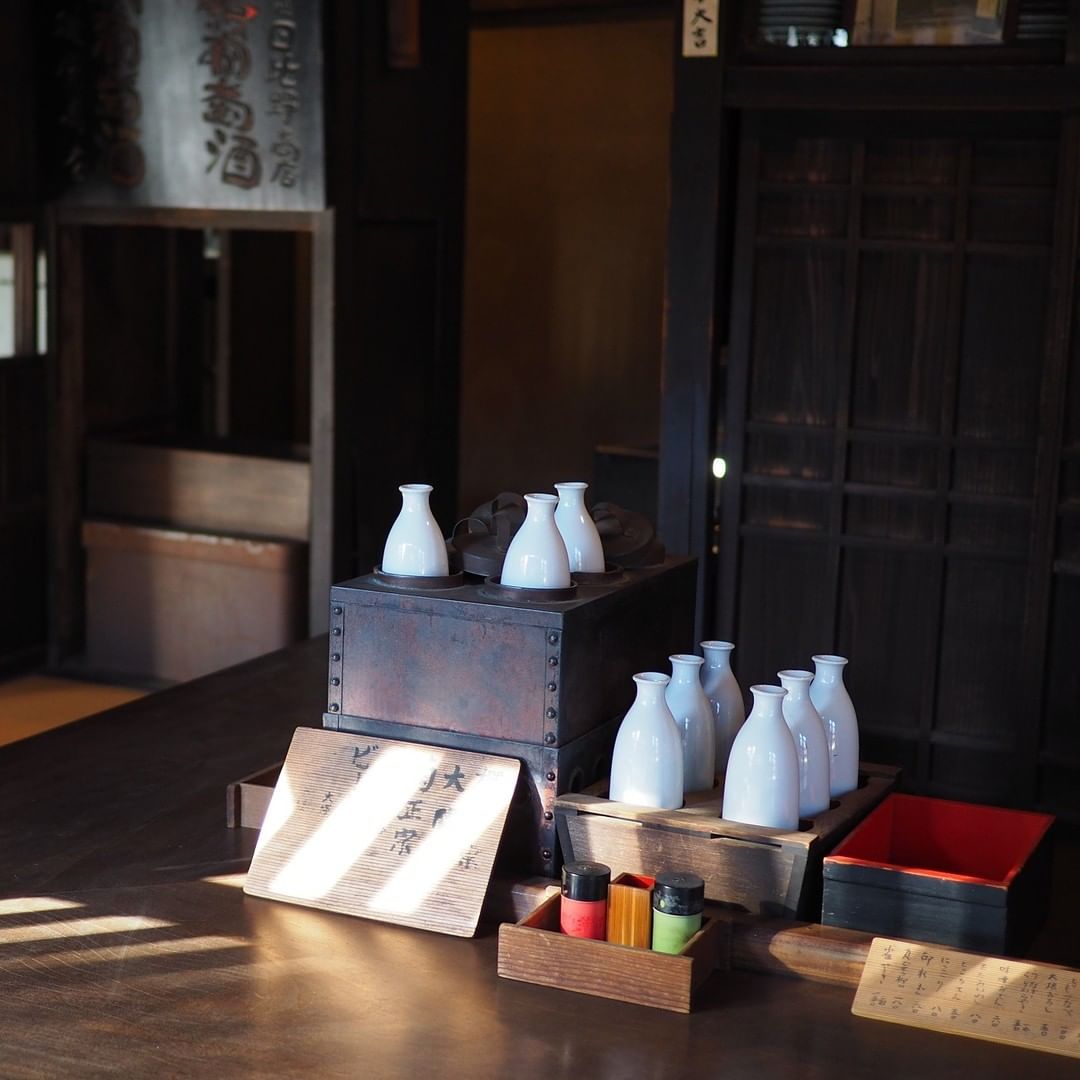
Image credit: @tatemonoen via Instagram
The hardy business stood strong through earthquakes and wars until it was relocated to the museum to preserve it from Tokyo’s rapid urban redevelopment.
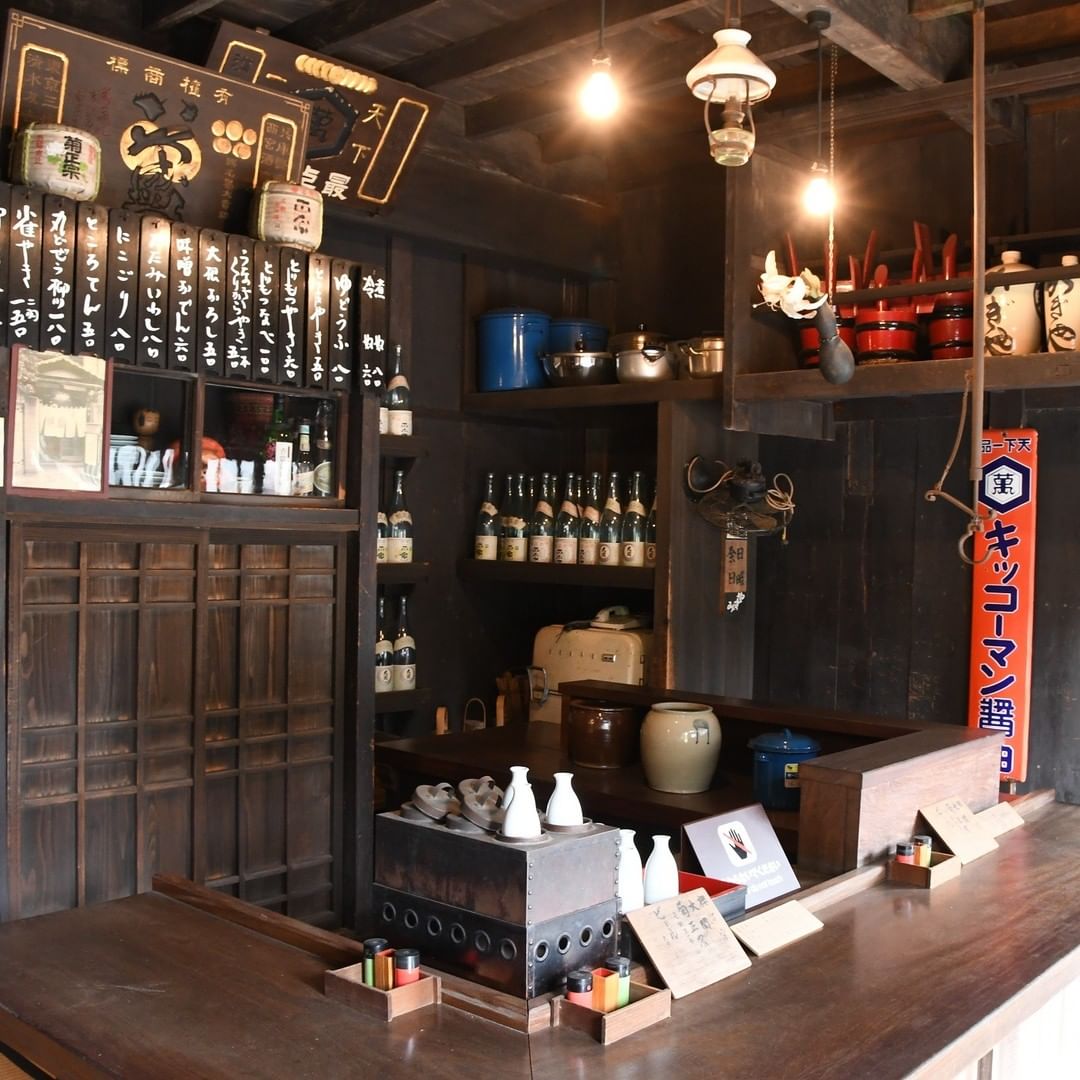
Image credit: @tatemonoen via Instagram
Some of the alcohol brands served at the bar include Asahi, which has been around since 1949.
3. Kodera Soy Sauce Shop
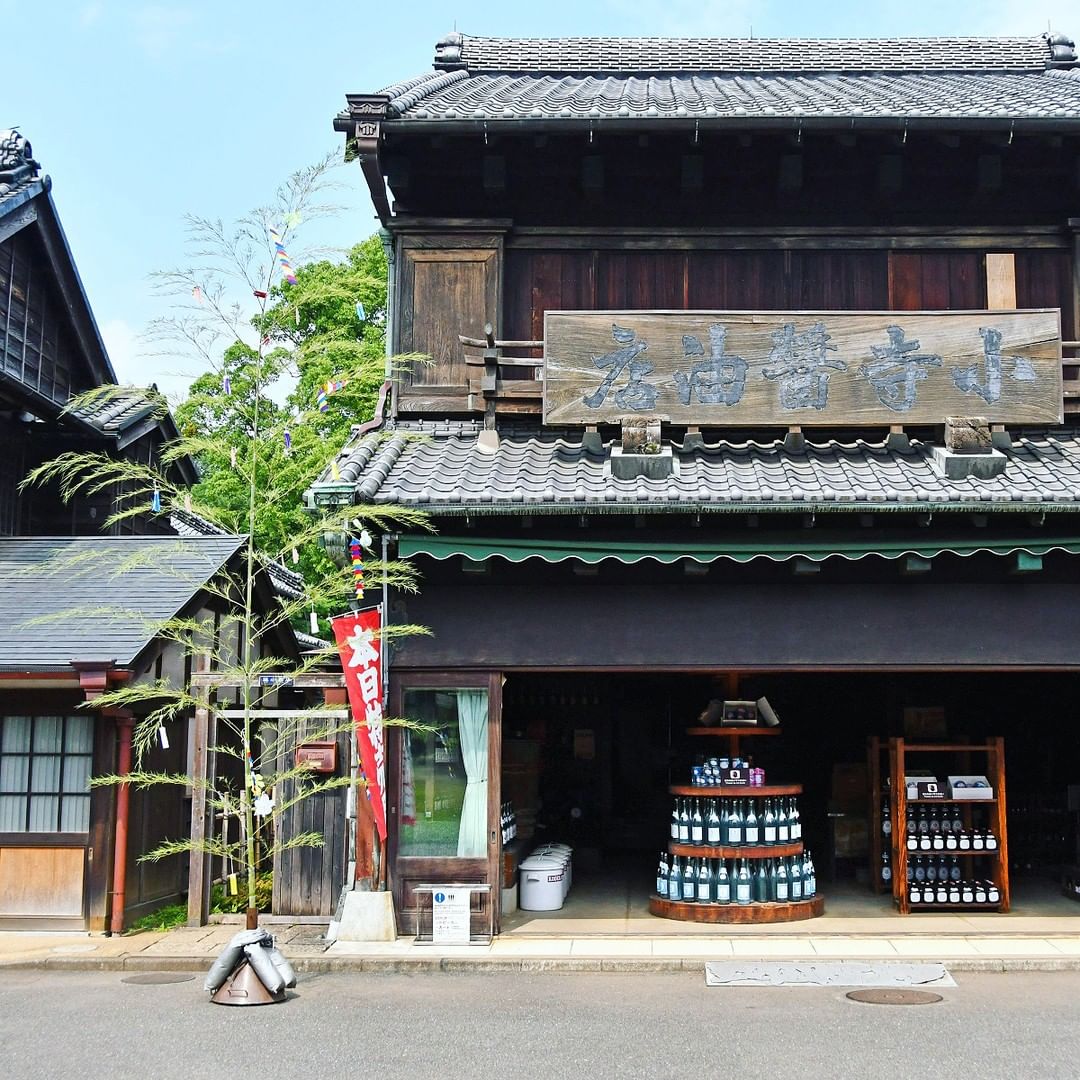
Image credit: @tatemonoen via Instagram
Apart from liquor, this shop sells yet another essential liquid for some. Kodera Soy Sauce Shop has sold soya bean paste, soya sauce and liquor since the Taisho period (1912 – 1926) until it was relocated here in 1933.
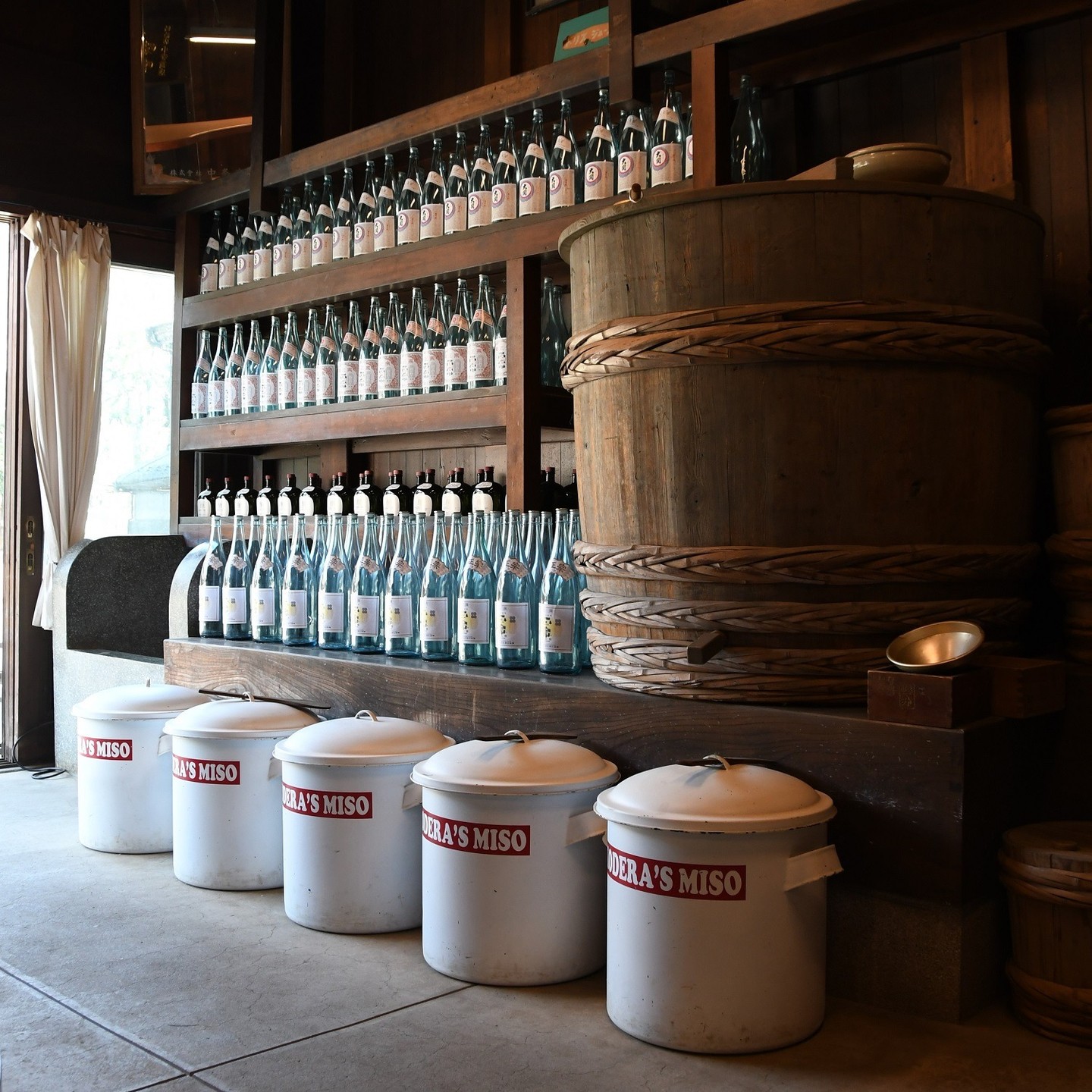
Image credit: @tatemonoen via Instagram
Customers back then could bring their own bottles to be filled straight from the soya sauce barrel for a discounted price.
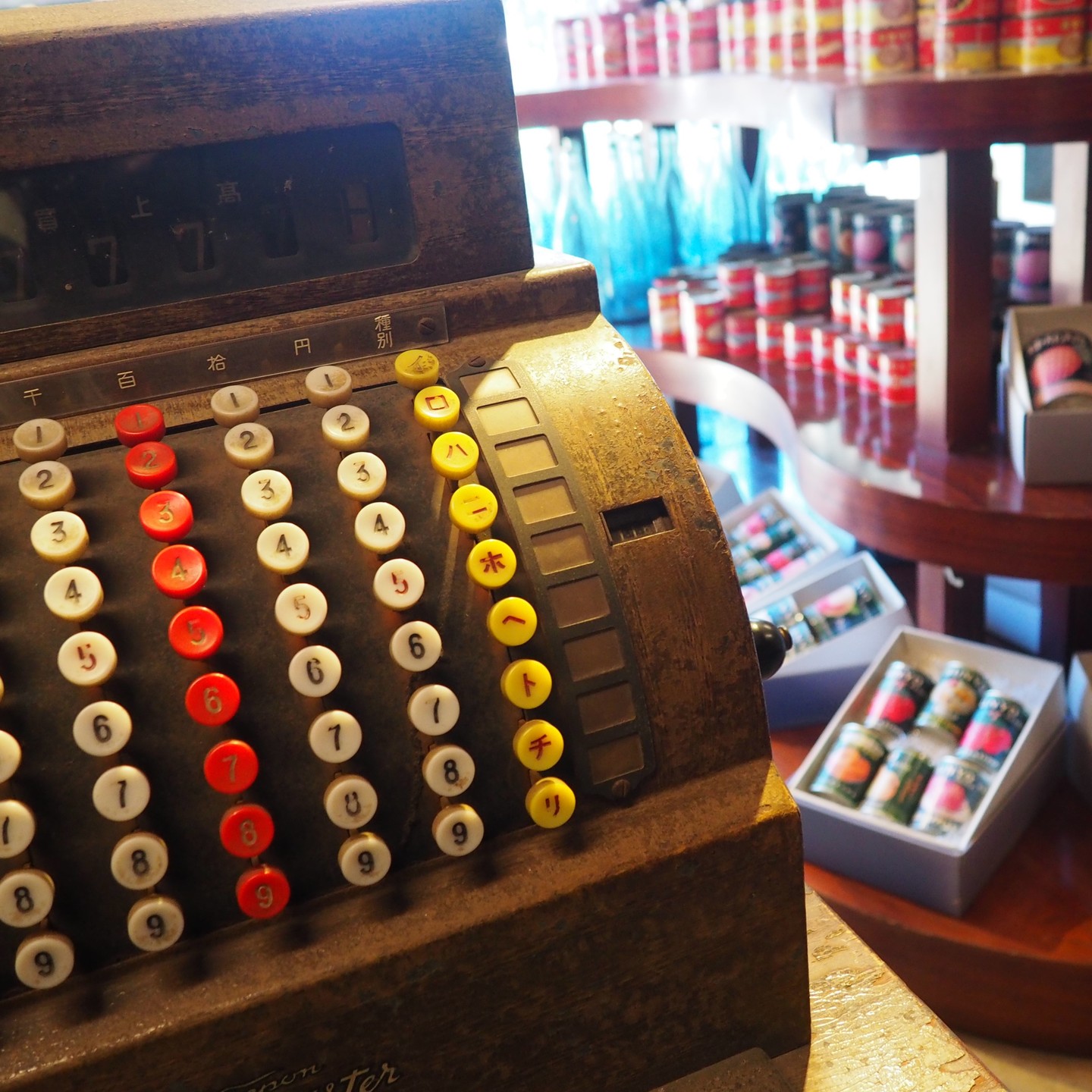
Image credit: @tatemonoen via Instagram
This well-stocked shop has an old cash register with katakana characters alongside columns of numbers so the cashier could label their records. We love a well-organised business.
4. Yamatoya Grocery Store
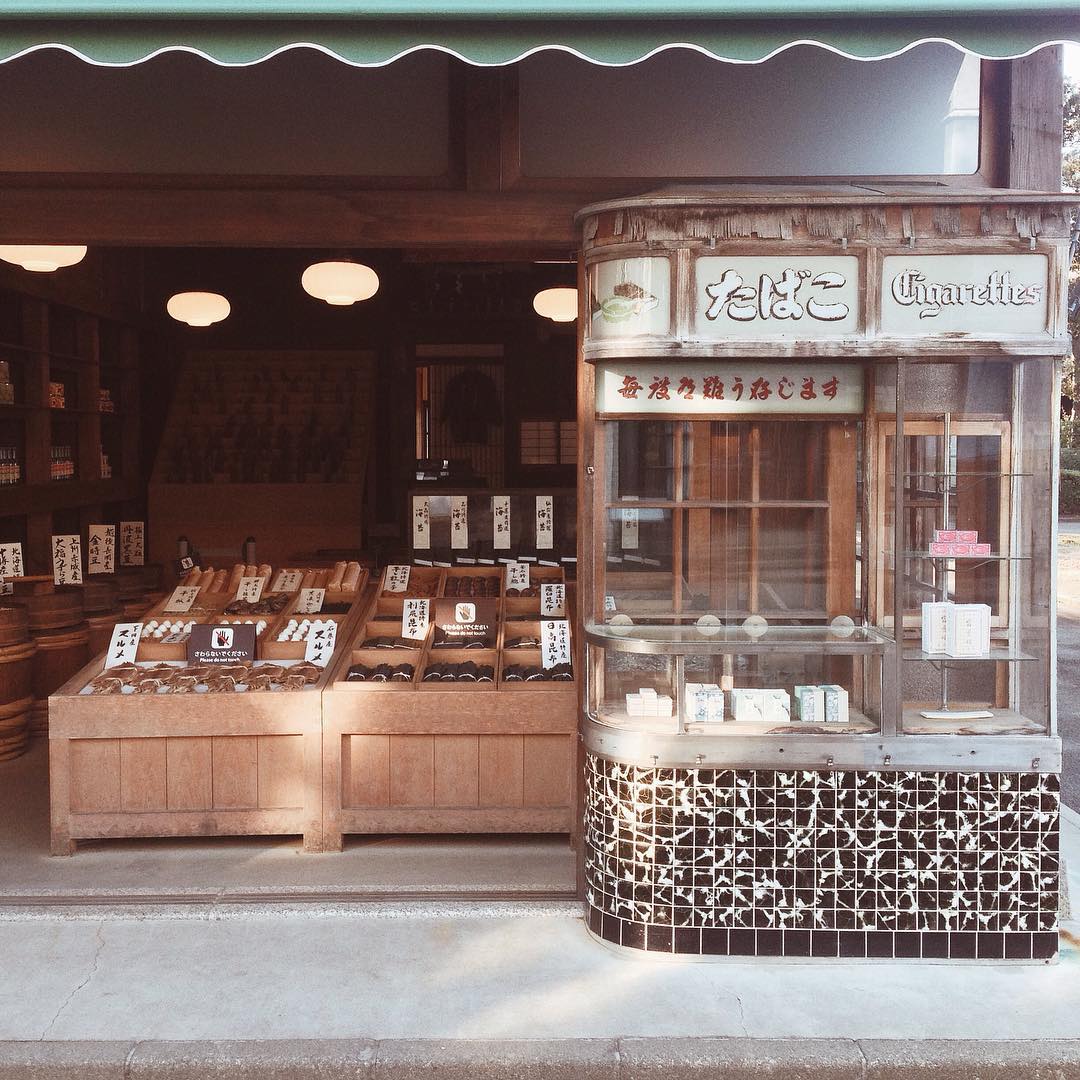
Image credit: @seadog15 via Instagram
Similar to other shops in this downtown area, the grocery store has a kanban (看板; signboard)-style front facade.
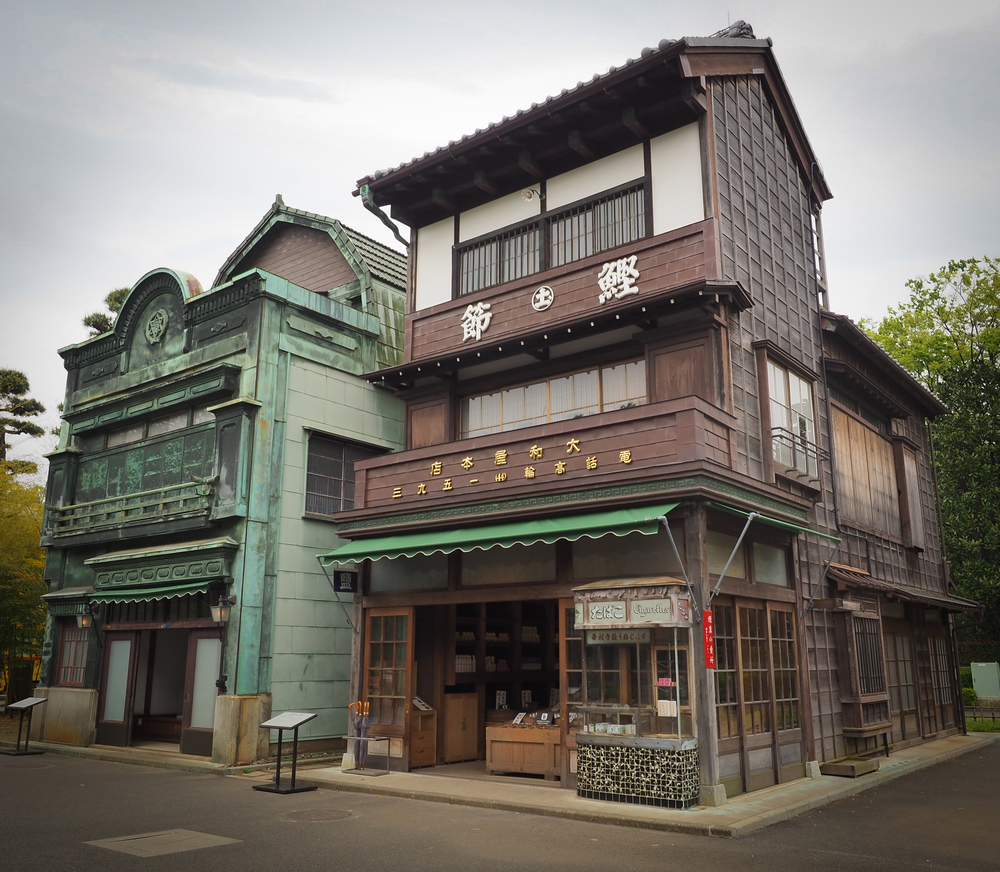
Image credit: Tanya
Yamatoya stands out with its disproportionately tall kanban storefront and protruding beams that appear from the third floor.
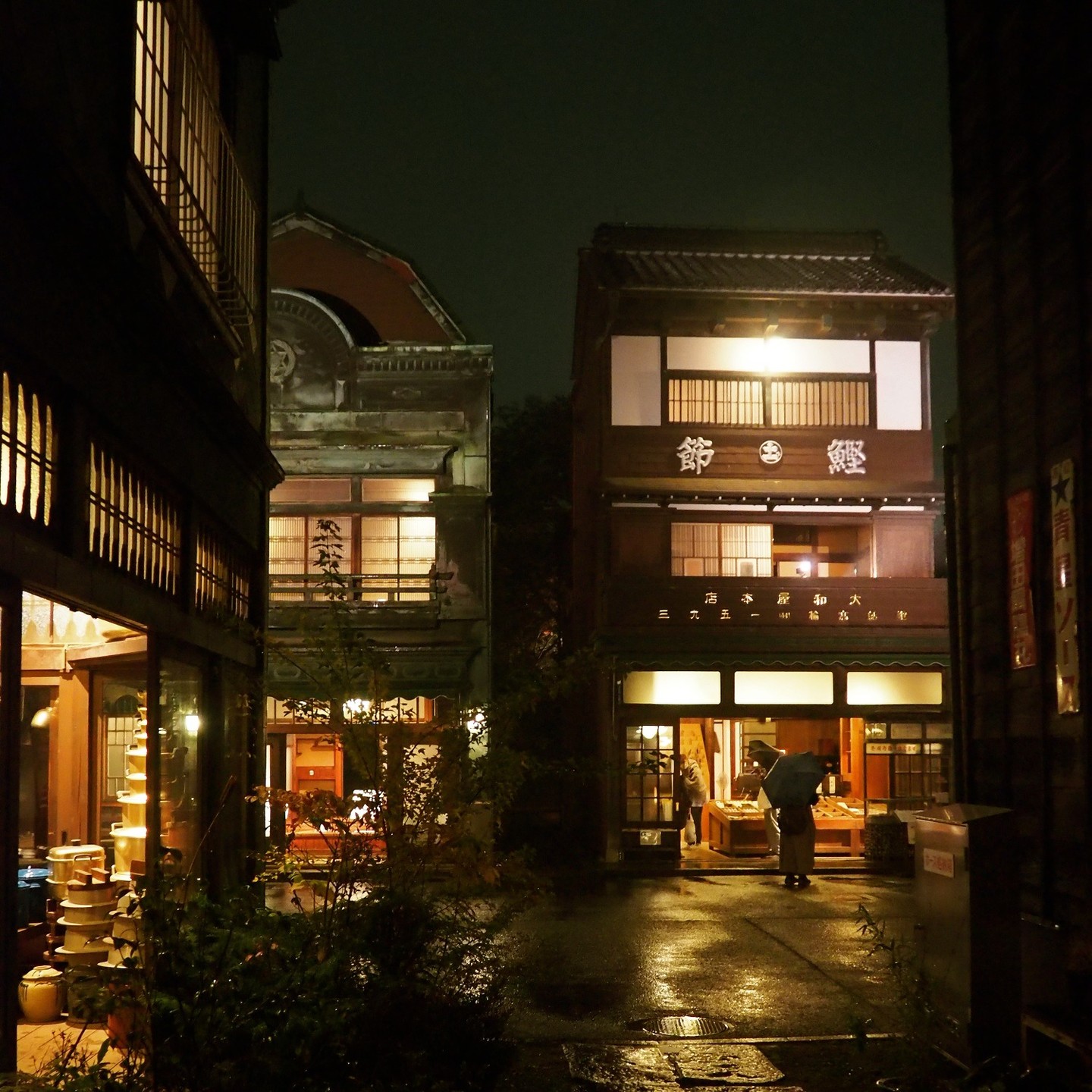
Image credit: @tatemonoen via Instagram
The kanban style was popular during reconstruction periods after the Great Kanto Earthquake and World War II, where the architecture became a form of advertisement to draw in customers.
Spot magical corners that inspired Studio Ghibli’s creator
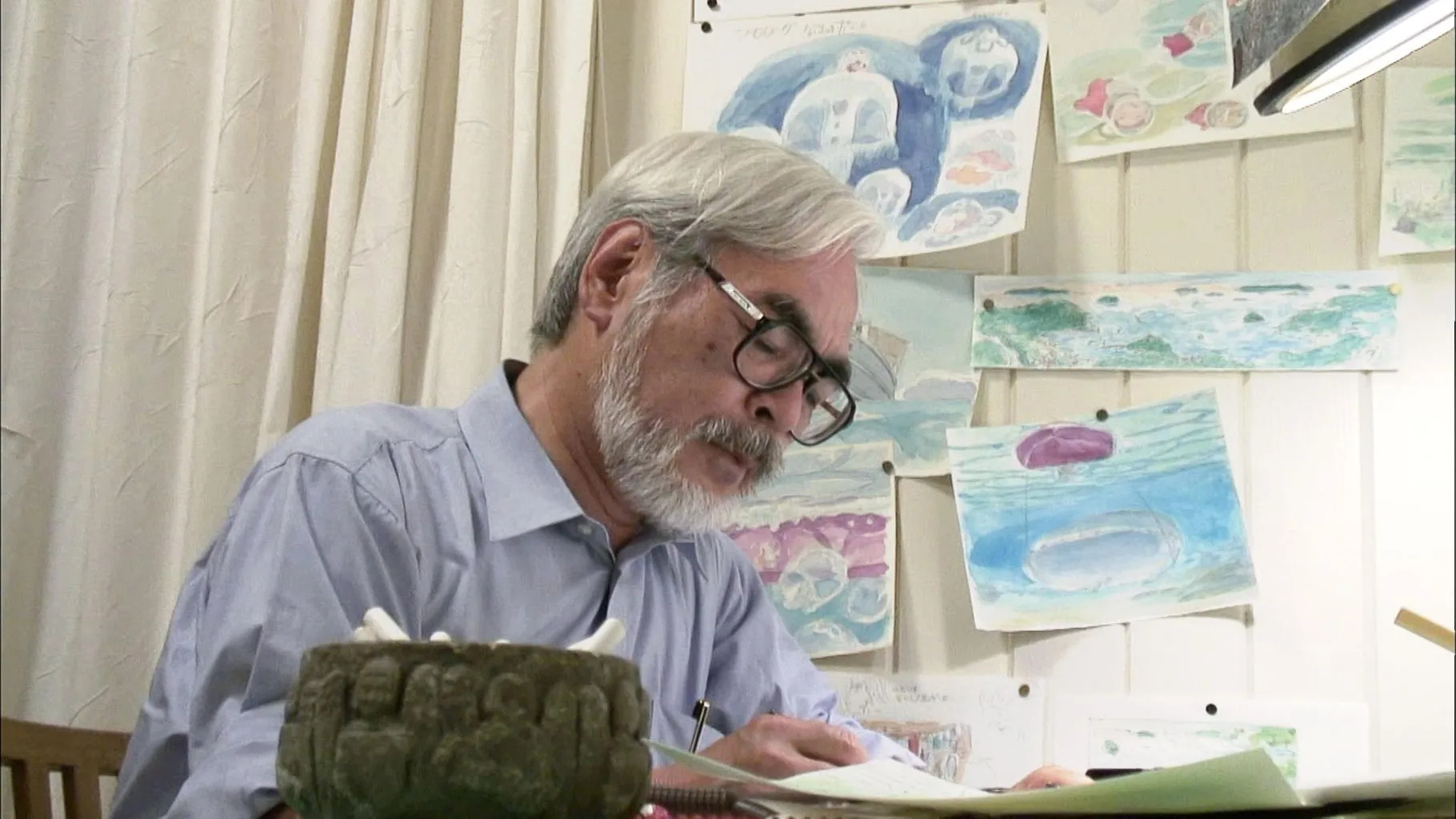
Image adapted from: NHK
Hayao Miyazaki, the father of Japanese animation, often visited Tatemono-en during the creation of Spirited Away. In fact, the world of Spirited Away was modelled after the museum’s mix of tradition with modernity.
1. Miyazaki’s signature & Kamaji’s wall of cabinets in Takei Sanshodo
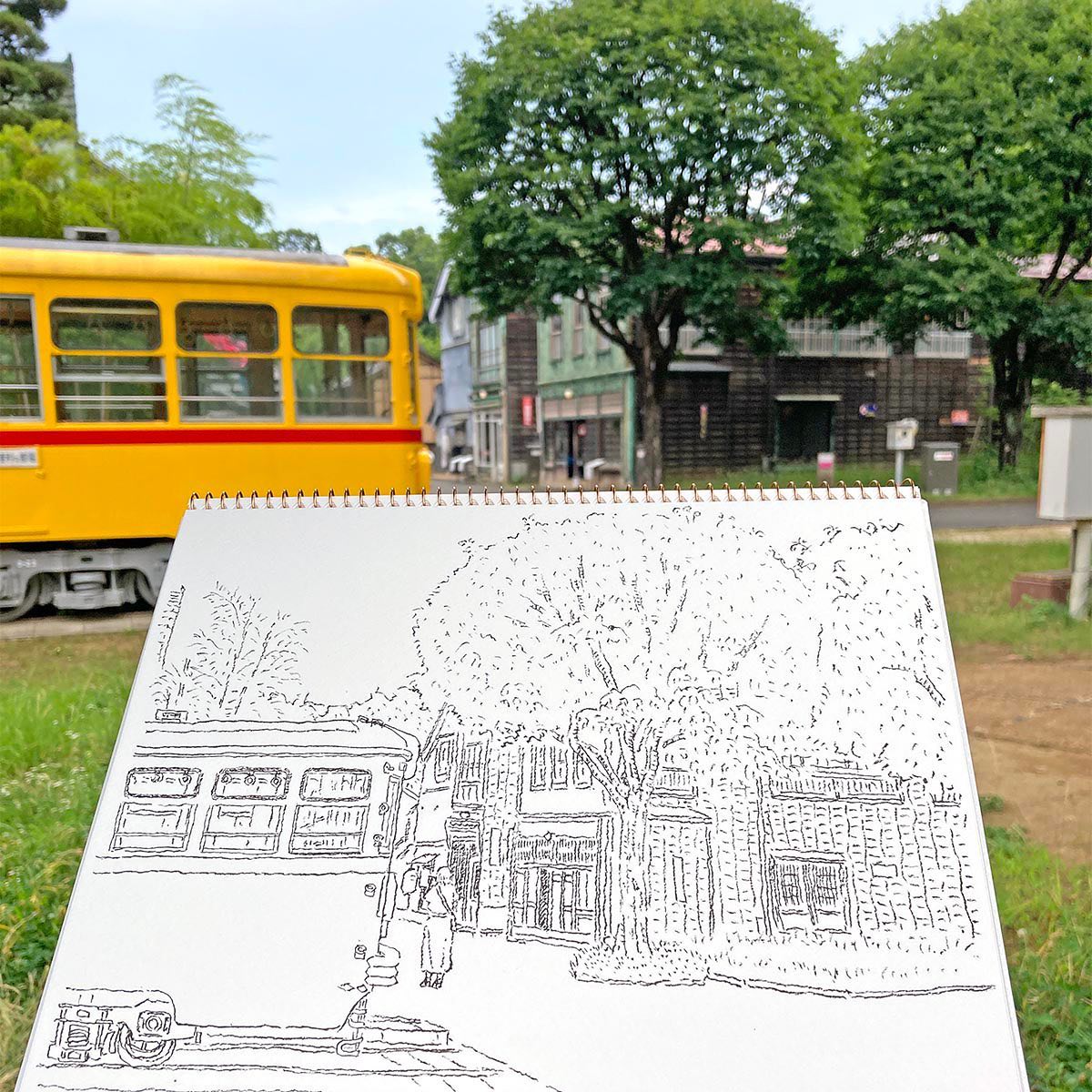
Image credit: @sketch.dai.suki via Instagram
Miyazaki was known to visit the museum to sketch the sights here. In an interview, he shared that the pseudo-Western-style buildings stood out to him.
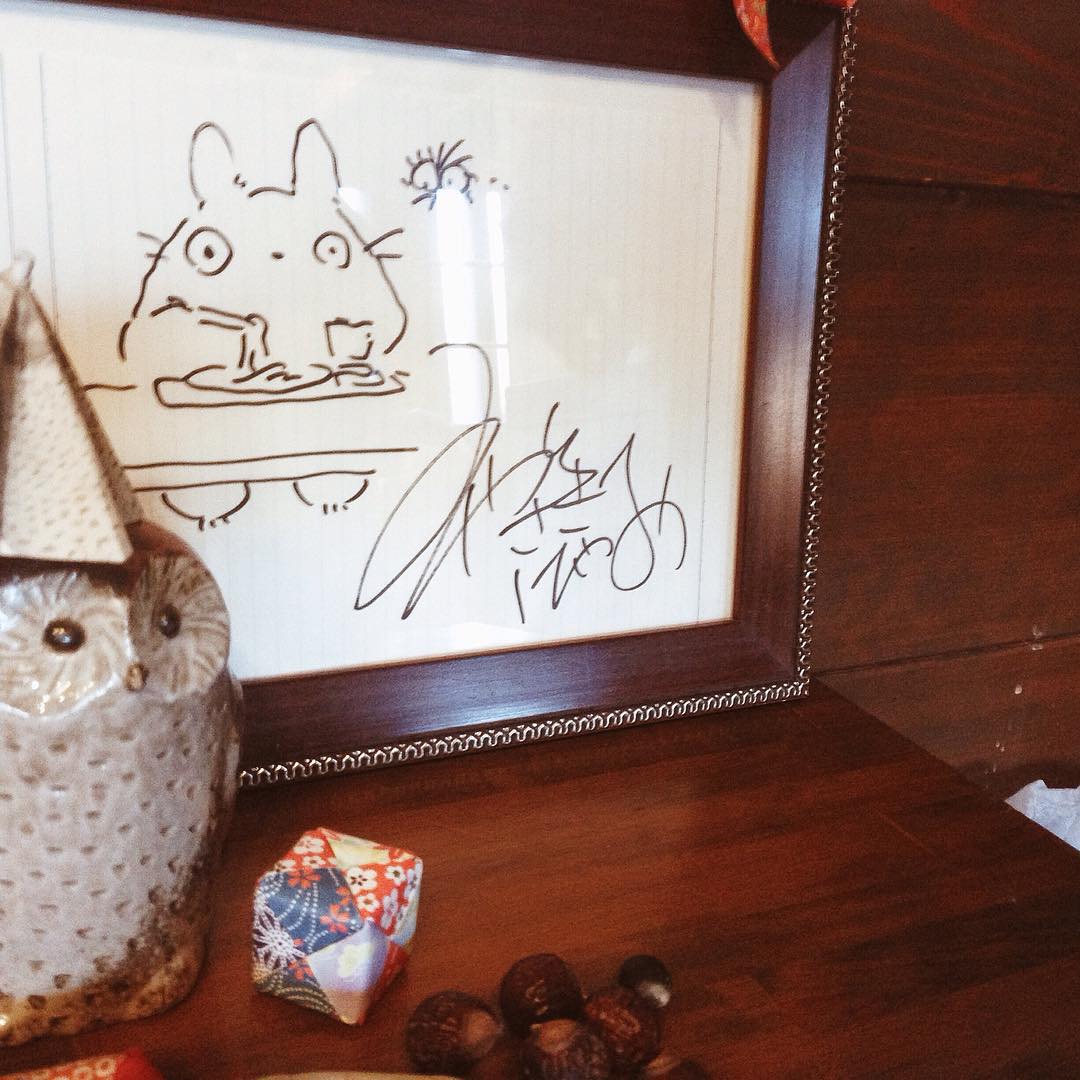
Image credit: @seadog15 via Instagram
Mizayaki left souvenirs for visitors of the museum just as the sights here left an impression on him. If you head down to Takei Sanshodo stationery shop in the East Zone, look out for a framed display of an autographed Totoro sketch.
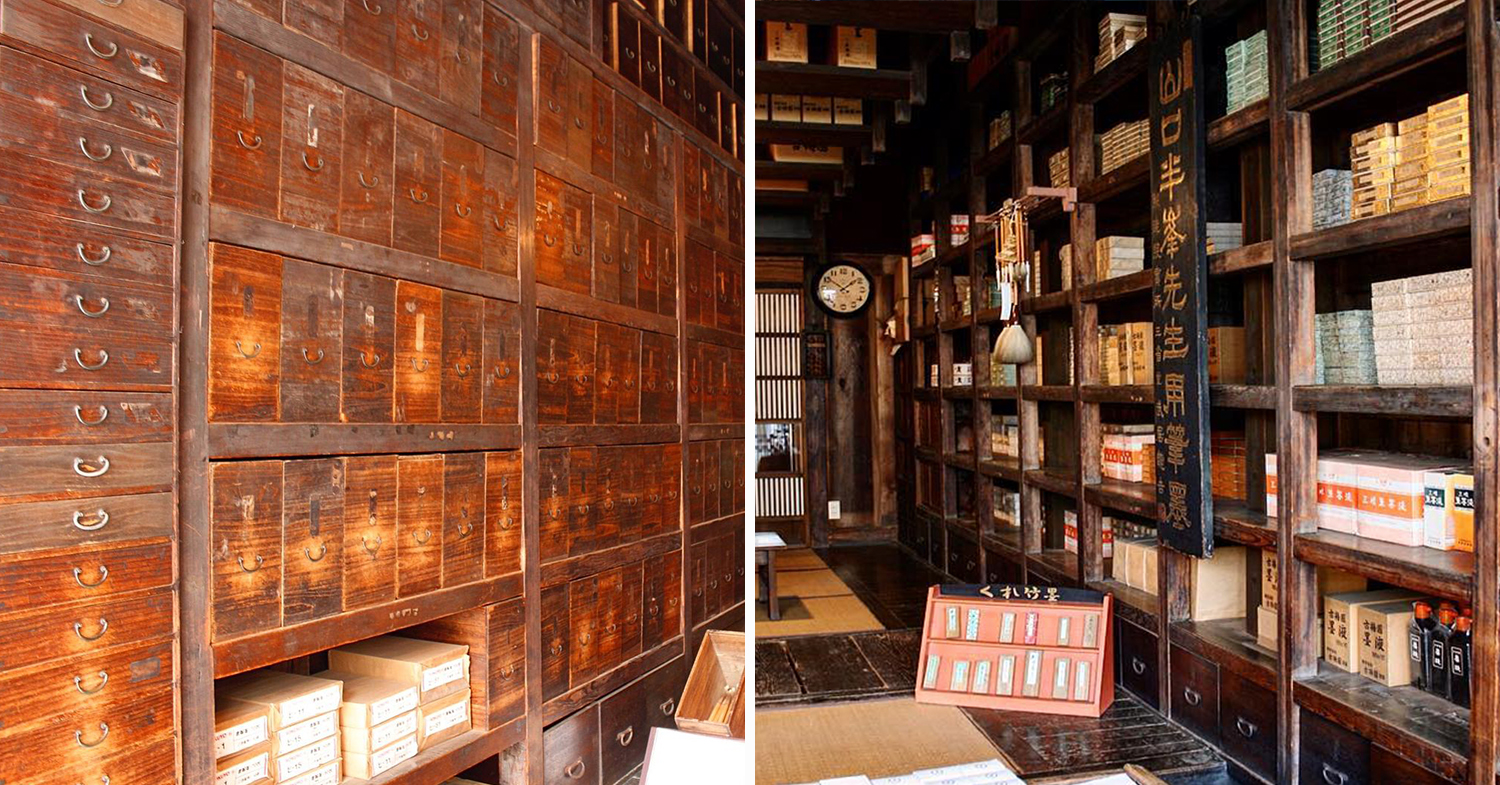
Image adapted from: @naga_0202 and @seiichiro1962 via Instagram
This stationery shop specialises in calligraphy tools and was established in the early Meiji period. Another hidden Ghibli reference here is the entire wall of cabinets that reaches up all the way to the ceiling, like what you’d find in traditional Chinese medicine shops.
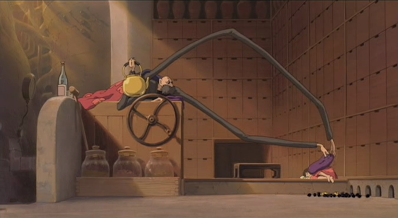
Image adapted from: STUDIO GHIBLI Inc
These cabinets are strikingly similar to Kamaji’s boiler room at Yubaba’s bathhouse. His six spider-like arms are a perfect fit for this job, or for putting a blanket on Chihiro from the other side of the room.
2. Lavish inspiration for Yubaba’s Bathhouse
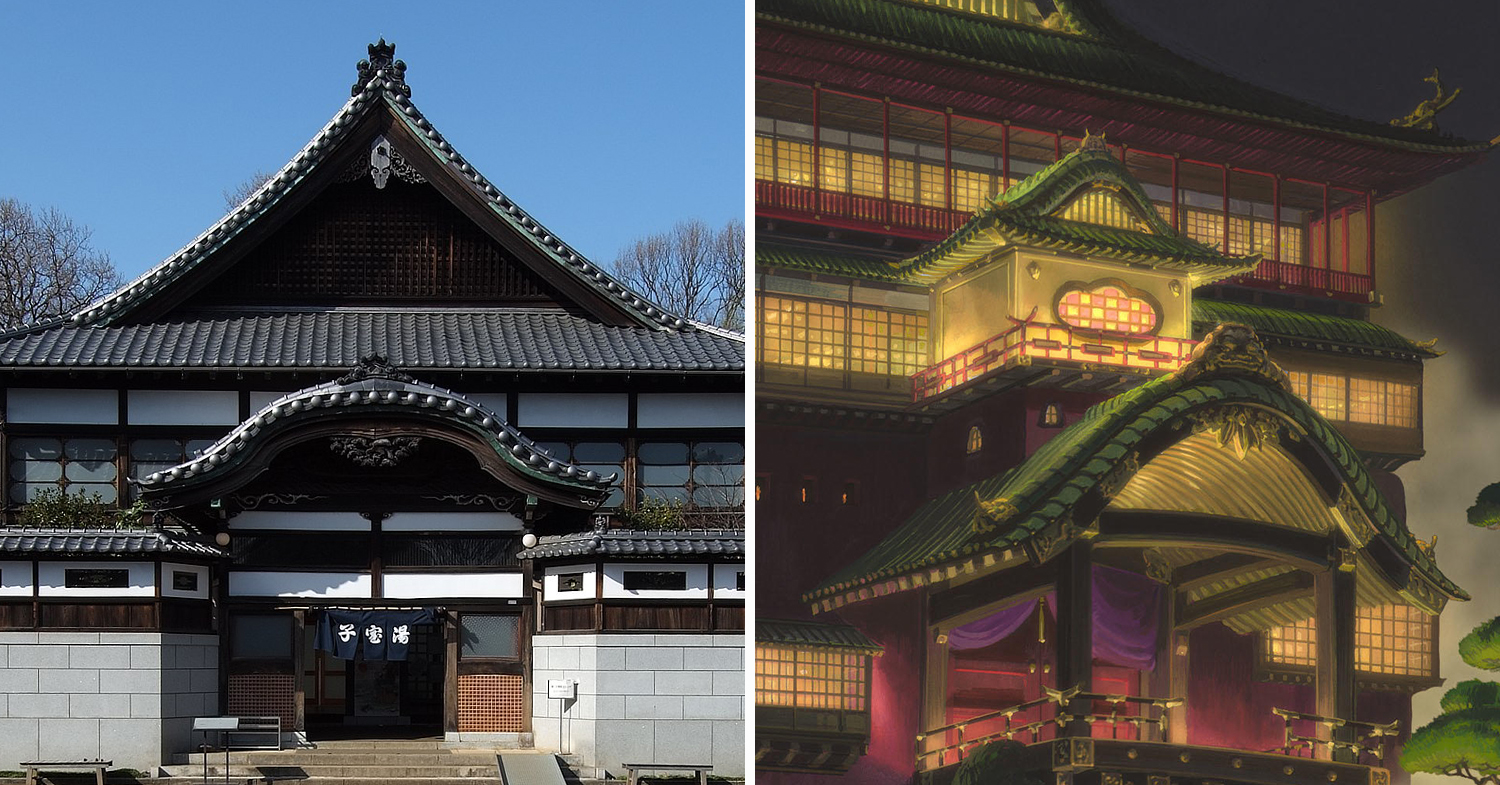
Image adapted from: Wiiii via Wikimedia and STUDIO GHIBLI Inc
Yubaba’s Bathhouse is known to be modelled after Dogo Onsen in Ehime Prefecture, but did you know its other source of inspiration is the Kodakara-yu Public Bathhouse at the end of East Zone’s downtown?
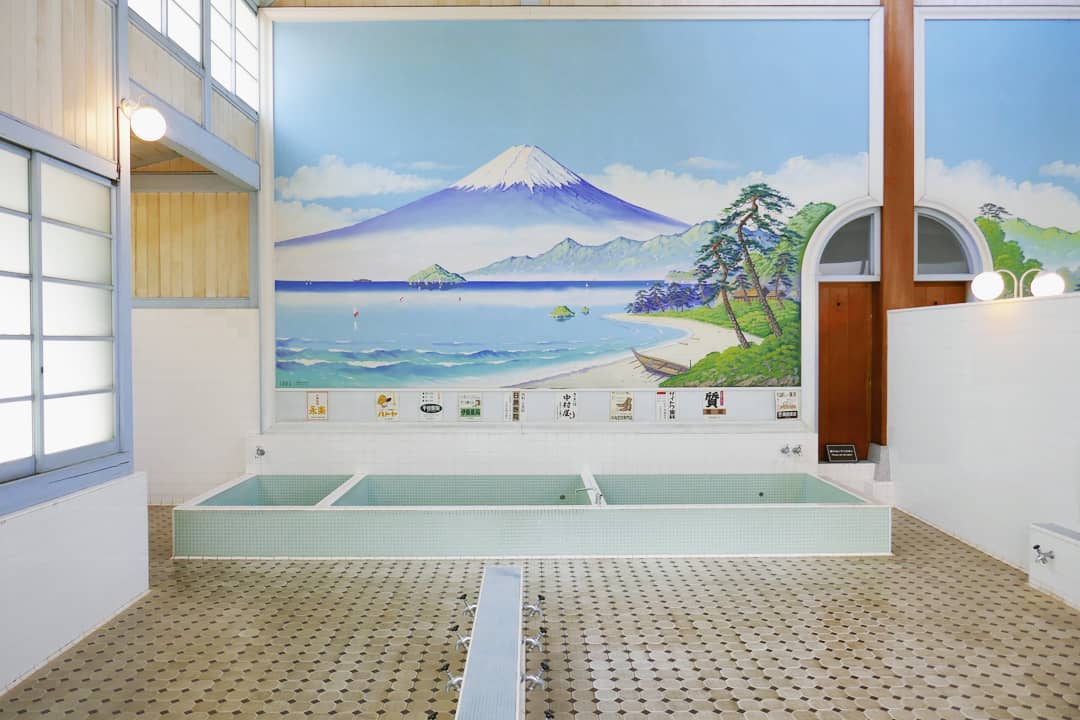
Image credit: @gamjaruwan via Instagram
Like a typical traditional Japanese public bath, Kodakara-yu features a humongous oil painting of Mount Fuji on the wall.
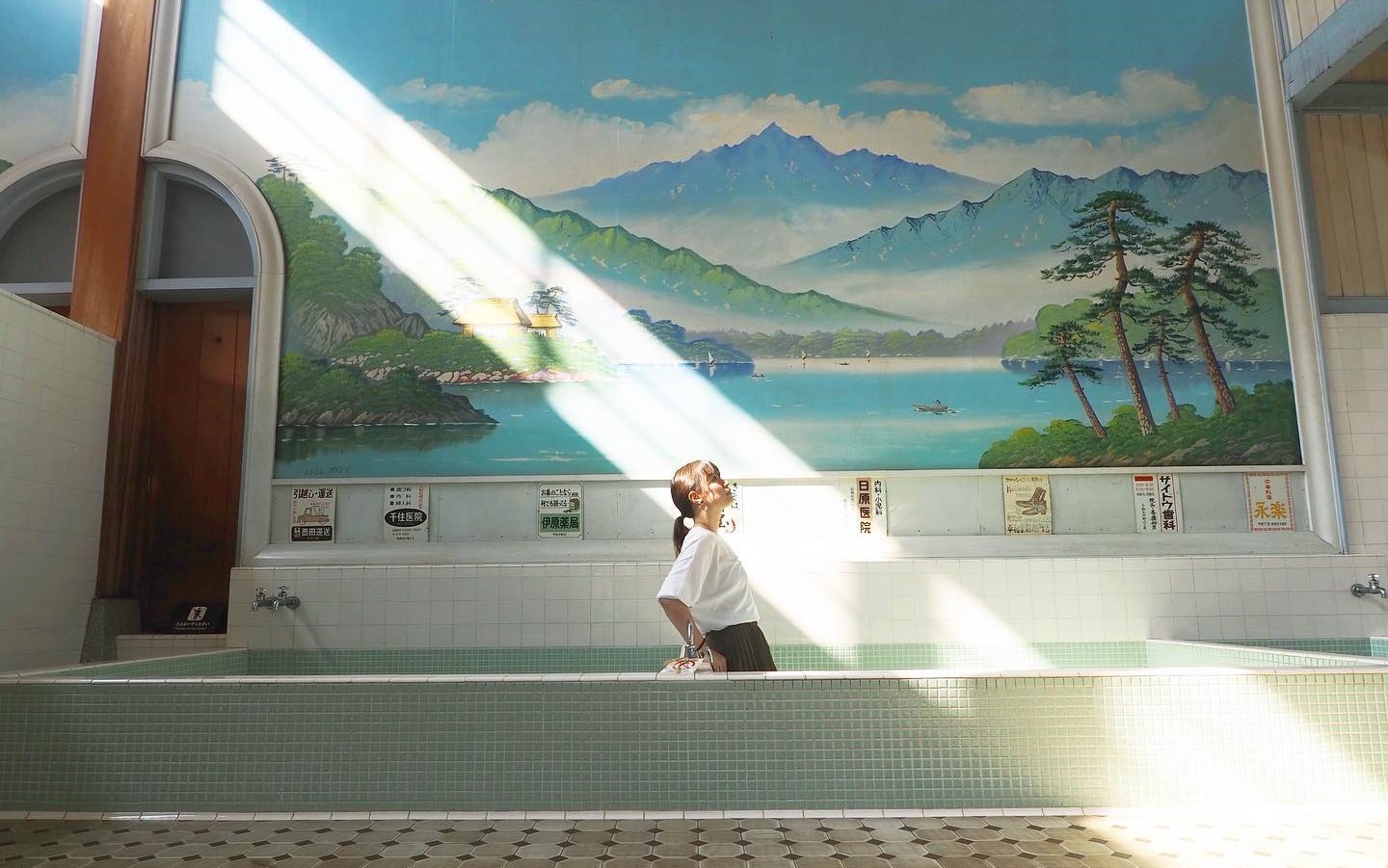
Image credit: @frejawang623 via Instagram
We recommend stepping into the bath and looking up at Mount Fuji above for your aesthetic immersive shot. If the timing is right, you might catch some sun rays too.
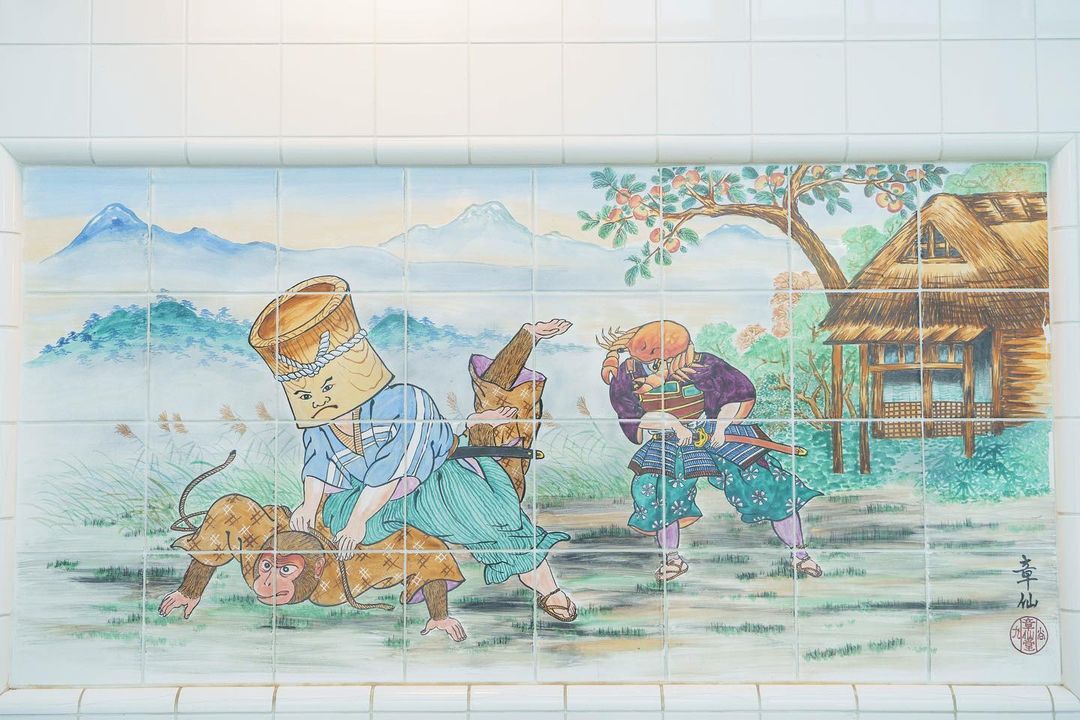
Image credit: @ennui_watashi via Instagram
This bathhouse couples a temple-like exterior with a luxurious interior. Right above the entrance, you’ll find painted walls carvings of the seven gods of good luck. The bathing area also has paintings depicting historical tales.
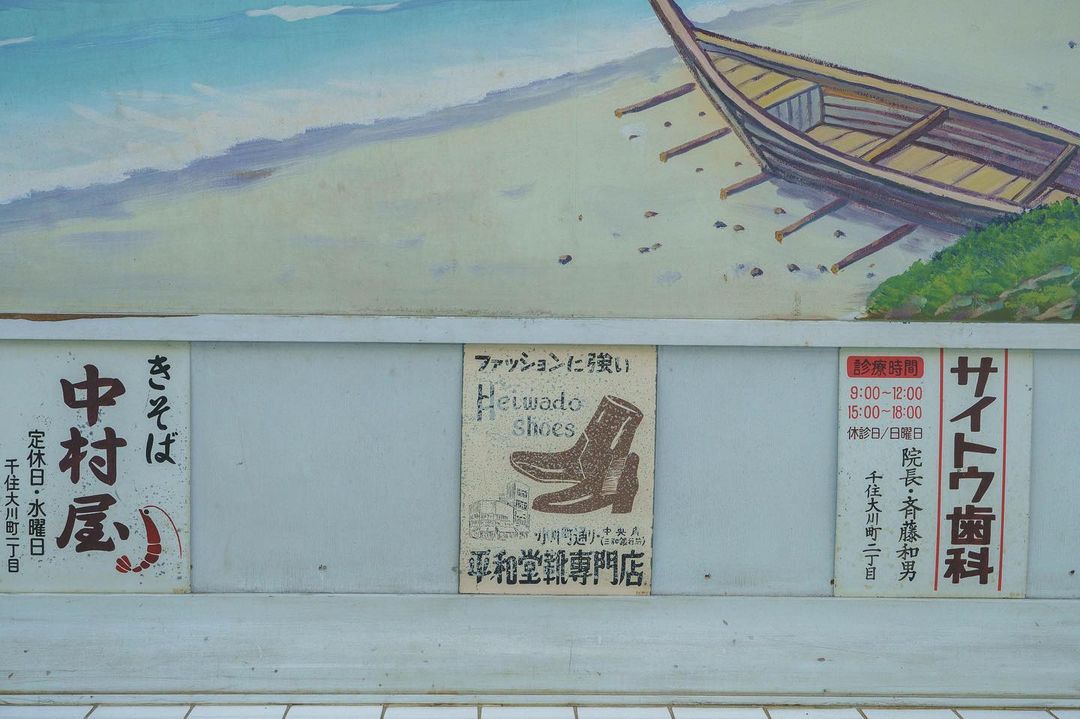
Image credit: @ennui_watashi via Instagram
It also features old advertisements for food and shopping places, as if it’s recommending you a Showa-style relaxation package.
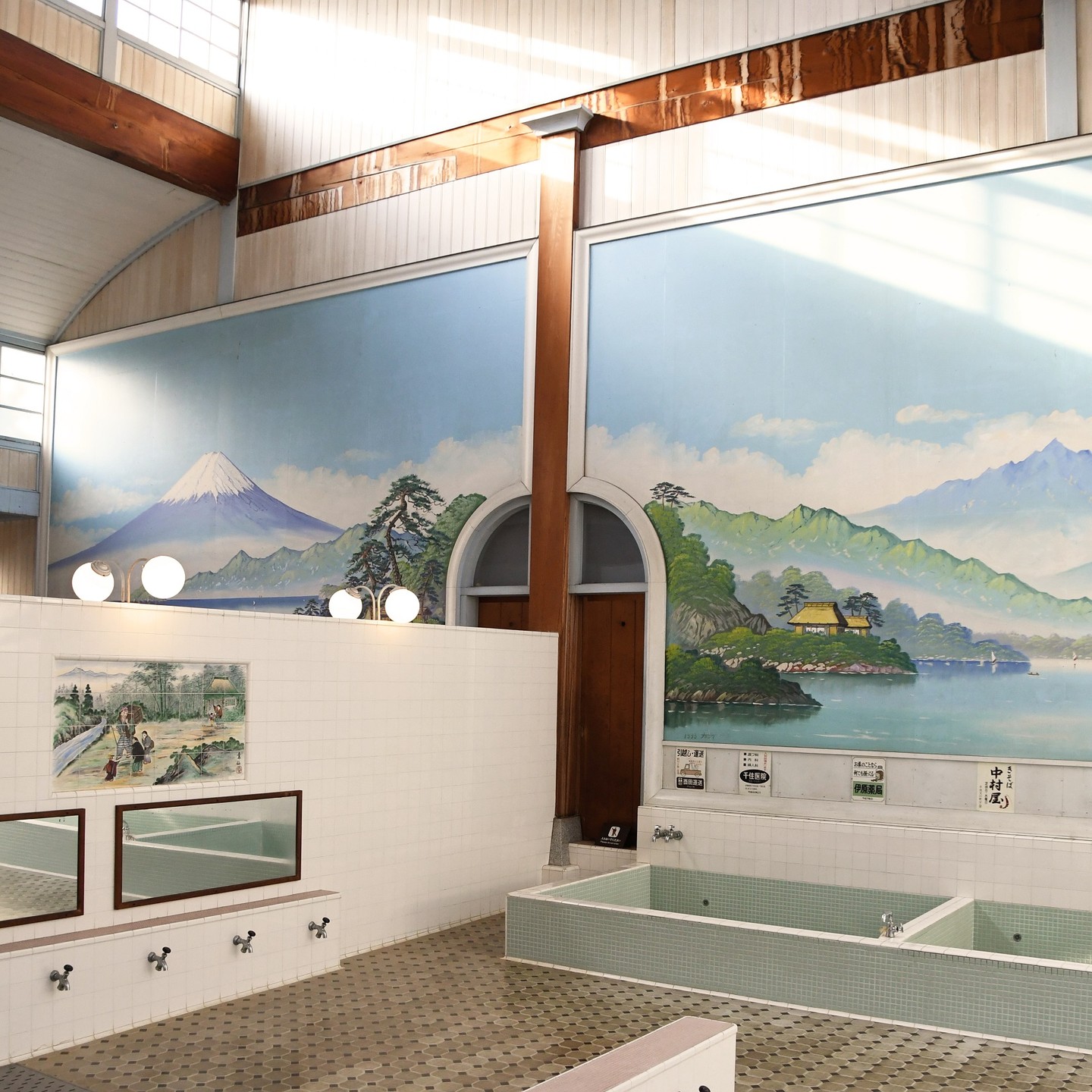
Image credit: @tatemonoen via Instagram
The stunning visuals of this bathhouse is the reason it served as inspiration for the multi-tainment complex that is Yubaba’s bathhouse.
3. Picture Chihiro and No Face On City Train Model 7500
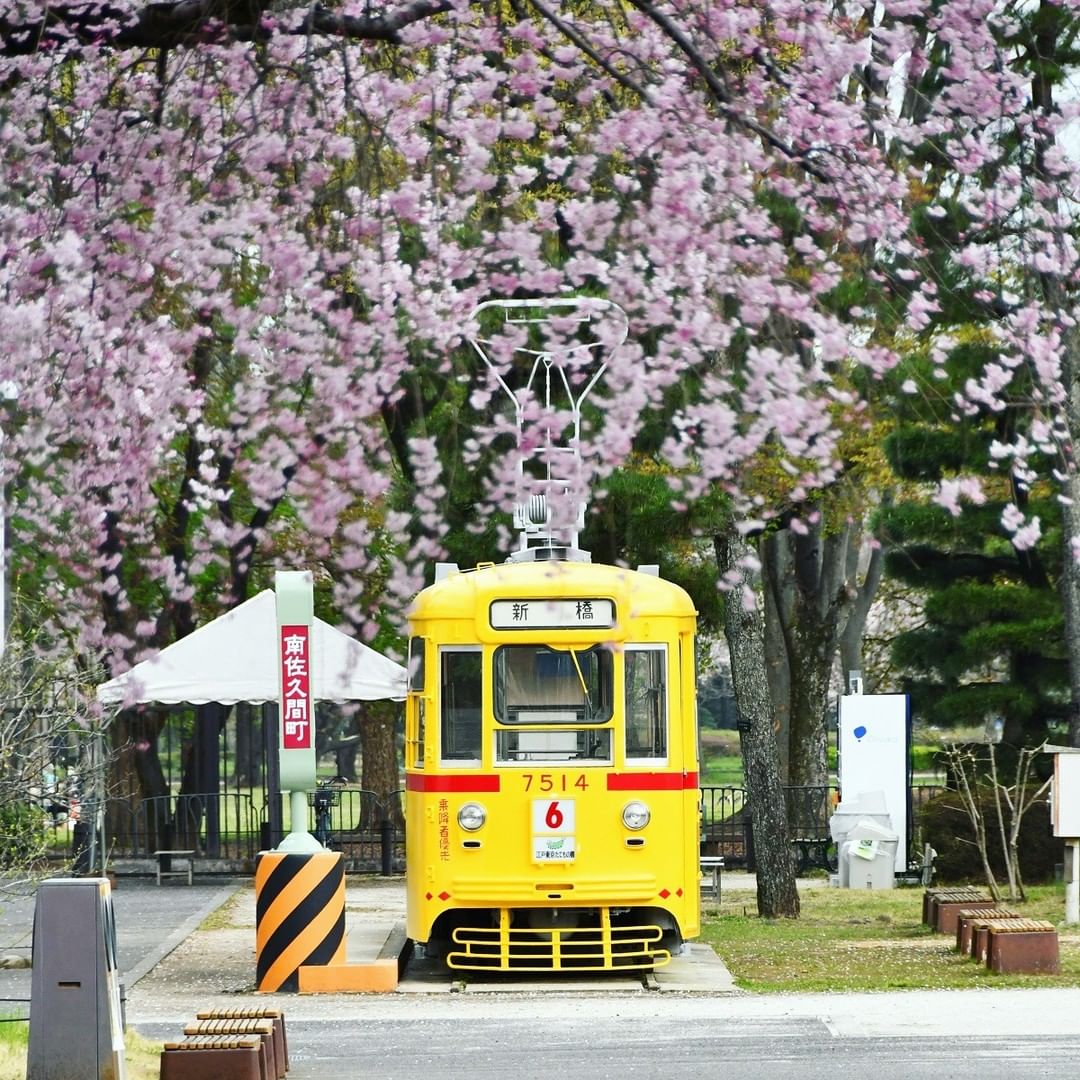
Image credit: @tatemonoen via Instagram
This city tram in the East Zone is a popular photo spot during sakura season. You can take photos of the tram with the sakura, or of yourself peering out from the tram.
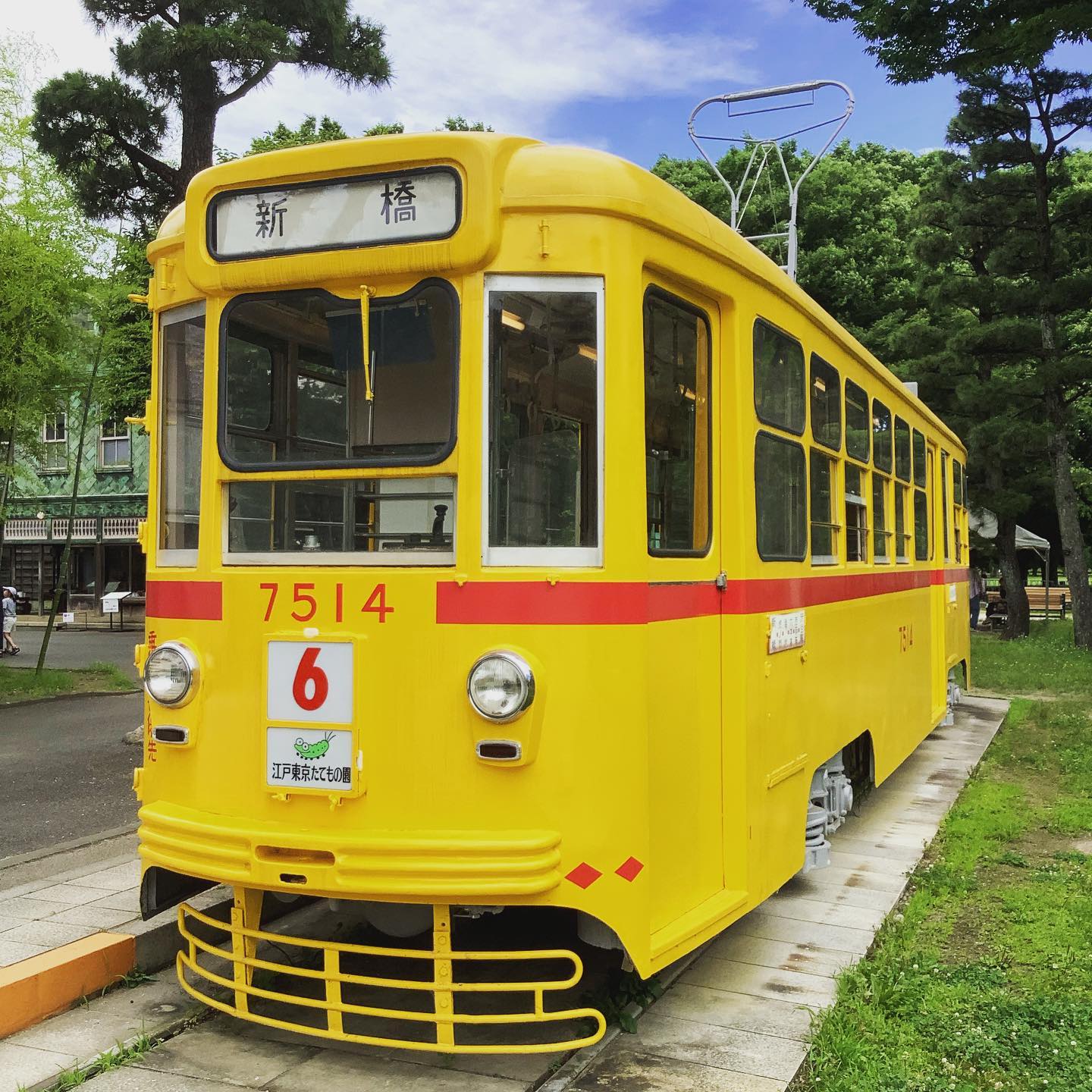
Image credit: @msto330 via Instagram
Made in 1962, it served passengers along Shibuya Station, Shinbashi, Hamacho-nakanohashi, and Suda-cho.
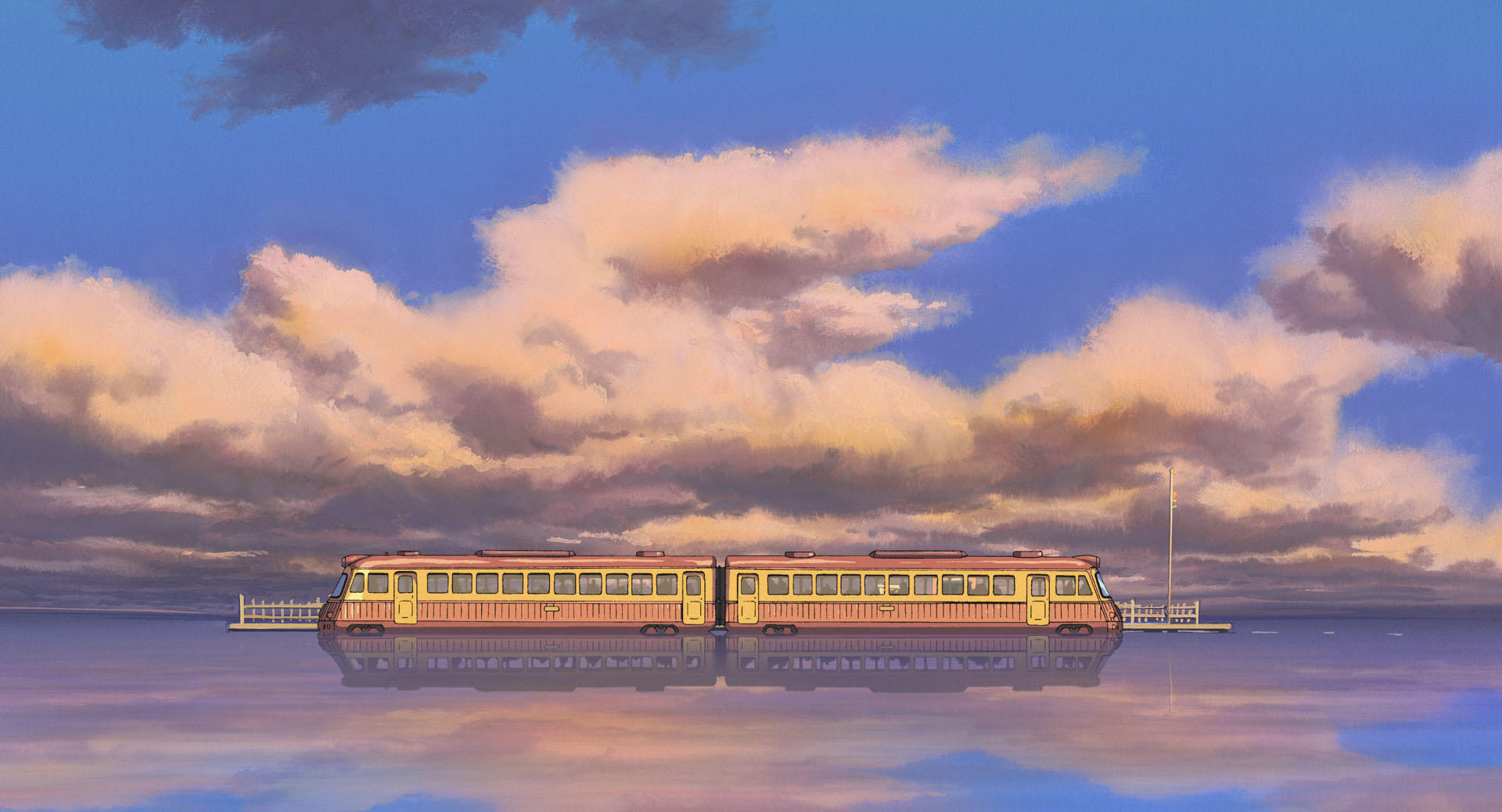
Image credit: STUDIO GHIBLI Inc
Although Tokyo slowly moved on from streetcars to trains from 1963, this model still serves on the only public tram line still in operation – the Arakawa line between Yanagishima and Tokyo.
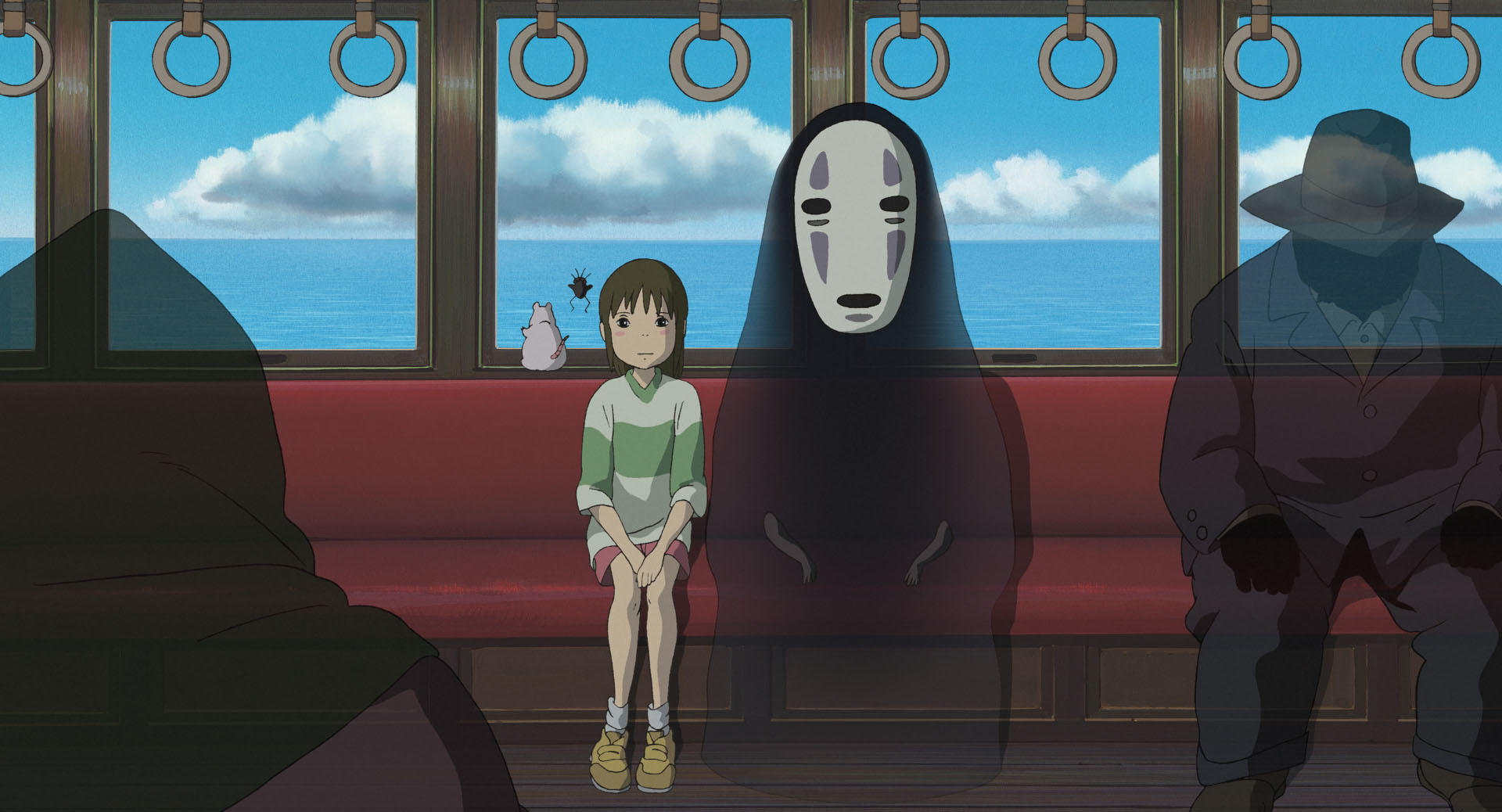
Image credit: STUDIO GHIBLI Inc
You can almost imagine Chihiro and No Face travelling onboard in the stillness, just like in Spirited Away.
4. Bathe in the nostalgic sunset that moved Hayao Miyazaki
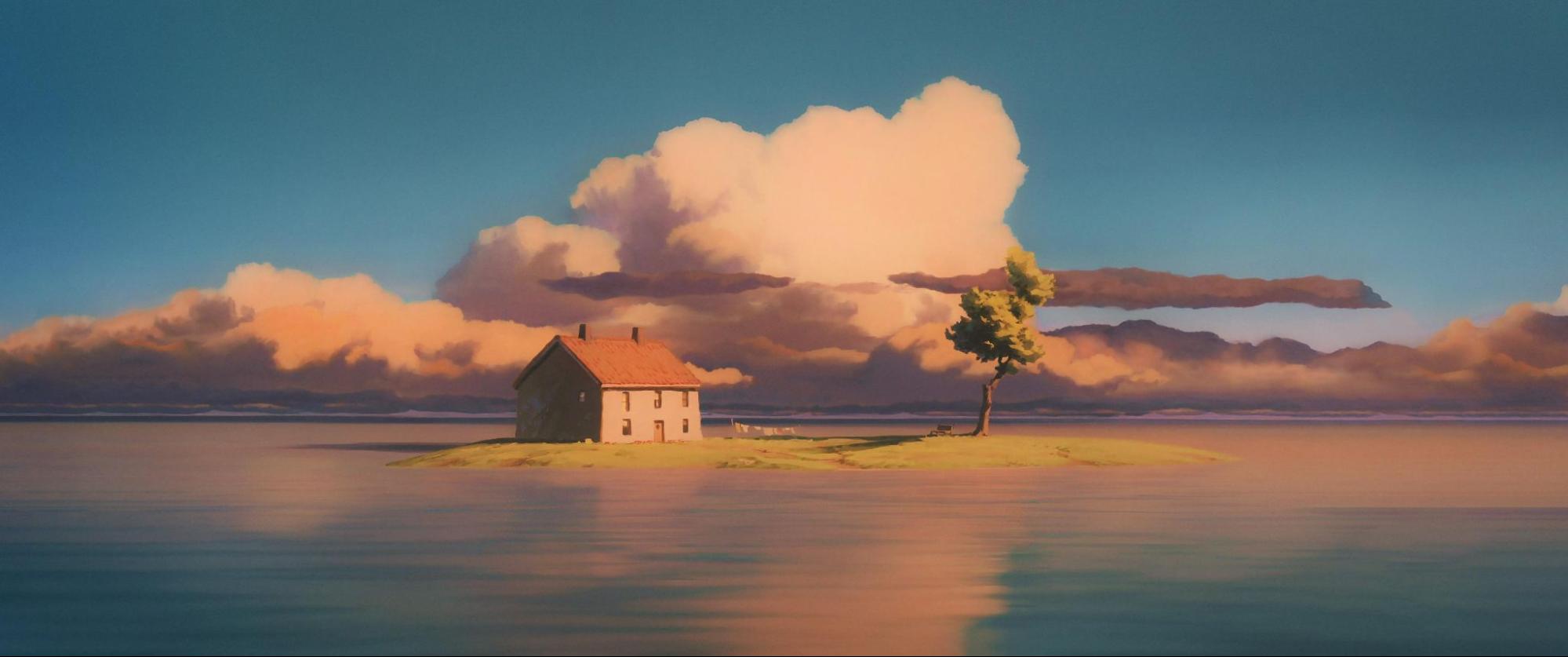
Image credit: STUDIO GHIBLI Inc
Miyazaki would spend hours reminiscing about Japan’s past in Tatemono-en. “I feel nostalgic here, especially when I stand here alone in the evening, near closing time, and the sun is setting – tears well up in my eyes,” he said.
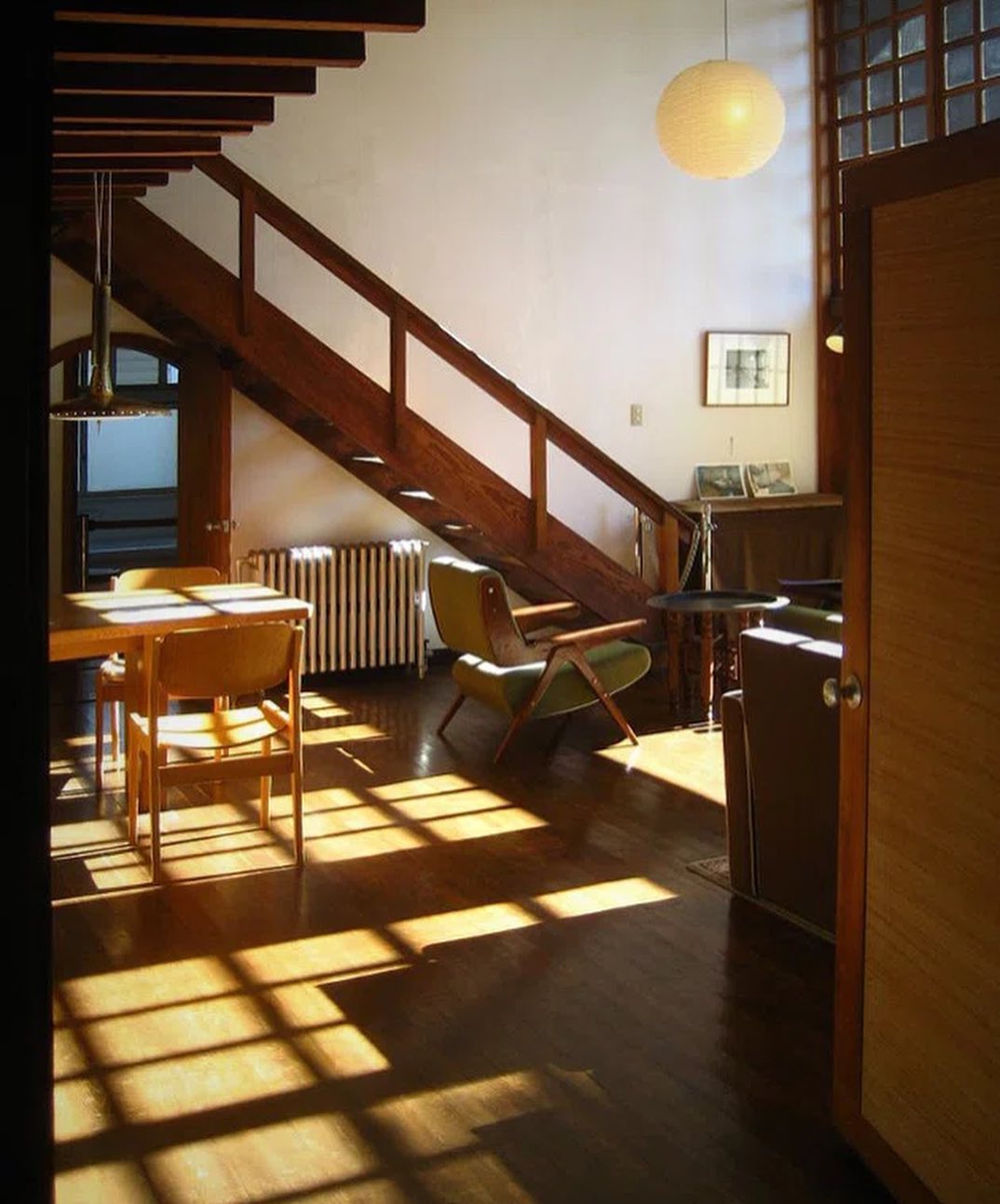
Image credit: @morentz_gallery via Instagram
Perhaps Miyazaki sat in the house of Kunio Maekawa as he bid the sun goodbye. The nostalgia definitely translated well to the whimsical and emotional films he has created that became fond childhood memories for generations after.
And maybe these clues we’ve left you with will inspire your next artistic venture too.
Reimagine thatched houses of wealth and prestige
While thatched houses are usually home to poverty-ridden characters in historical films, the restored buildings in the West Zone offer a different angle to this trope.
1. Farmhouse of the Tsunashima Family
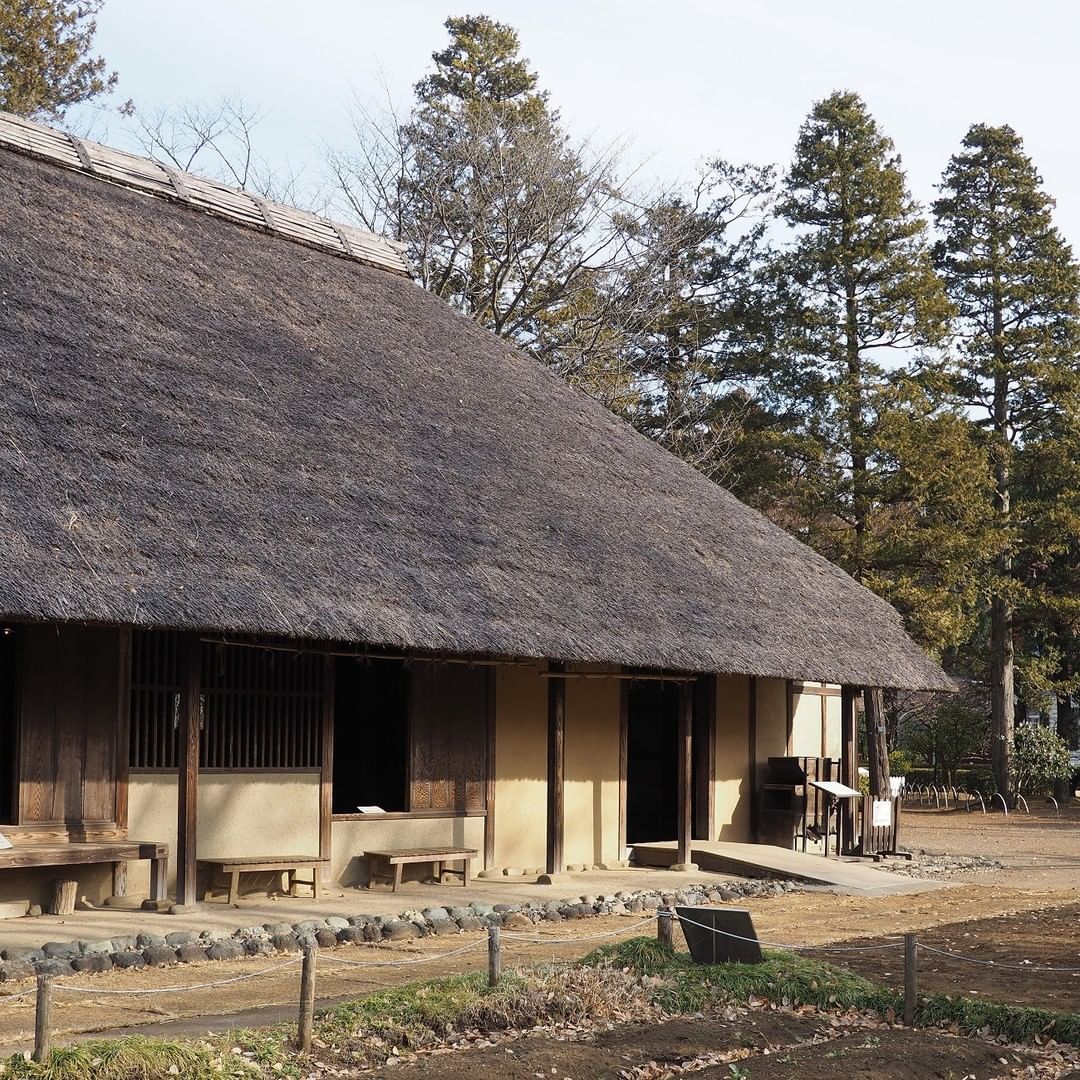
Image credit: @tatemonoen via Instagram
The Tsunashima Family Farmhouse comes with the classic thatched roof of Edo era farmhouses, but is paired with a large hall. This farmhouse was built on a plateau by the Tama River, which was a vital life source for people of Edo-Tokyo for drinking water and trade.
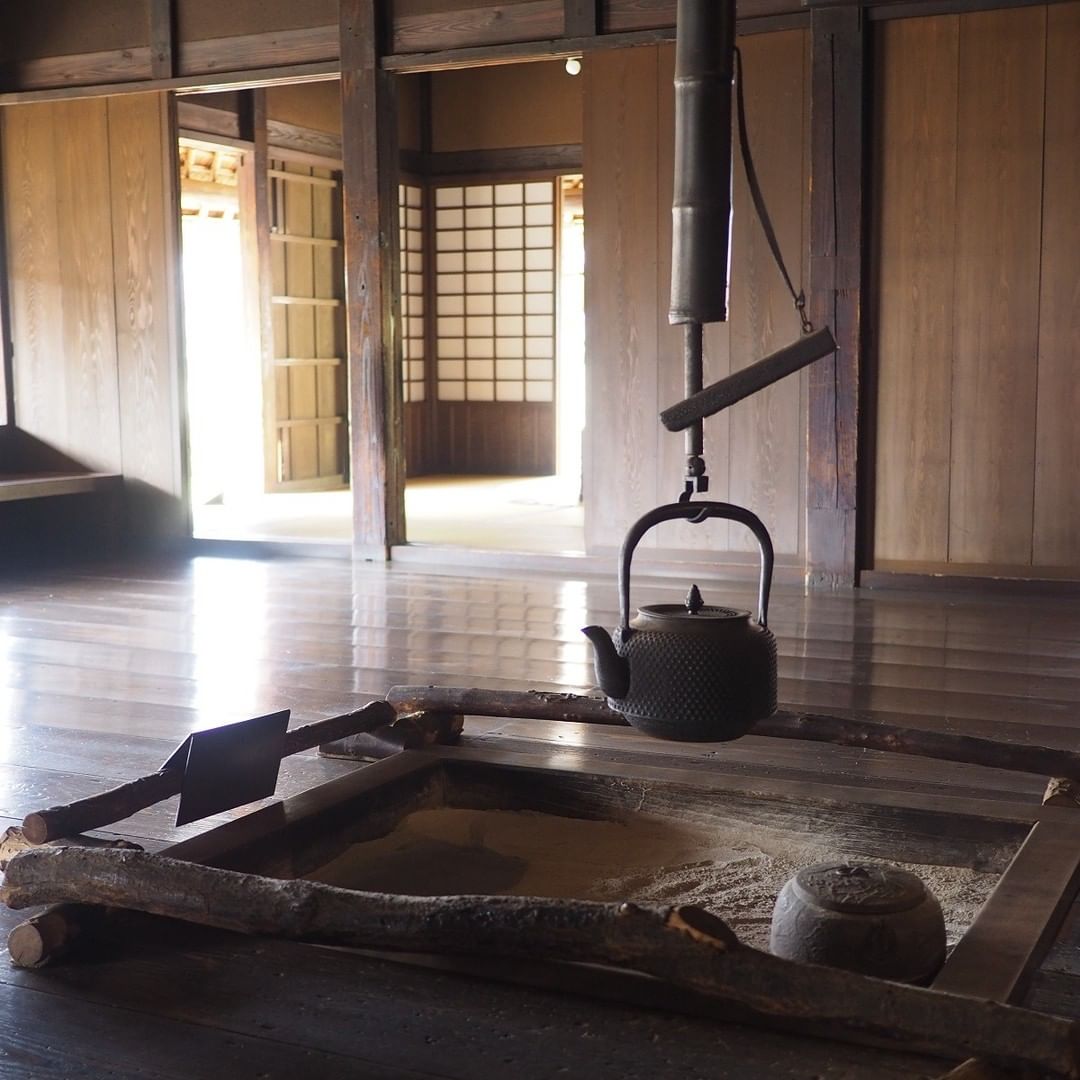
Image credit: @tatemonoen via Instagram
Sunlight shines through wooden slates in the walls onto the tea kettle hanging from the ceiling, enveloping visitors in a peaceful ambience.
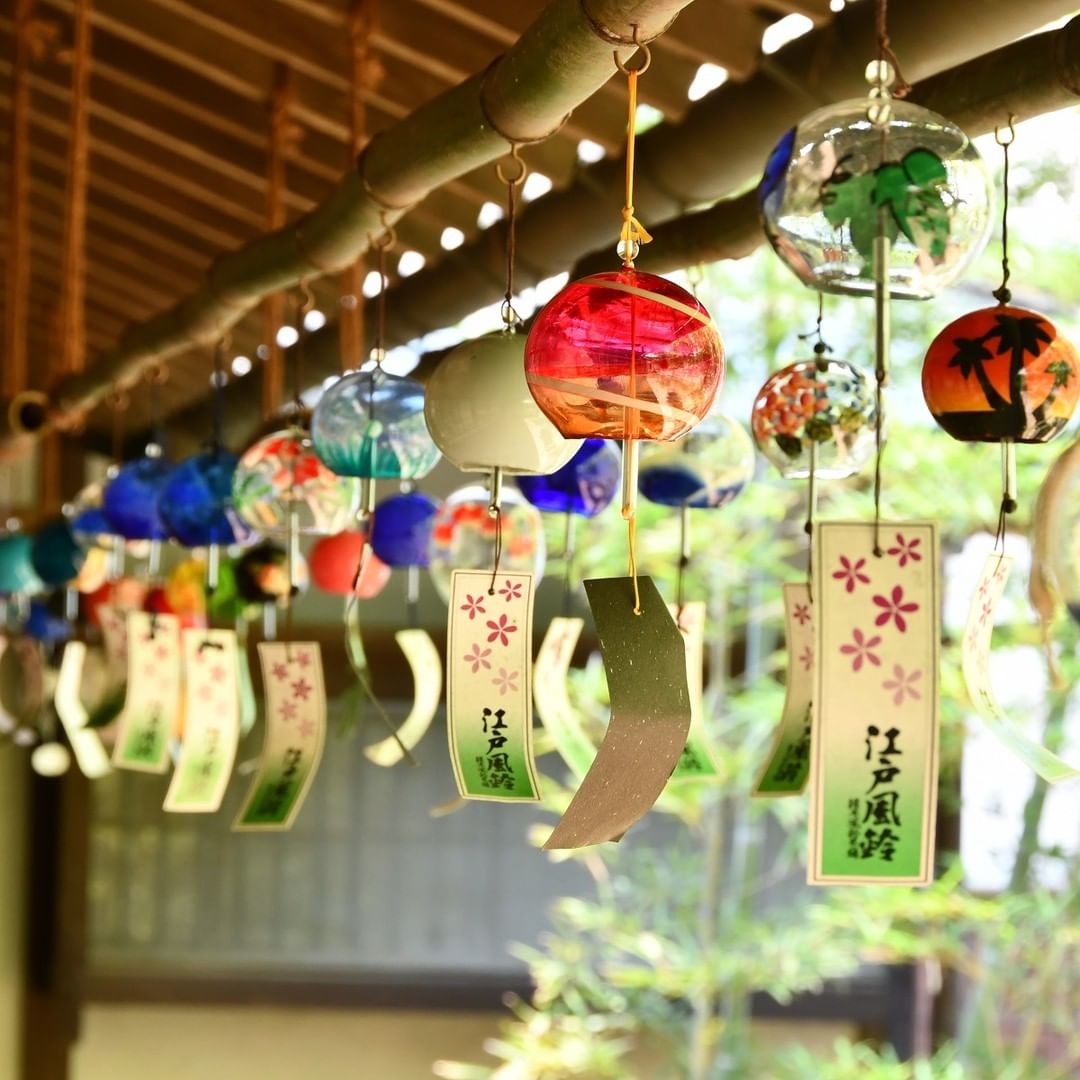
Image credit: @tatemonoen via Instagram
This farmhouse looks different depending on when you visit; expect decorations for otsukimi (お月見; moon viewing) parties in autumn and setsubun (節分; partition of seasons) celebrations at the start of spring. The museum recreates traditional events here based on interviews with the Tsunashima family.
2. House of the Leader of the Hachioji Guards
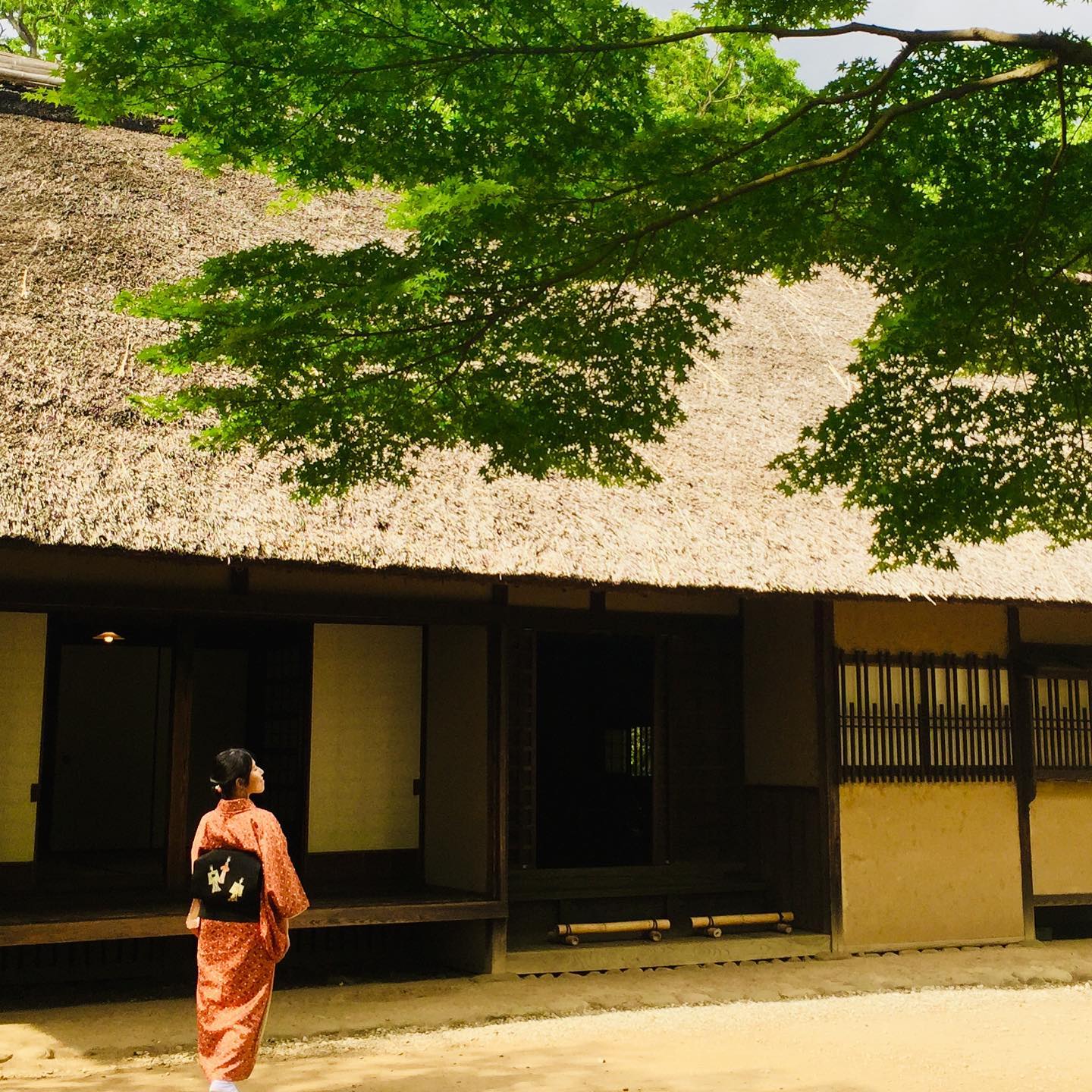
Image credit: @d.4580 via Instagram
Also known as the Hachioji Thousand Warriors, the Hachioji Guards were the retainers of the Tokugawa shogunate in the Edo period. In exchange for providing military protection to the shogunate, retainers were paid a fixed stipend and allotted resources such as rice and land.
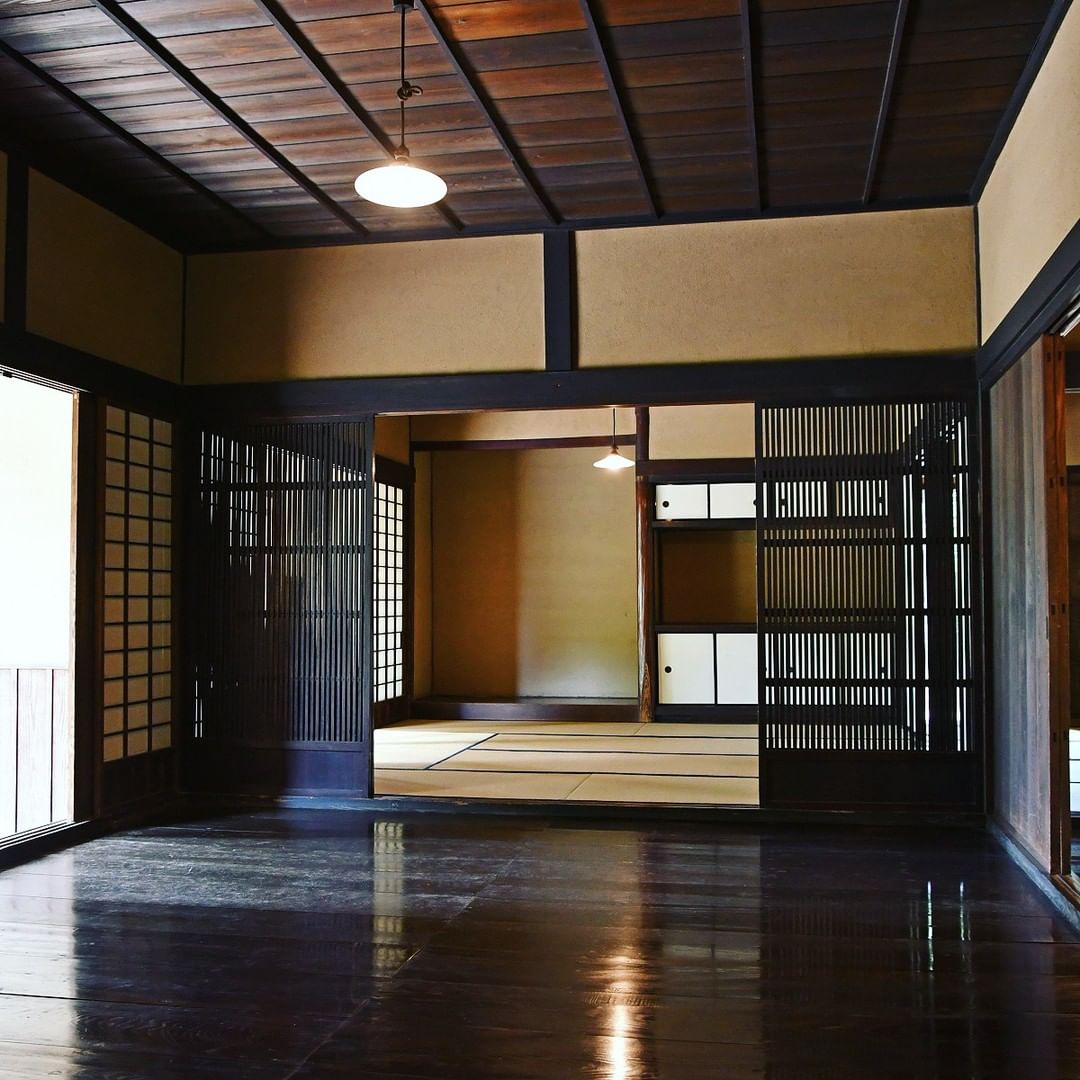
Image credit: @tatemonoen via Instagram
This house was built on the very land bestowed to the Leader of the Guards by the shogun.
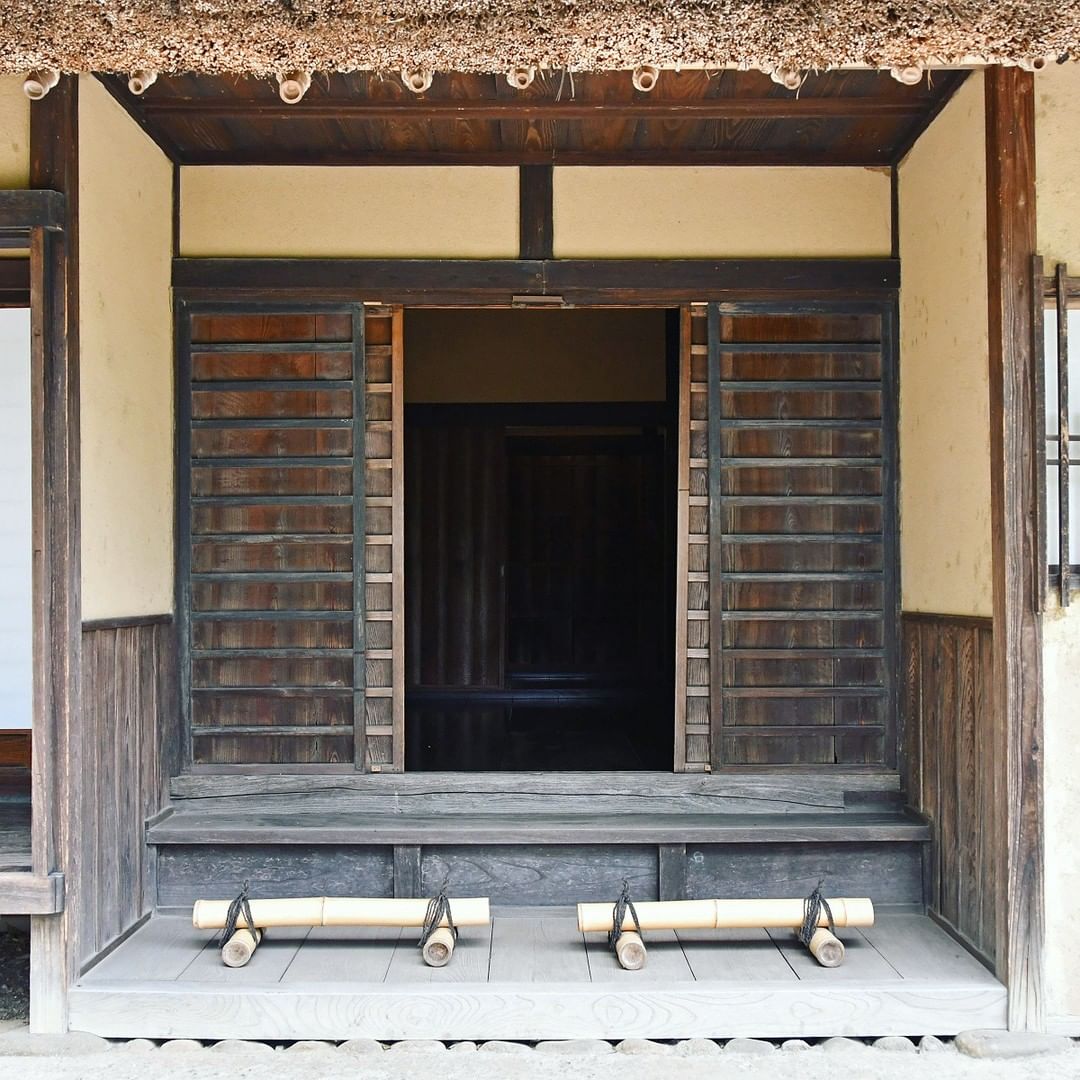
Image credit: @tatemonoen via Instagram
While not as sizable as the surrounding thatched houses, this house boasts an entrance hall with a shikidai (式台; broad wooden step which is typical of upper-class houses), marking it as a house of prestige.
Be awed by creative blends of architectural styles
Still within the West zone, you’ll find houses that display innovative combinations of modernity and tradition. These buildings were designed by Japanese architects who were inspired by Western modernist architecture.
1. House of Kunio Mayekawa
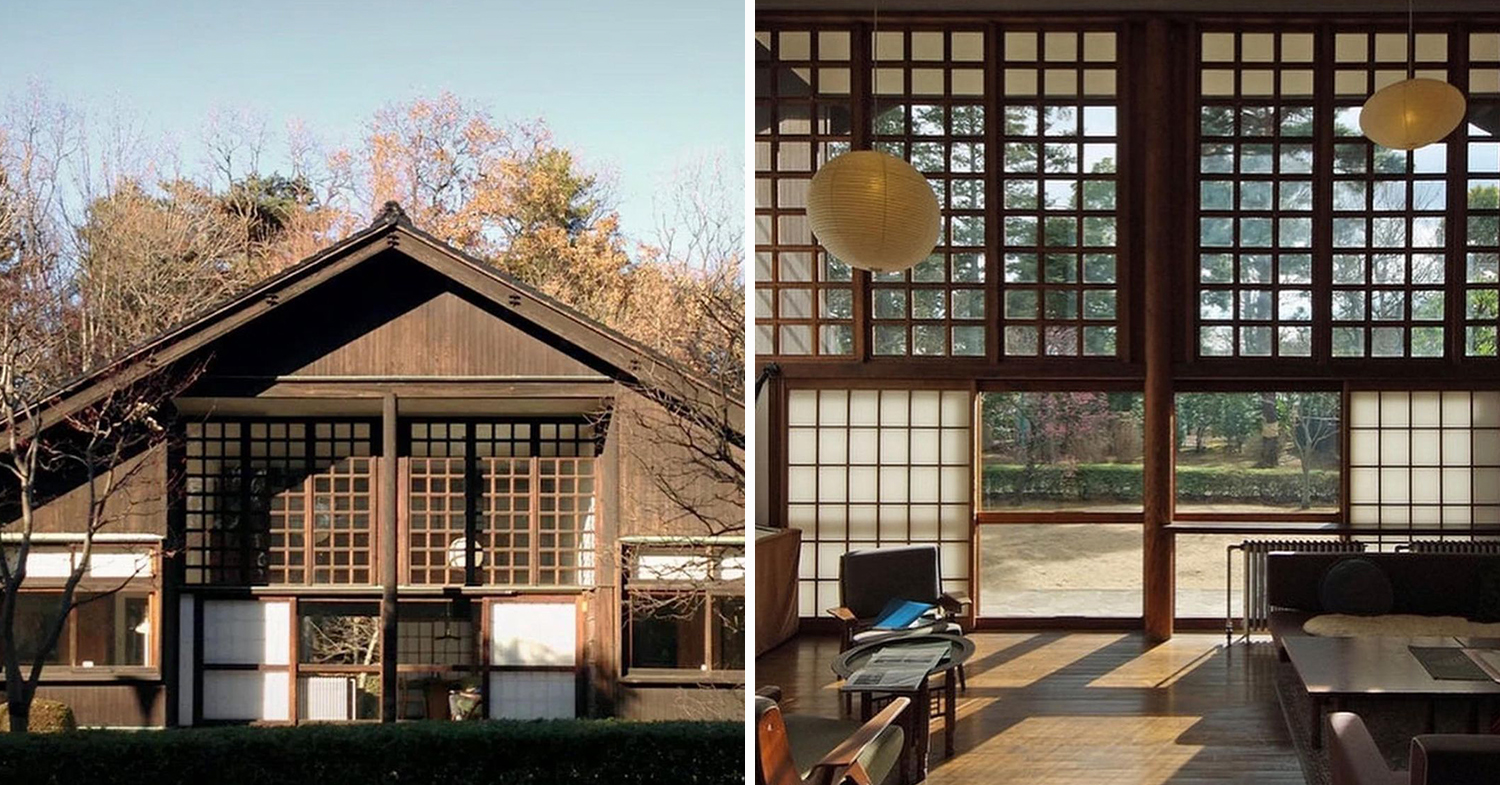
Image adapted from: @morentz_gallery via Instagram
This house was built in 1942 by Kunio Maekawa, who contributed to Japan’s shift to modernist architecture. The combination of Japanese-style gabled roofs and window lattices exude a sense of simple elegance.
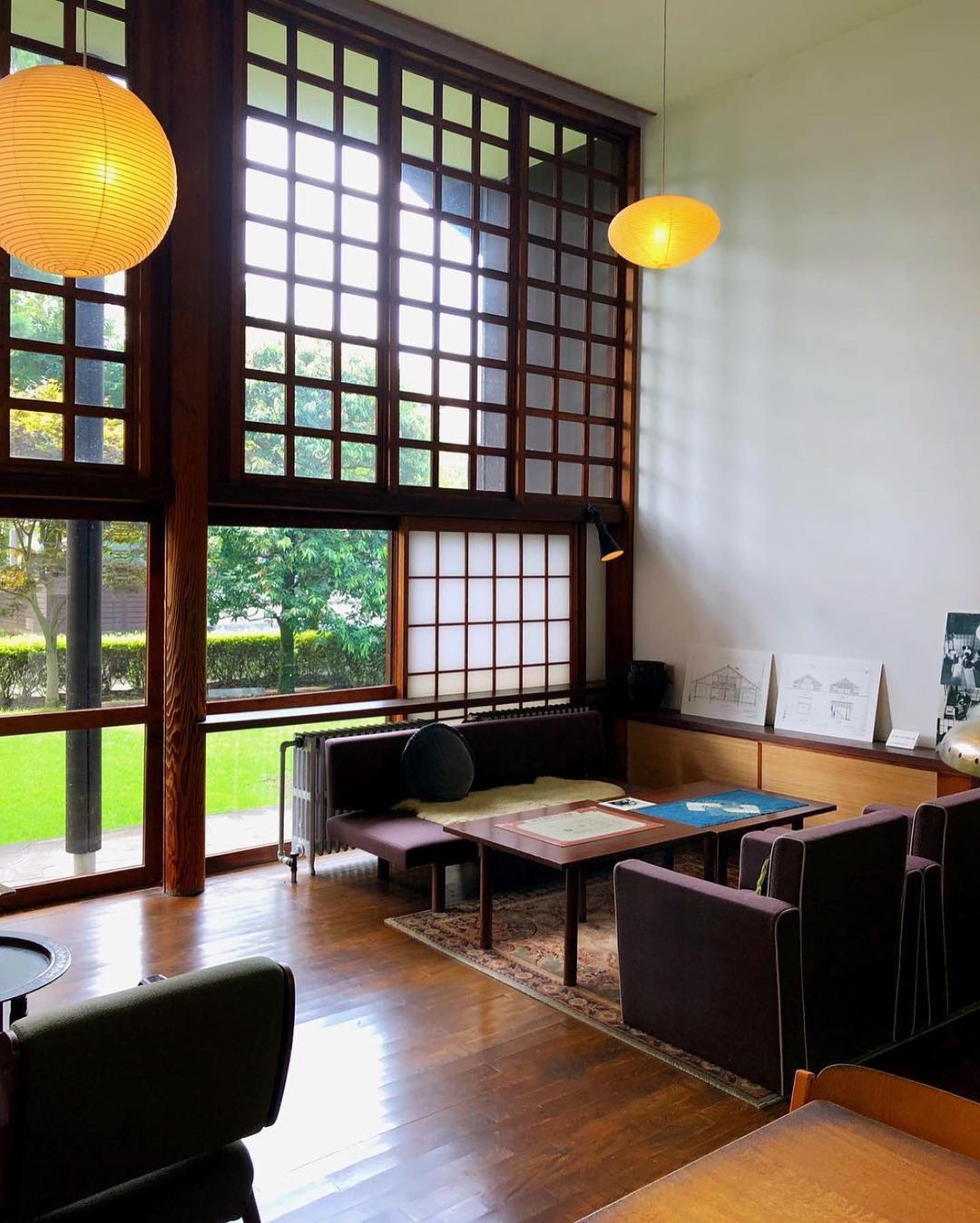
Image credit: @haus_oft via Instagram
Maekawa is well-known for designing the National Museum of Modern Art, Tokyo. His style focused on combining his European learnings with Japanese tradition.
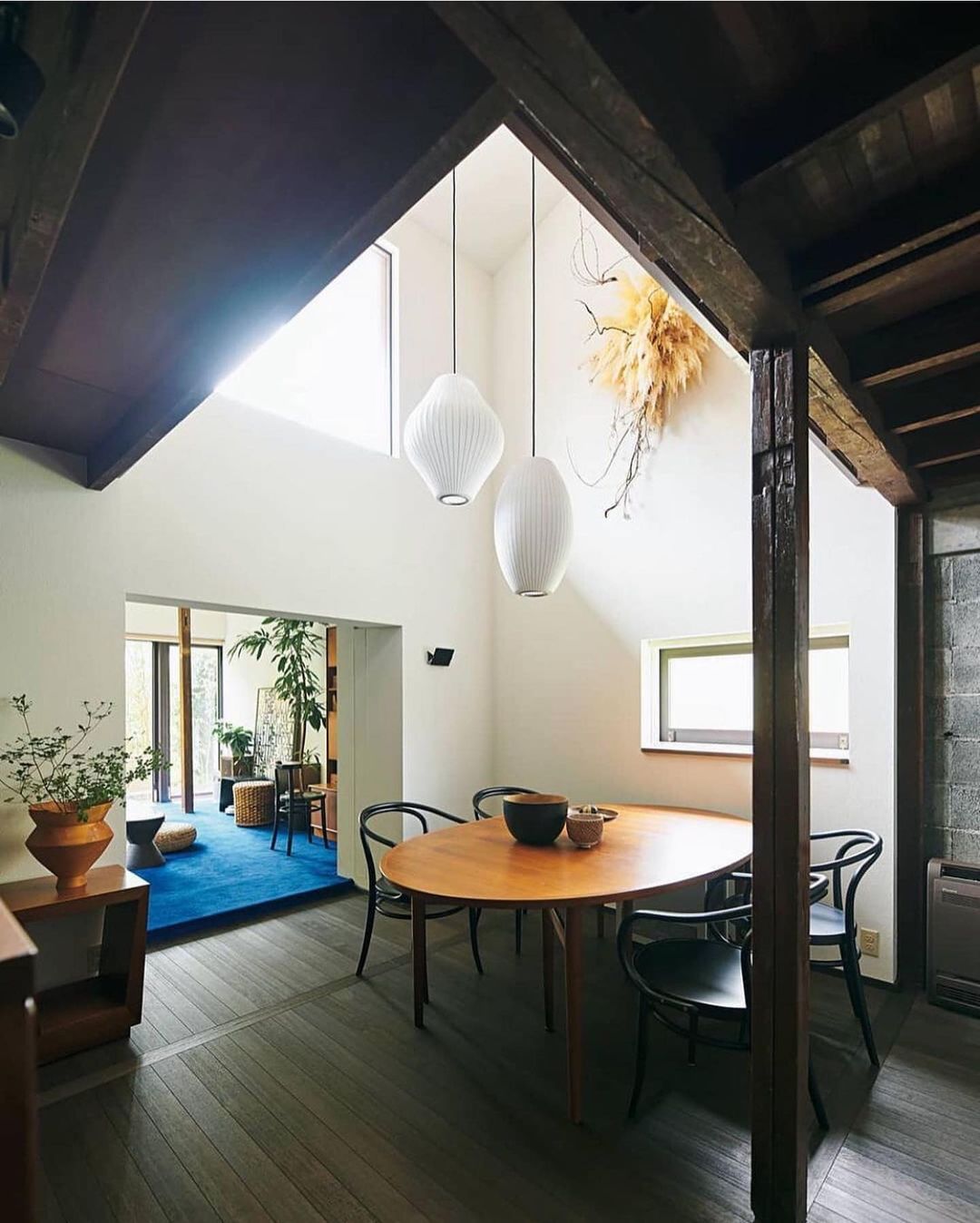
Image credit: @haus_oft via Instagram
Due to the difficulty in procuring steel during the Second World War, the house was constructed primarily from wood. Despite the logistical limitations, this two-storey house was designed for comfortable living and includes a study, bedrooms, and a living room with a vaulted ceiling.
2. House of Okawa in Den’enchofu
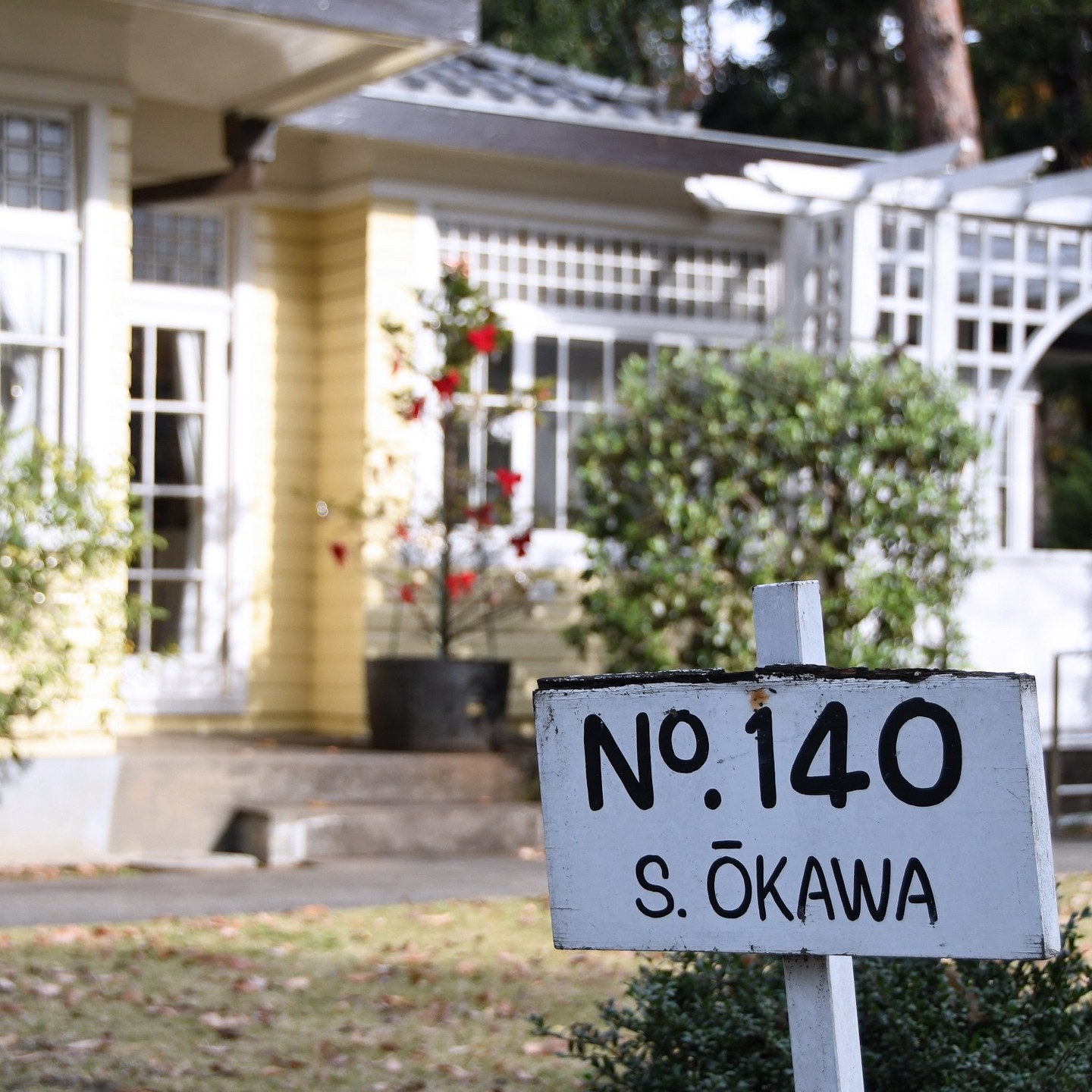
Image credit: @tatemonoen via Instagram
The house of Okawa was built in 1925 entirely in Western style architecture, which was very rare back in the early 20th century.
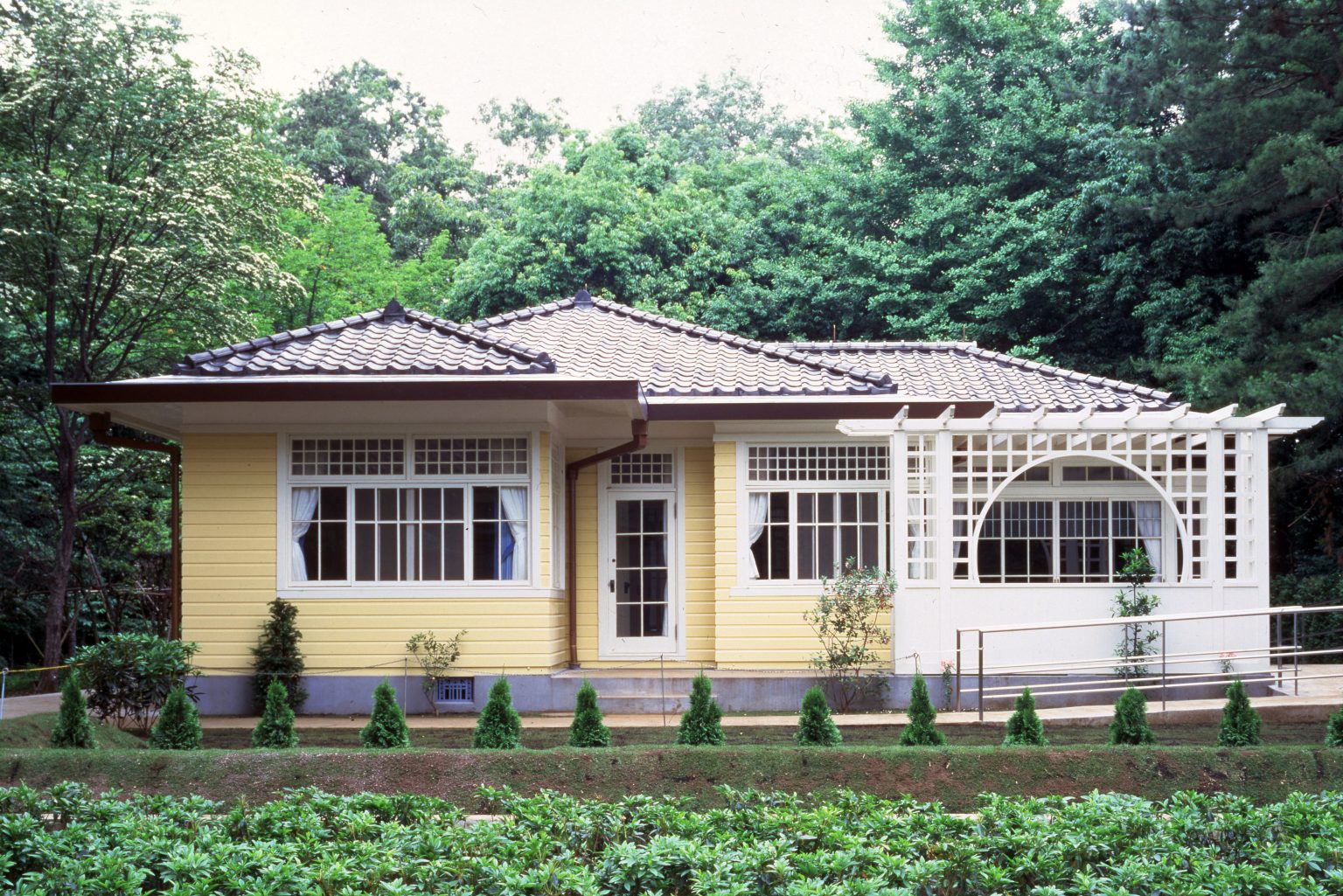
Image credit: Tokyo Museum Collection
What’s cooler about the house is actually its previous location: Den’enchofu is one of Tokyo’s first residential suburbs modelled after Greater London’s “Garden City” concept.
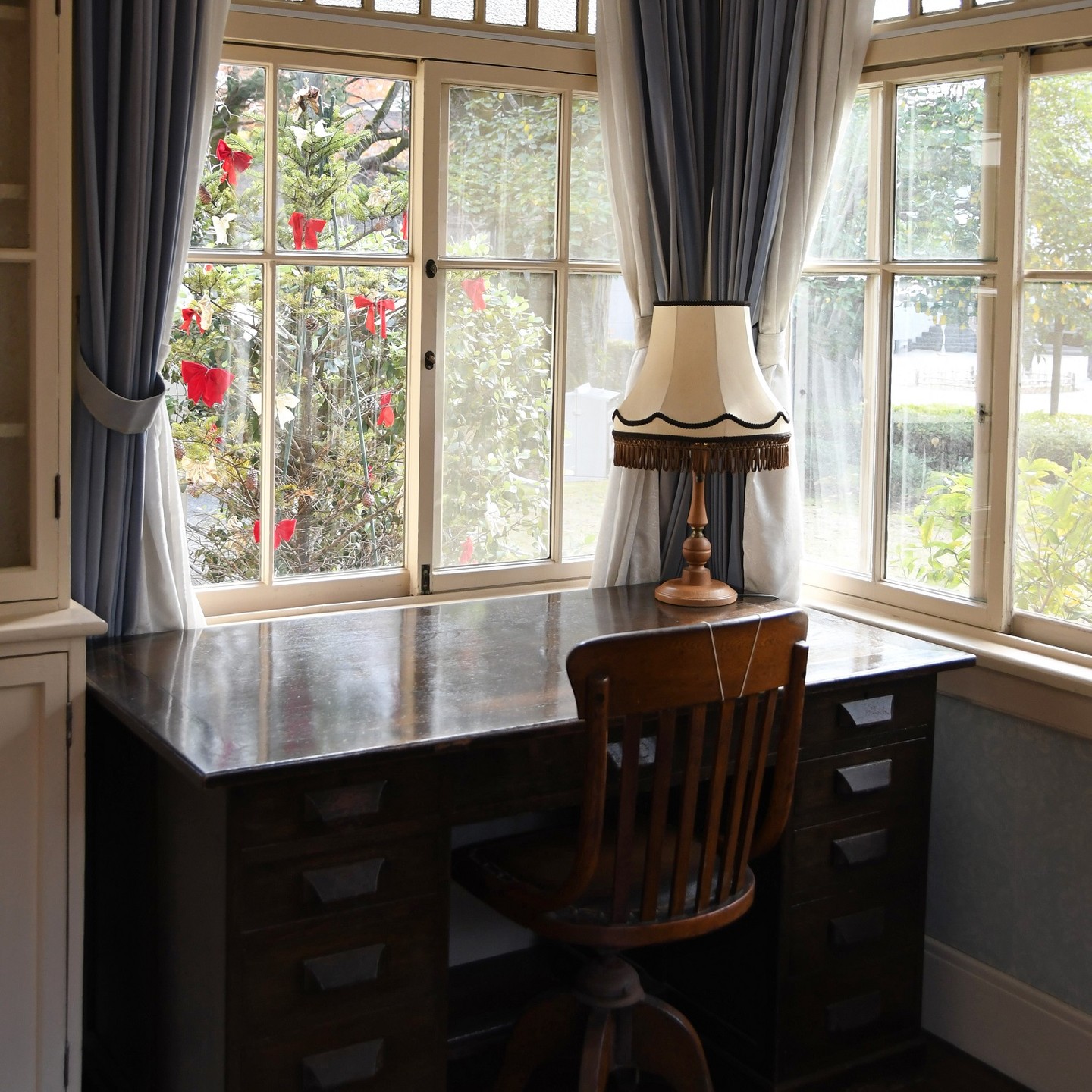
Image credit: @tatemonoen via Instagram
Den’enchofu was designed by Shibusawa Eiichi, the “father of Japanese capitalism”. Now, the area is considered the “Beverly Hills of Japan”, because residences there are a lot grander and significantly more expensive than other areas in Japan.
3. House of Koide
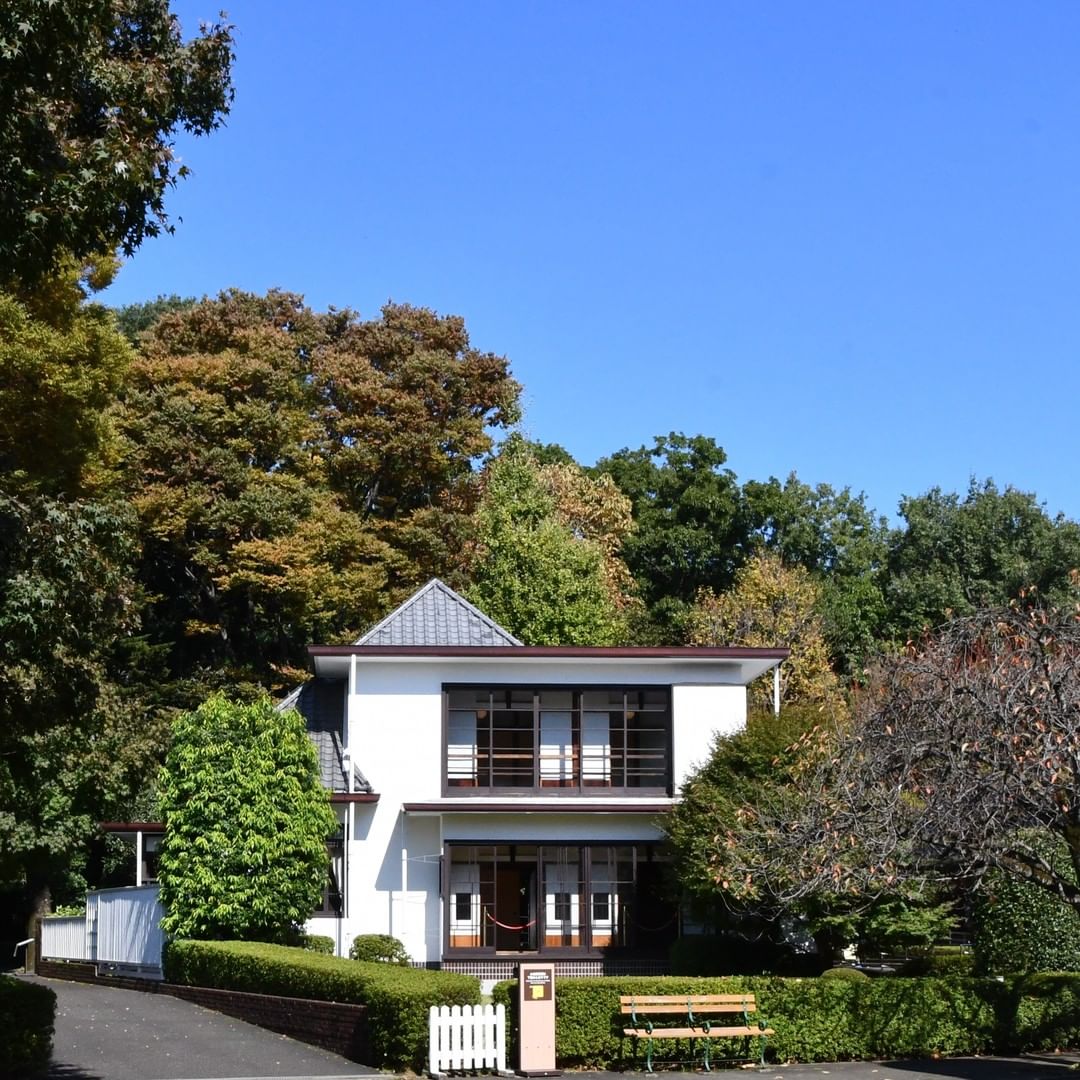
Image credit: @tatemonoen via Instagram
Also built in 1925, the House of Koide is a wooden two-storey house intended as a family retreat for businessman Koide and his wife Koto. The building is considered the debut work of modernist architect Sutemi Horiguchi, who designed it right after his trip from Europe, which inspired the combination of Dutch and Japanese styles.
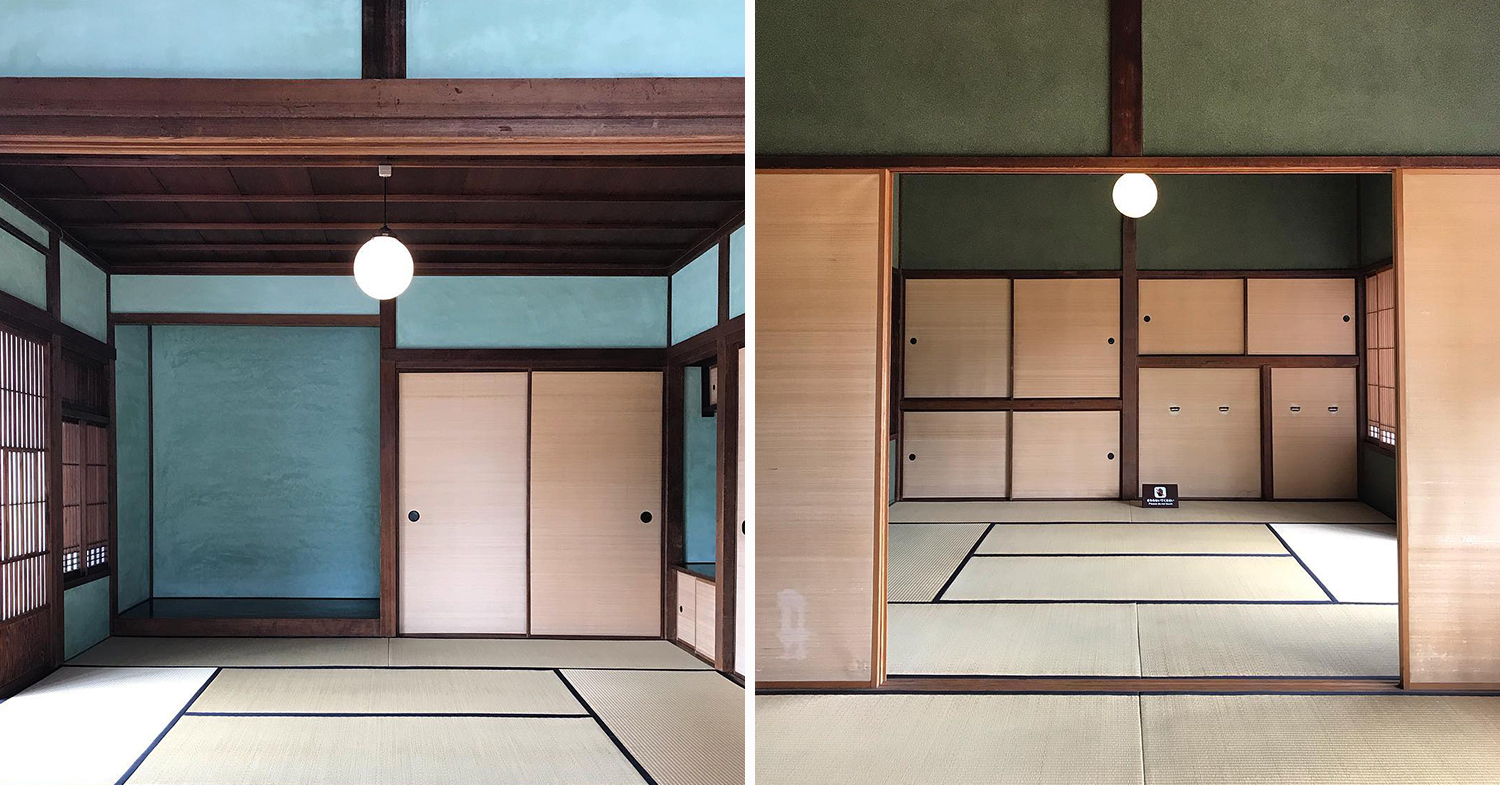
Image adapted from: @hanyayanagihara via Instagram
Horiguchi led the Secessionist Architecture Group, Japan’s first modern architecture movement. The tatami rooms incorporate an original use of form and colour, in line with his advocacy of aesthetics in architecture.
Dine in historical ambience
While food and drinks are not allowed during your visit, there are two restaurants within the grounds with very different vibes. Choose between traditional Japanese food and Western cuisines that match the era of the buildings they are nestled in.
1. Kura Restaurant (East Zone)
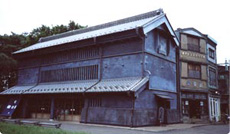
Image credit: Edo Tokyo Open Air Museum
Located on the upper floor of an old warehouse-style rest house in the East Zone, Kura Restaurant provides a bustling street view of olden-day downtown Tokyo.
The restaurant mostly serves various kinds of udon, which range from ¥630 (~USD4.70) to ¥780 (~USD5.82).
Opening hours: Mon-Fri 11am-4pm (Last order at 3.30pm) | Sat-Sun & Public Holidays 11am-5pm (Last order at 4.30pm) (Apr-Sep) | Sat-Sun & Public Holidays 11am-4.30pm (Last order at 4pm) (Oct-Mar)
2. Musashino Chabo Cafe (West Zone)
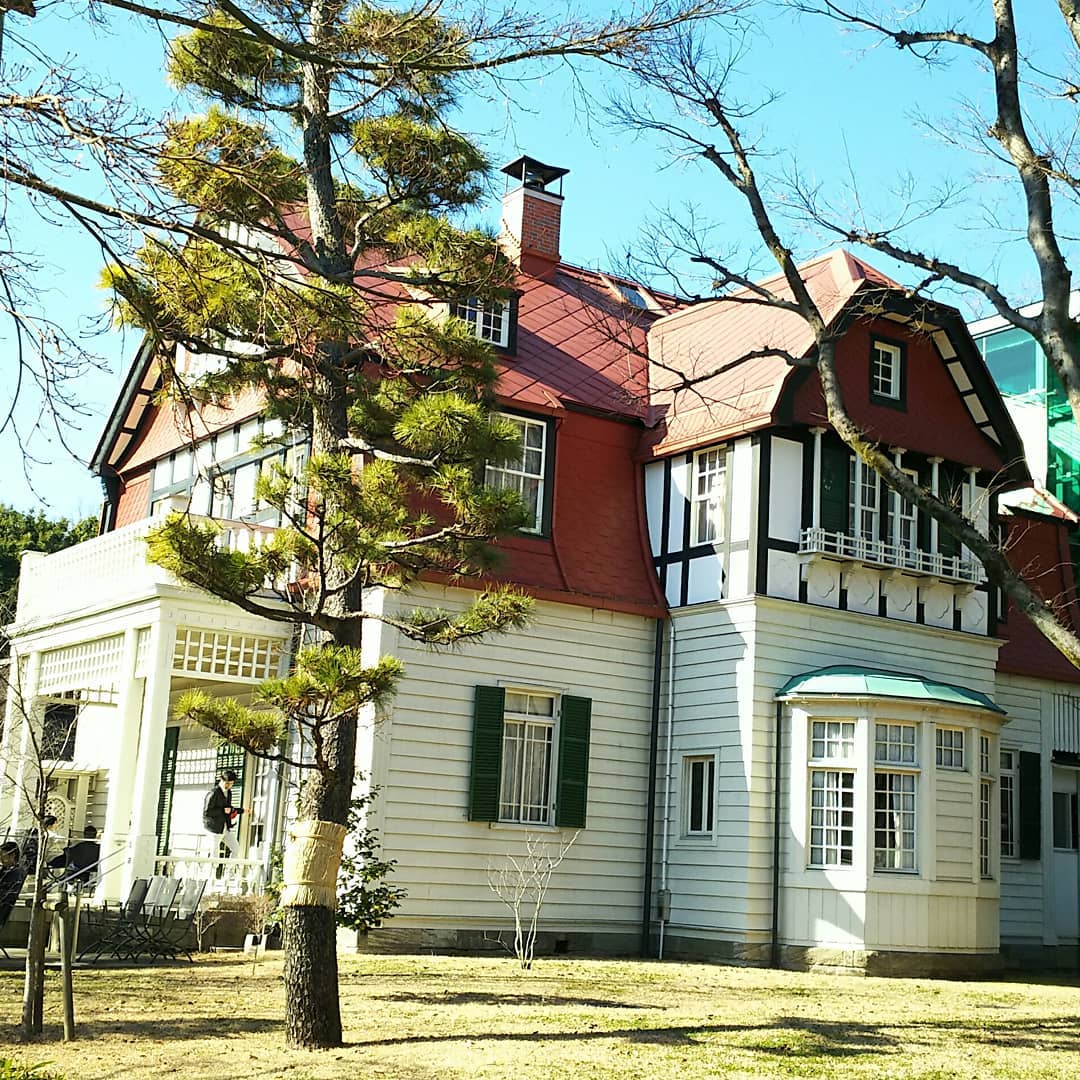
Image credit: @bocchantb via Instagram
If you’re craving some yoshoku, recreate Meiji era fusion dishes at Musashino Chabo Cafe.
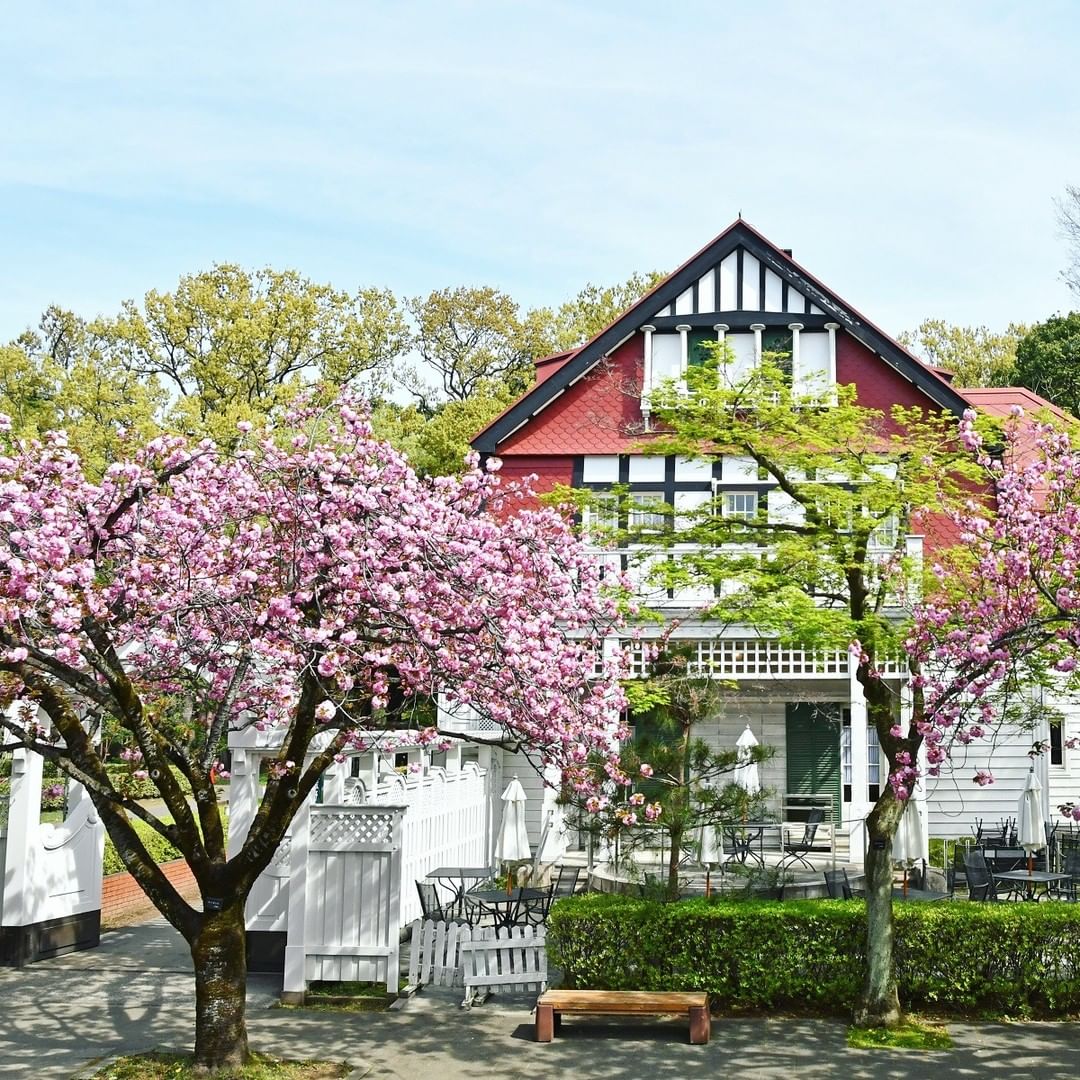
Image credit: @tatemonoen via Instagram
The cafe is located in the House Of Georg De Lalande, a 3-storey wooden abode enlarged to its present size by the German architect who gave the house its name. This house has seen many owners, the most notable being Mishima Kaiun, who invented the Calpis beverage.
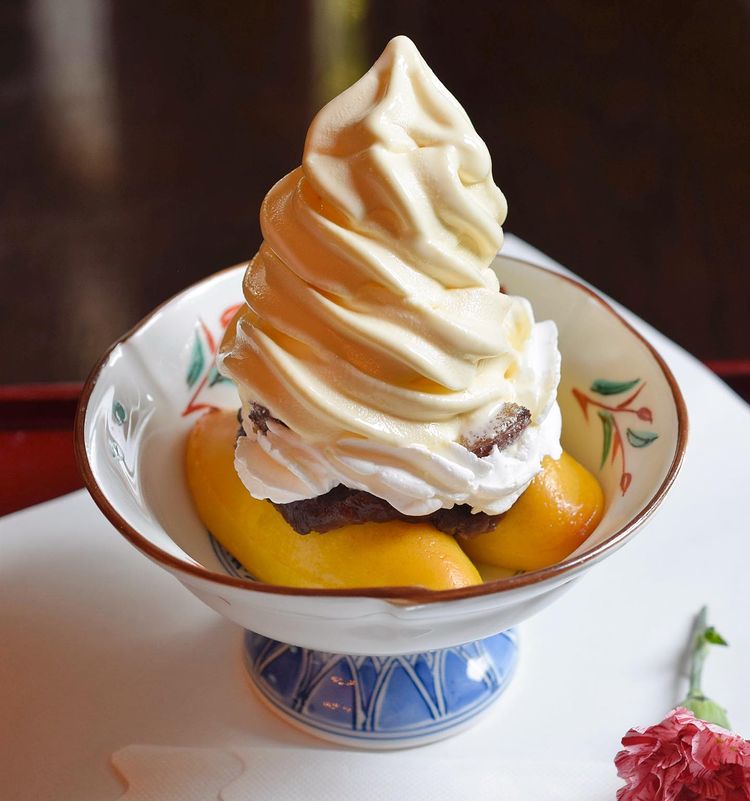
Image credit: @musashinosabo_tatemonoen via Instagram
The menu includes curry rice and hayashi rice, going for ¥1,485 (~USD11.08) each. The coffee and black tea cost ¥649 (~USD4.84) each. The wide assortment of desserts, such as a parfait made from vanilla soft serve and sweet potato, make for a refreshing break.
Opening hours: 10.30am-5pm, Daily (Last order at 4.30pm) (Apr-Sep) | 10.30am-4.30pm (Last order at 4pm) (Oct-Mar)
Keep history alive with seasonal events and activities
To really immerse you in Japanese history, Edo Tokyo Open Air Museum hosts a plethora of monthly and seasonal events.
1. Traditional crafts unique to Tokyo
On the second weekend of each month, the museum invites artisans to demonstrate traditional crafts unique to Tokyo. These workshops are held at the House of Uemura and the Kawano Shoten Wholesale Store, both in the East Zone.
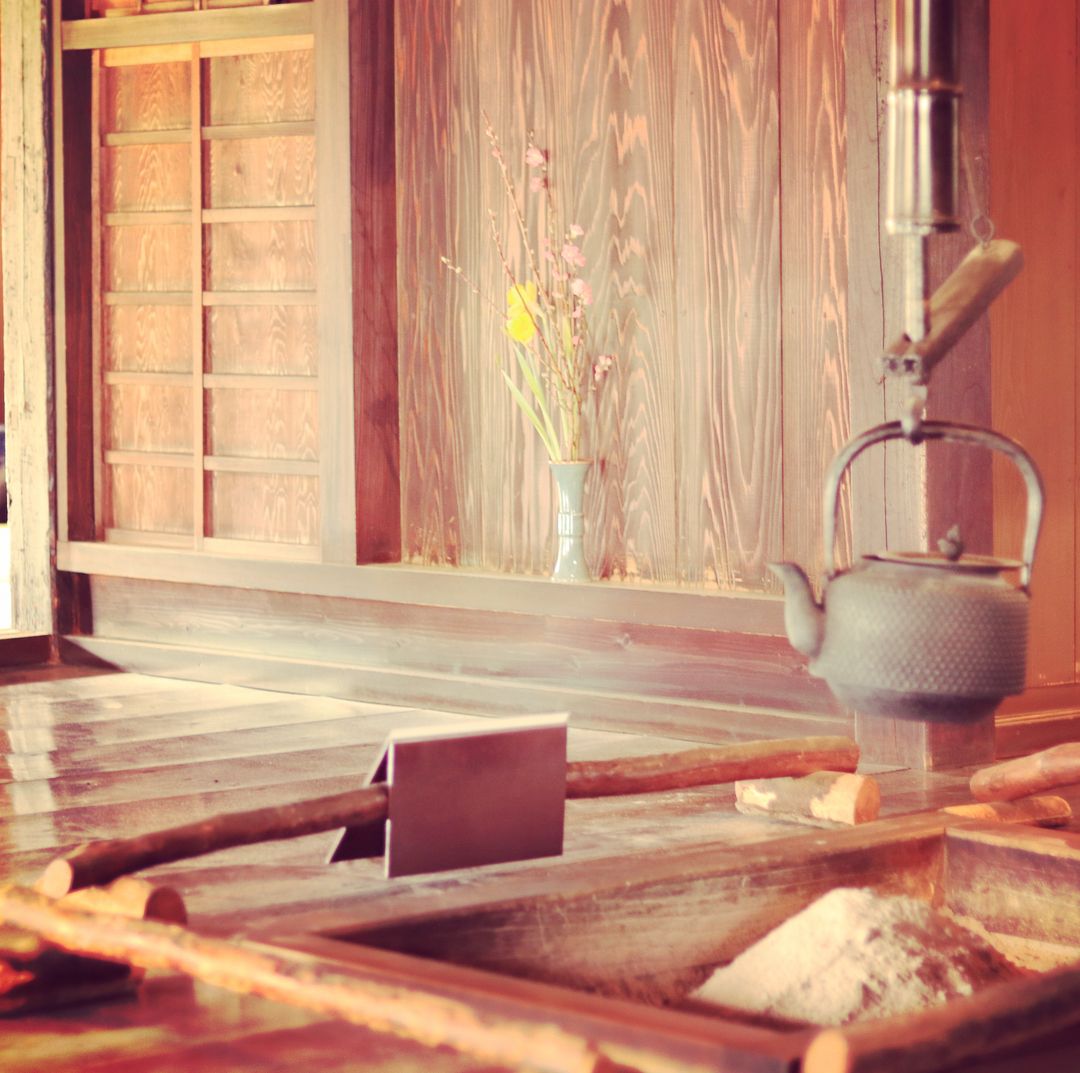
Image credit: @fukuchangram via Instagram
The lineup changes monthly, so expect to learn something new each visit. You might learn tortoiseshell crafting from Sumida City or kumihimo (組み紐; traditional braiding) from Toshima City, just to name a few.
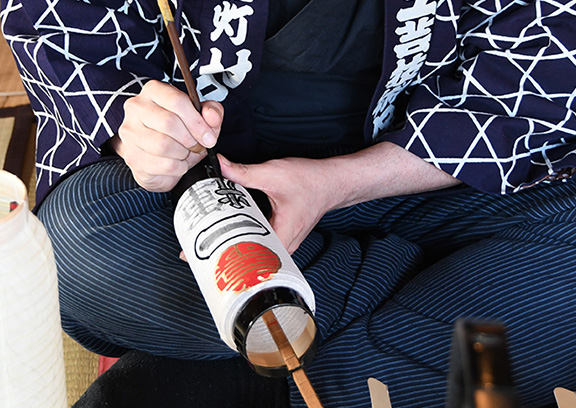
Image credit: Edo Tokyo Open Air Museum
2. Summer matsuri with celebratory games and folk dance
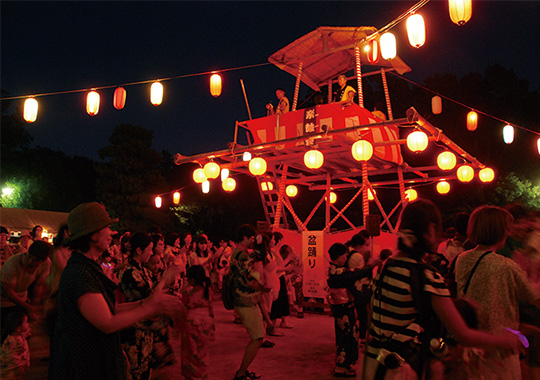
Image credit: Edo Tokyo Open Air Museum
Every August, the museum holds a matsuri-style event that involves bon odori, a celebratory folk dance with a 600-year history.
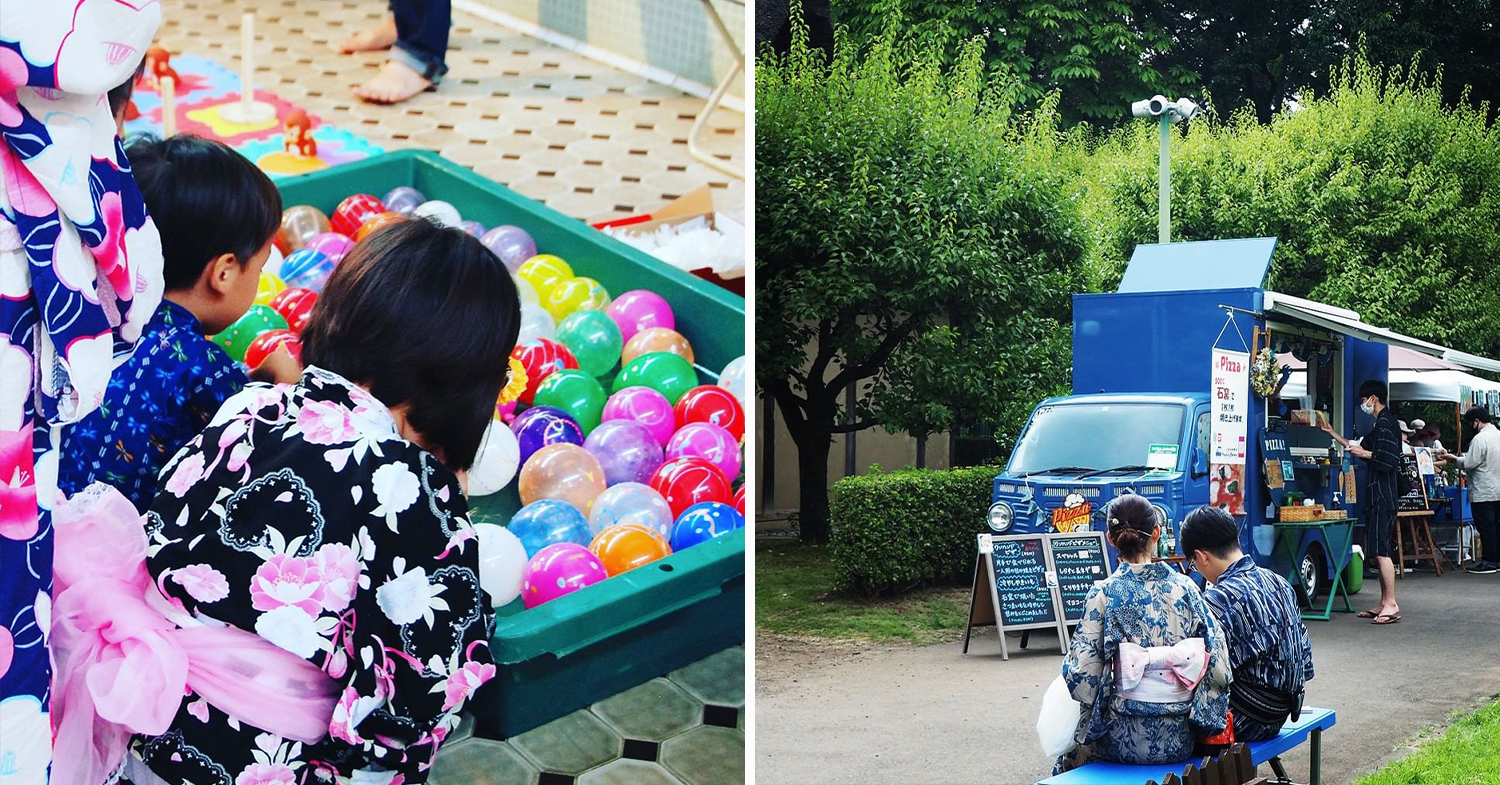
Image adapted from: @tatemonoen via Instagram
During the festival, come in traditional Japanese garments as you visit food trucks and games booths.
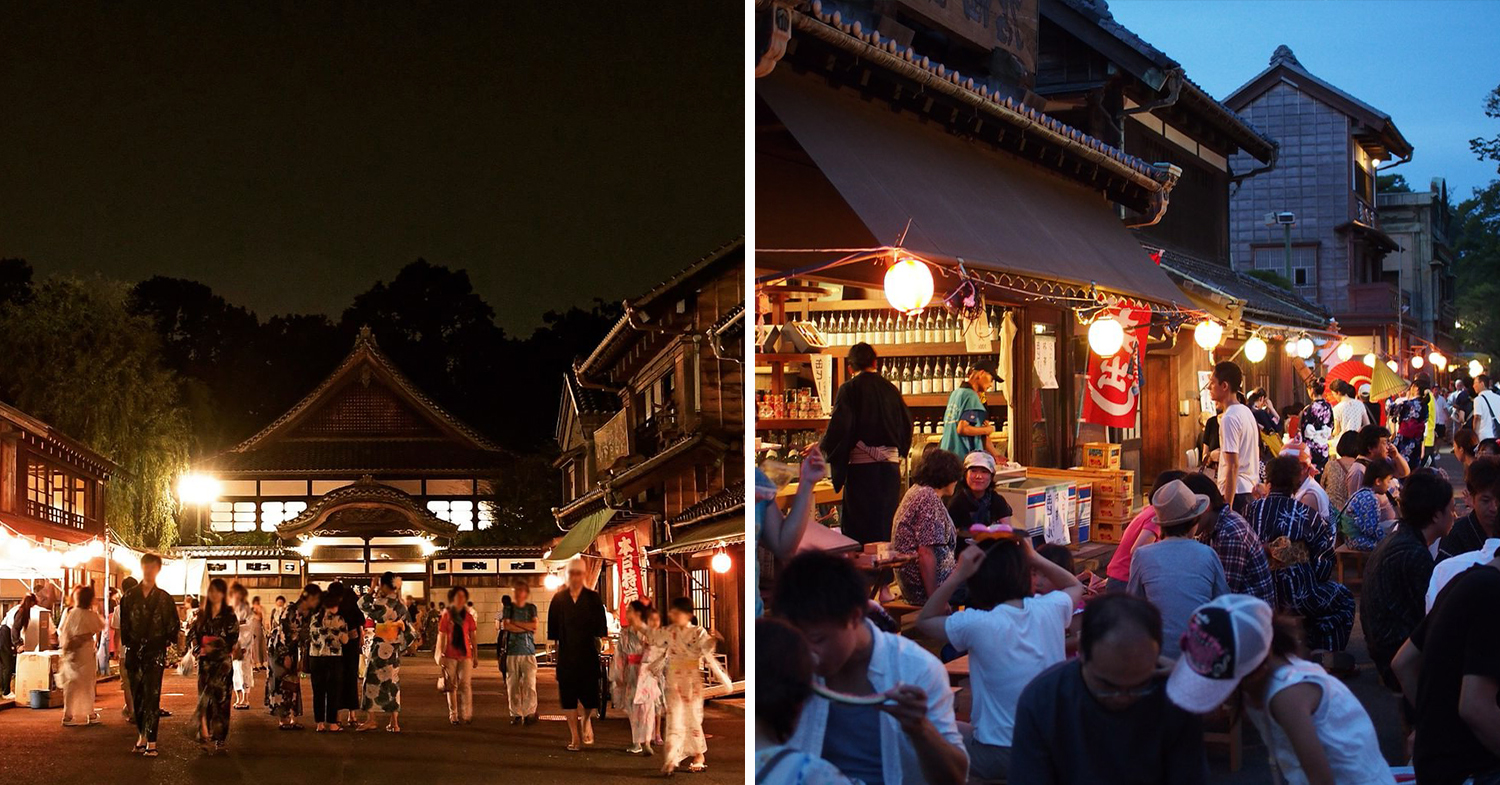
Image adapted from: Edo Tokyo Open Air Museum and Kestrel via Wikimedia
The festivities last from daytime until lanterns light up the night sky.
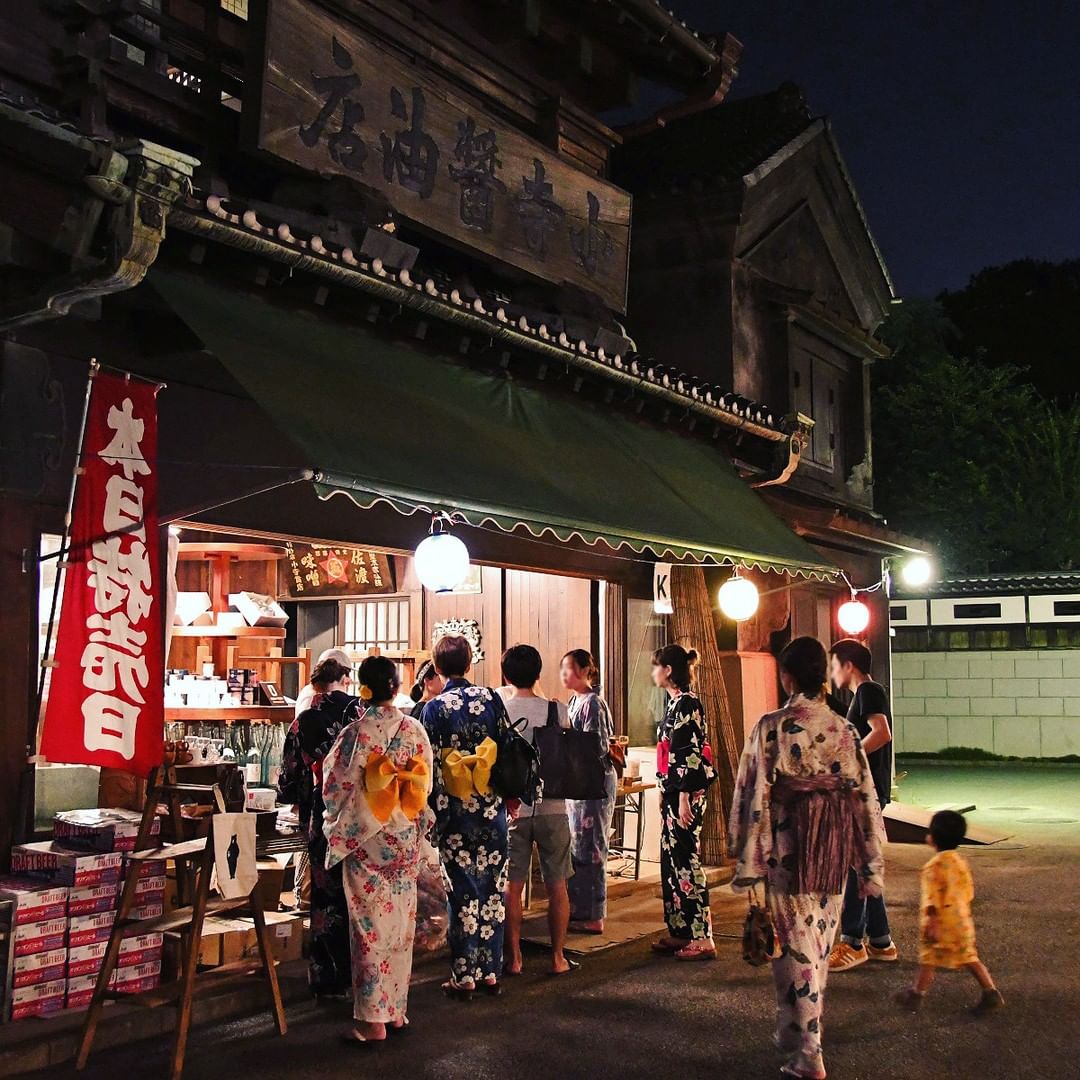
Image credit: @tatemonoen via Instagram
In 2022, the event was titled “Downtown Summer Night Breeze”. Shops along Shitamachi-naka Street were open to visitors and it almost felt like a midnight run to 7-Eleven in the Showa Period.
3. After-dark light-up of autumn foliage and traditional houses
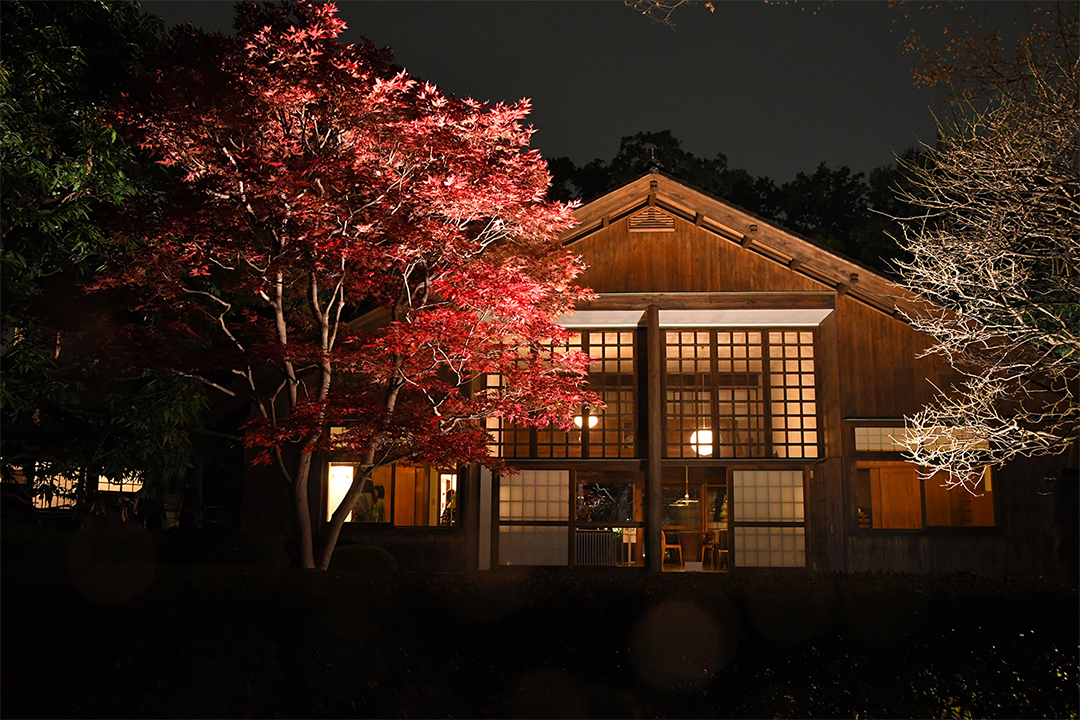
Image credit: Edo Tokyo Open Air Museum
In November, the illumination of fall foliage and buildings offers a more peaceful, albeit equally spectacular view.
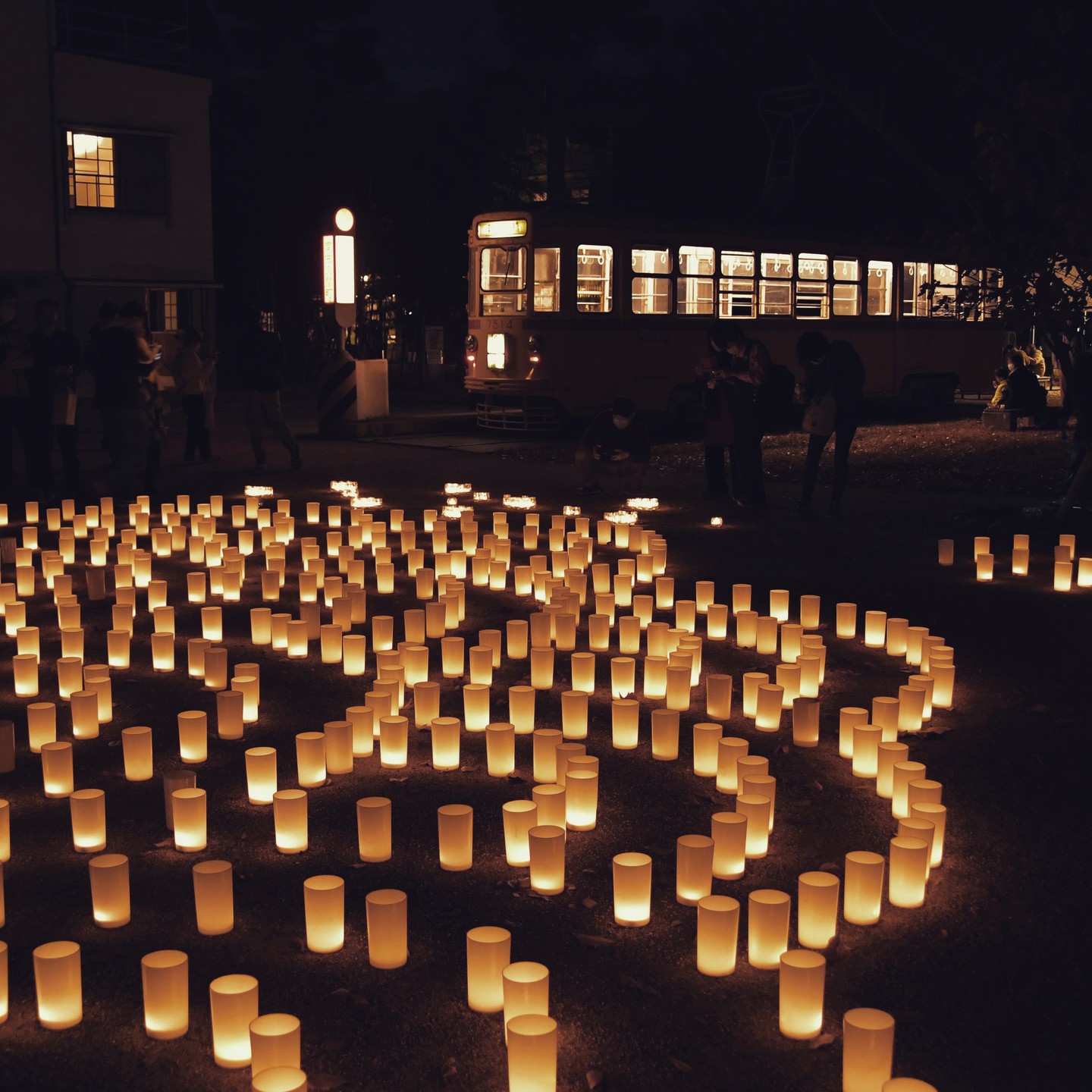
Image credit: @tatemonoen via Instagram
As the museum usually closes by 5pm, this event will charm you with a different view of the museum. A great tranquillity falls upon the candle-lit grounds by the city train.
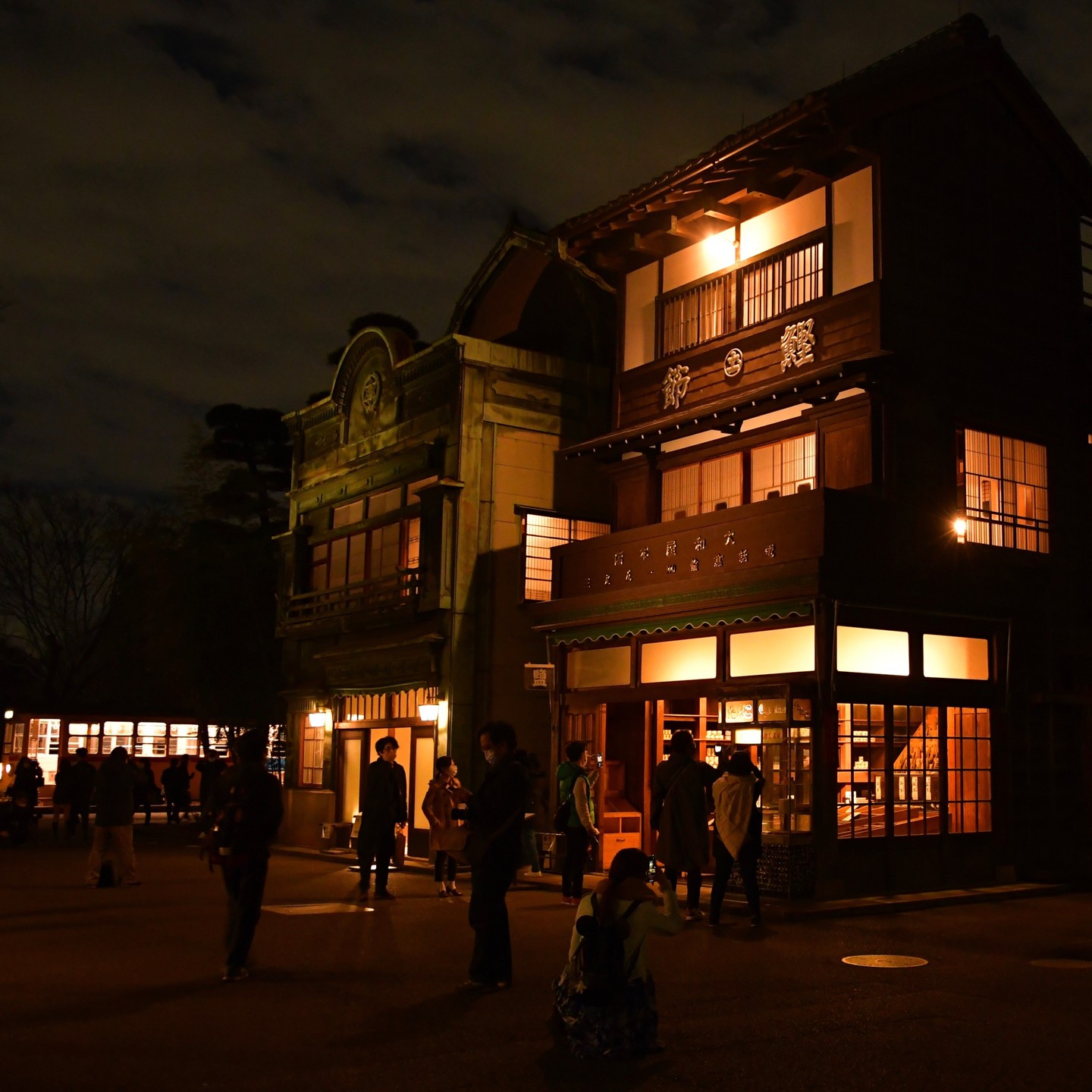
Image credit: @tatemonoen via Instagram
The downtown area is also really vibey to visit at night during the autumn light-up event. There’s something enchanting about quiet streets that juxtaposes against its bustling daytime atmosphere.
4. Celebrate growth milestones during Children’s Day
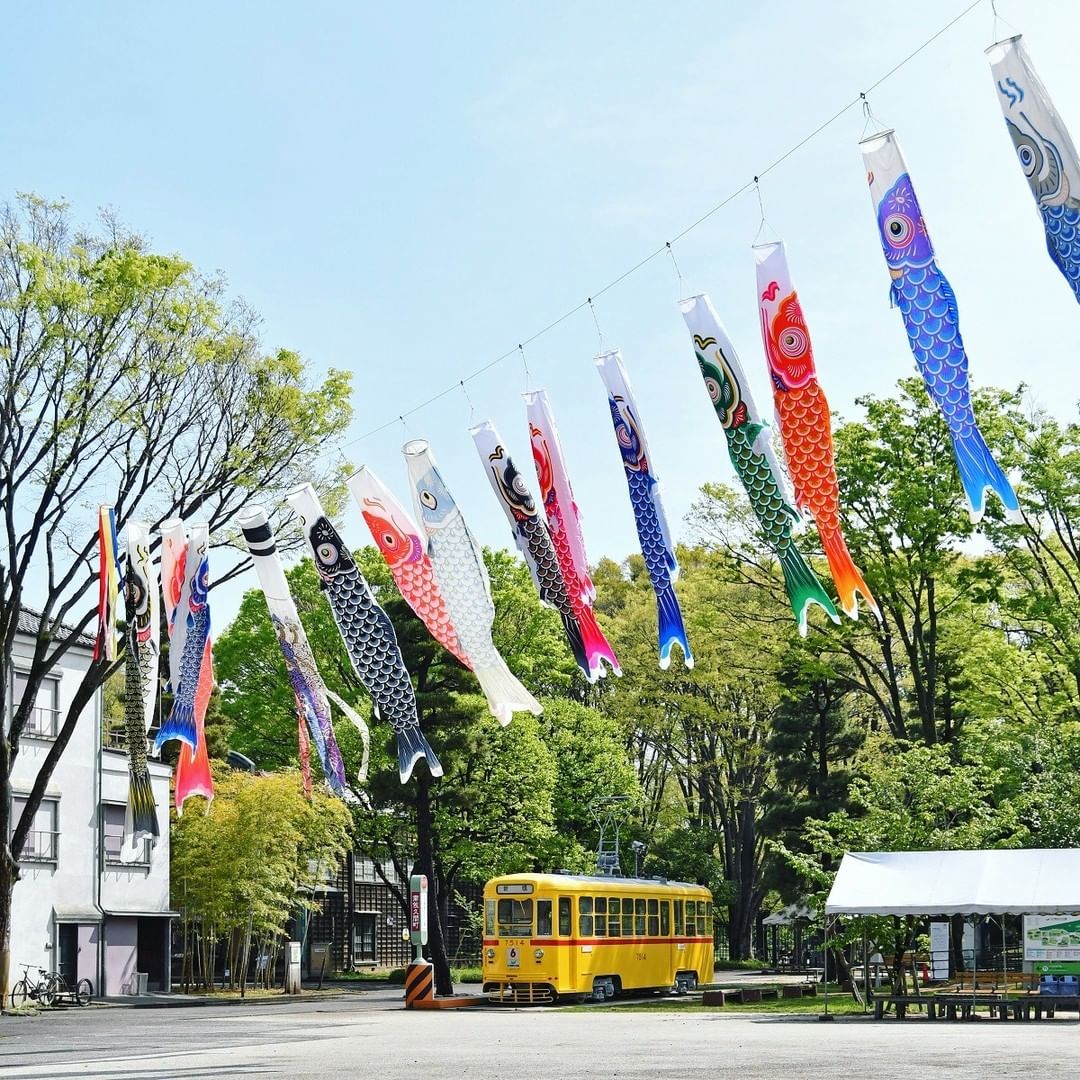
Image credit: @tatemonoen via Instagram
On 5th May every year, the museum is decked in colourful koinobori to celebrate Children’s Day. These carp-shaped windsocks that “swim” in the sky are filled with wishes for the health and growth of children.
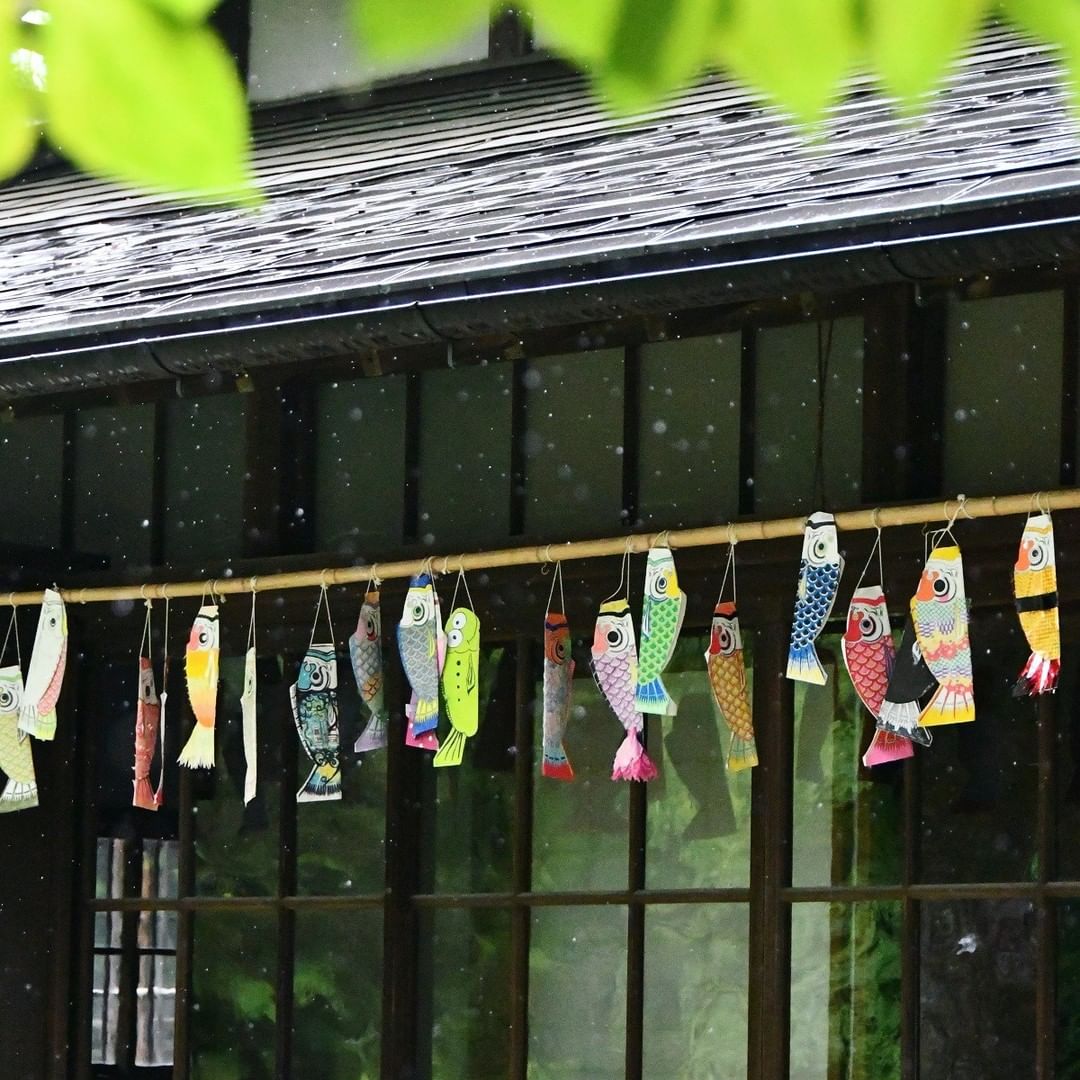
Image credit: @tatemonoen via Instagram
Koinobori are believed to borrow the energy and power of koi fish fighting their way up rapidly flowing streams. A simpler paper version also adorns the windows.
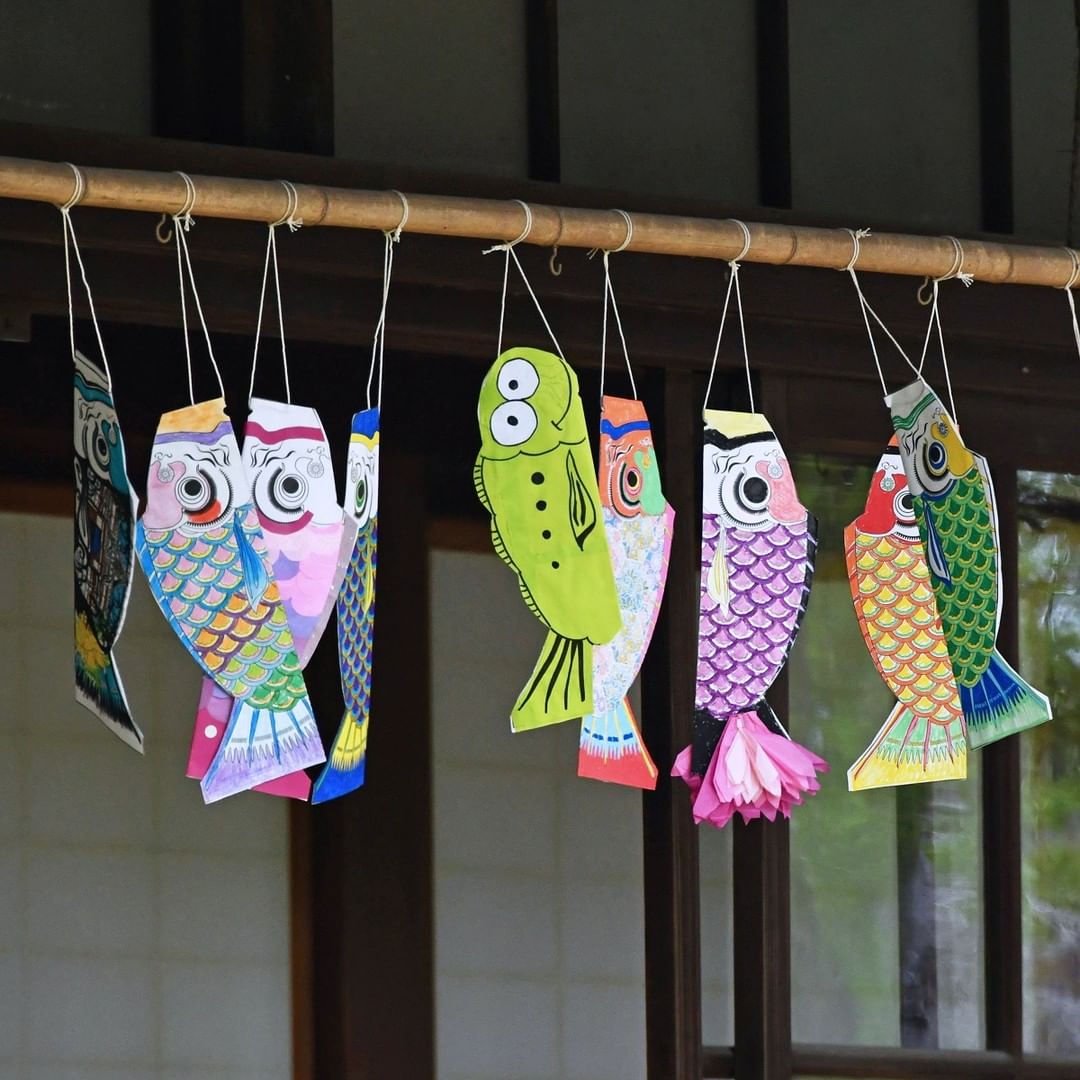
Image credit: @tatemonoen via Instagram
Look out for Edomaru, the museum’s edamame-shaped caterpillar mascot, hiding among the fish to join in on the fun. The mascot is yet another one of Tatemono-en’s subtle links to Studio Ghibli, as it was designed by Hayao Miyazaki.
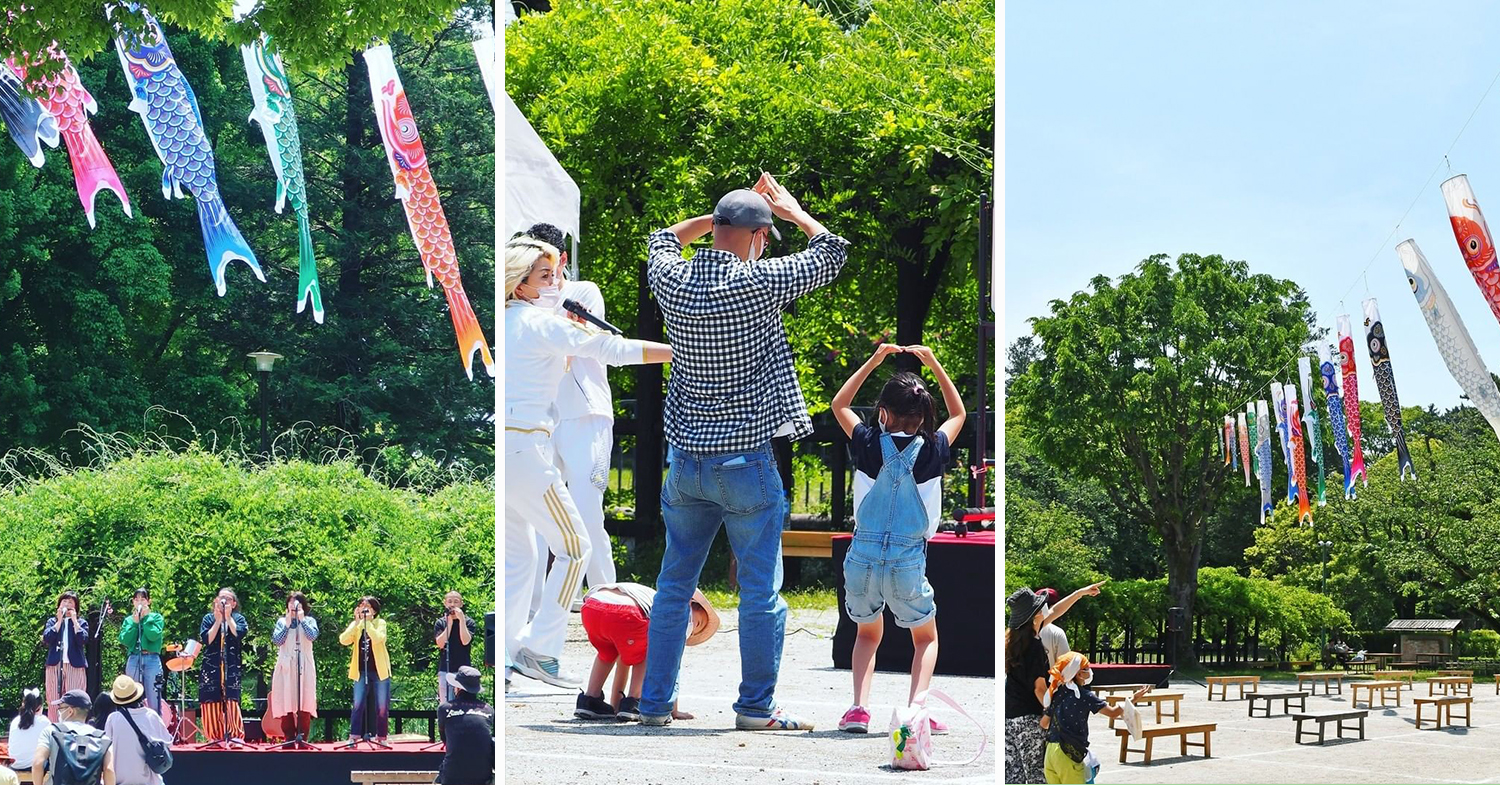
Image adapted from: @tatemonoen via Instagram
Visitors with children will take delight in the nursery rhyme performances and games that are specially organised for families.
5. Free entry on important occasions
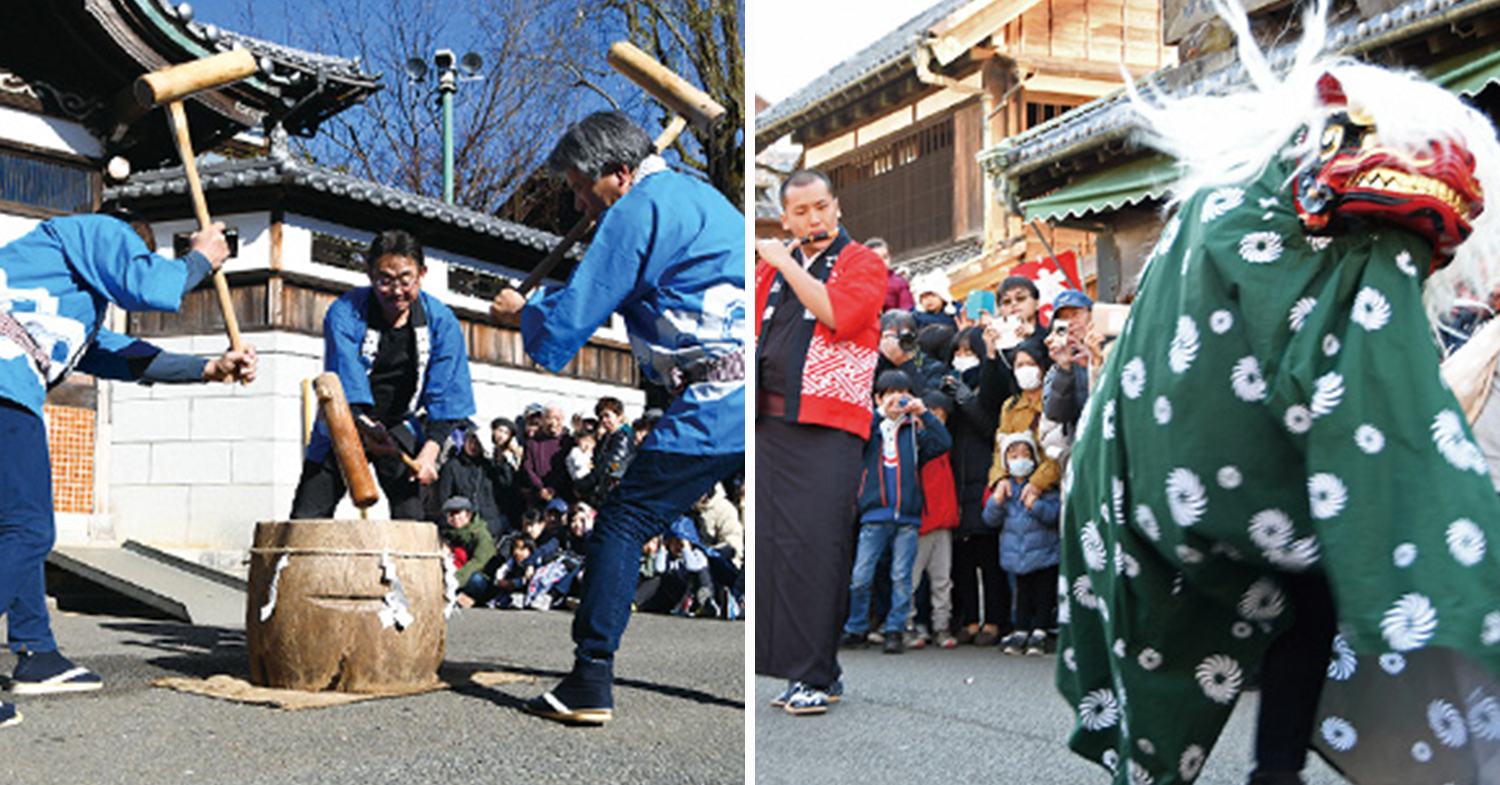
Image adapted from: Edo Tokyo Open Air Museum
If you happen to be in Tokyo during New Year’s, you’re in luck – the entrance fees to the museum are waived on 2nd and 3rd January. You’ll also get to watch shishimai (獅子舞; lion dance) and mochitsuki (餅つき; old-fashioned pounding of rice cakes).
The museum is also open for free during its Opening Anniversary every 28th March. There’s so much to see and do here – check out the museum’s handy year-round schedule to plan your trip and OOTD.
Book your tickets beforehand
Online advanced reservation is recommended for travellers to prevent the possibility of waiting in long queues for tickets. The site is in Japanese, but you can toggle to English via Google Translate and the process is rather straightforward.
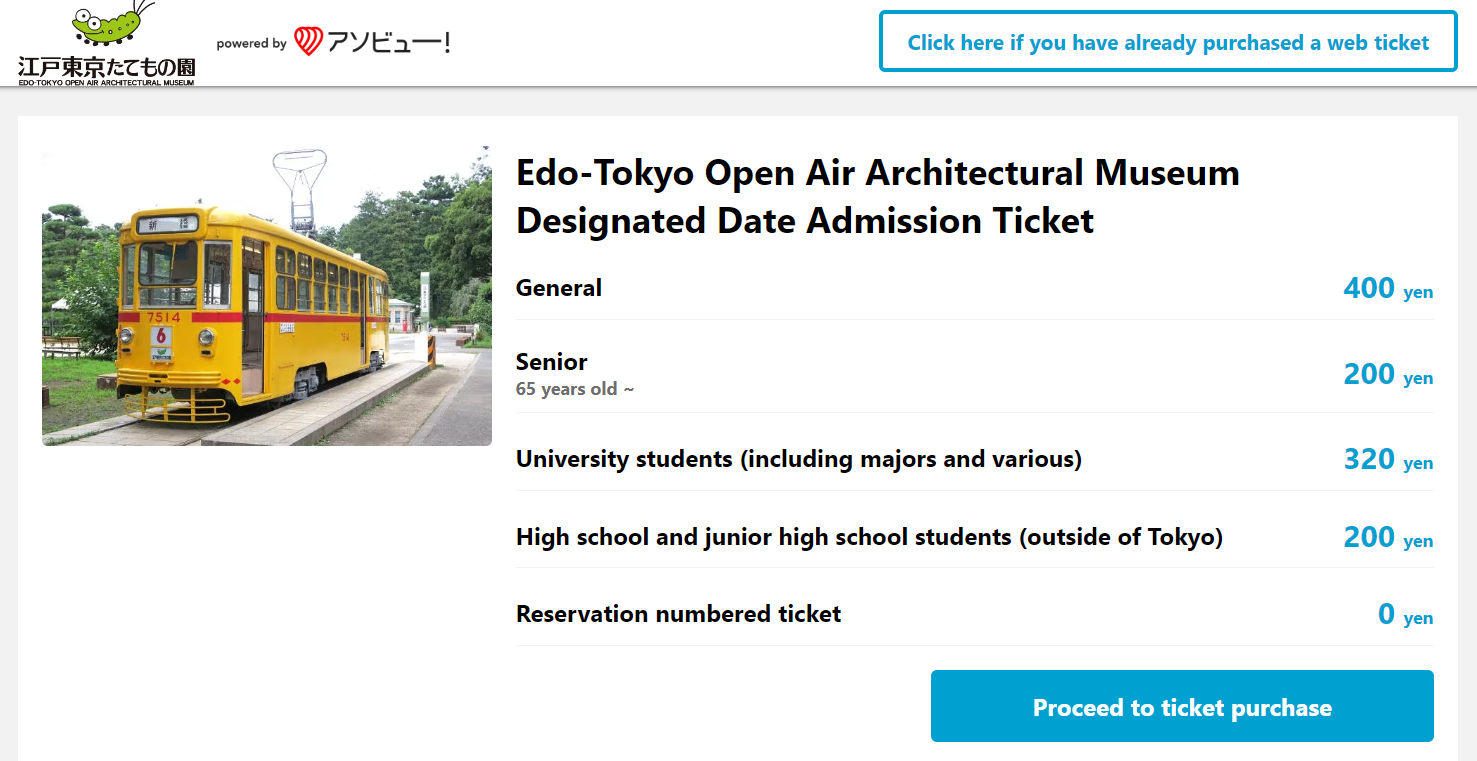
Image adapted from: ASOVIEW Inc.
After clicking “Proceed to ticket purchase”, click agree on all the guidelines. Then, choose your desired date of visit, fill in which tickets you’ll need and the price will be auto-generated.
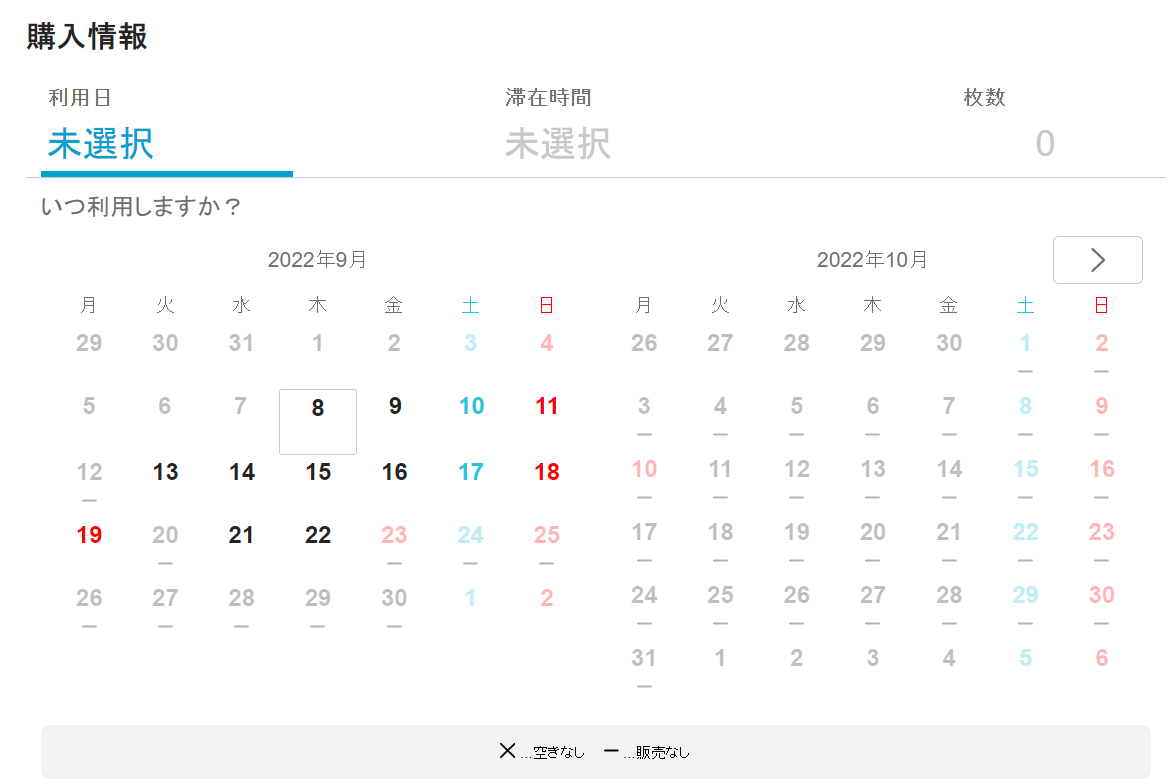
Image adapted from: ASOVIEW Inc.
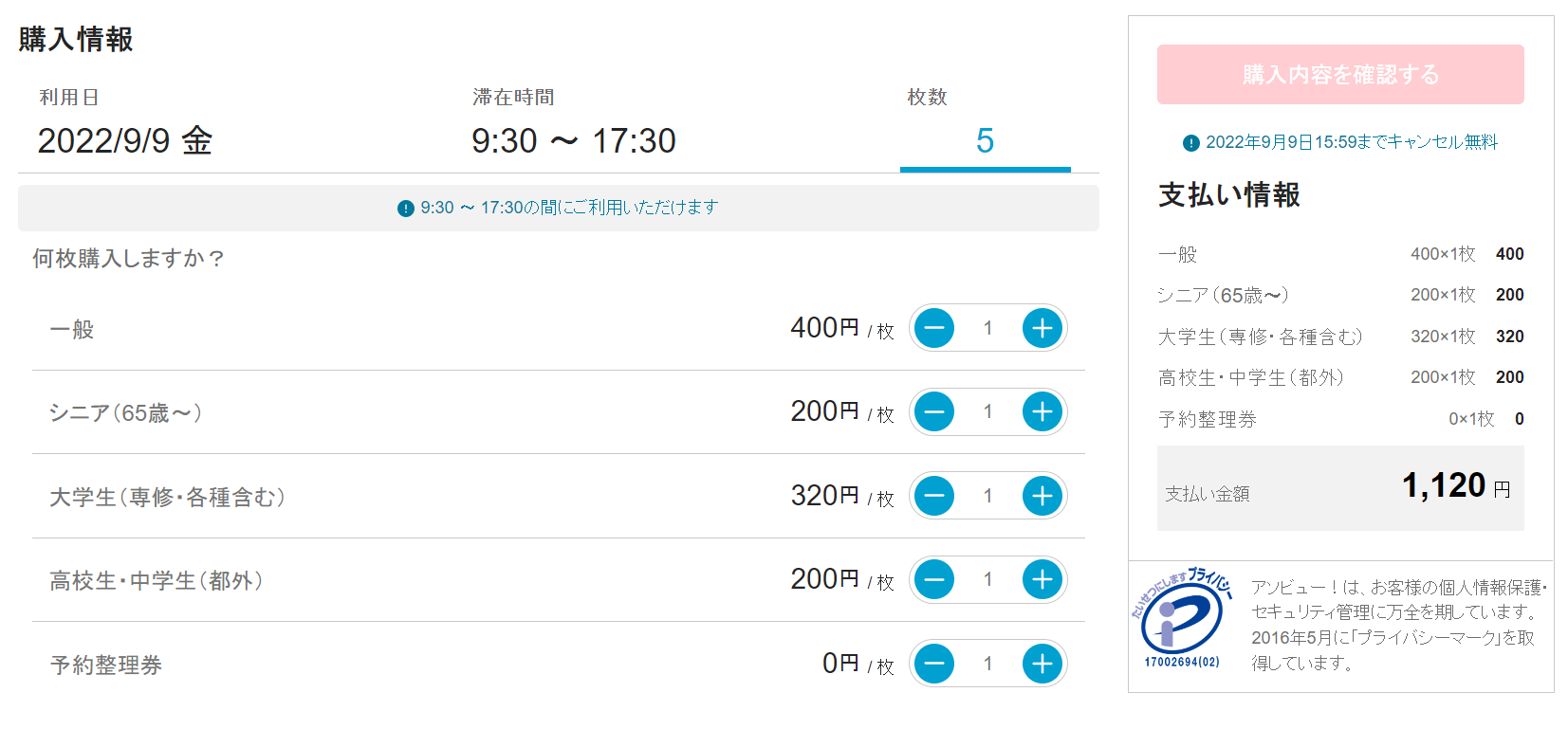
Image adapted from: ASOVIEW Inc.
The pricing is ¥400 (~USD2.98) for adults, ¥300 (~USD2.24) for college and vocational school students, ¥200 (~USD1.49) for junior high students, high school students and seniors above 65 years old. Note that admission is free for preschoolers, primary school students, and junior high students living in Tokyo.

Image adapted from: ASOVIEW Inc.
Fill in your particulars then purchase using credit card, PayPay, Payday or coupons if you have any.
Make sure to find out more admission information and book on the website before you go.
Dress & pack for the occasion
If you’d like to dress in traditional Japanese garments to complement the sights in the museum, you’re advised to come fully-dressed as the museum does not allow changing of clothes and applying of makeup within its facilities.
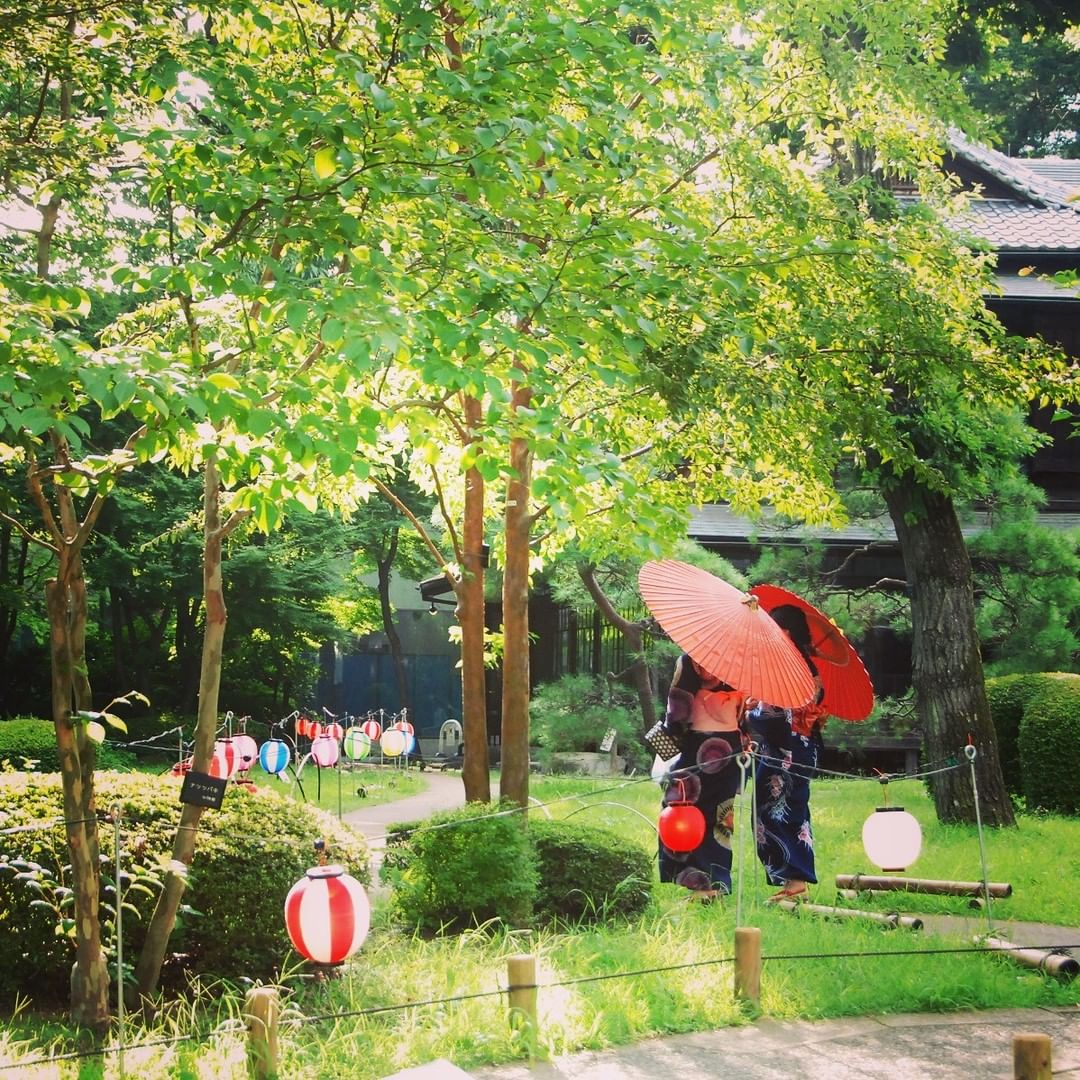
Image credit: @tatemonoen via Instagram
While costumes will not be sold onsite, props including umbrellas are on loan for free from Kawano Shoten in the East Zone. You can also borrow wheelchairs and strollers from the Visitor’s Center.
As much as this museum offers an immersive experience, be mindful that the buildings are important historical artefacts after all. Bring shoes that can be taken off and worn again easily as some buildings only allow barefoot access to protect the wooden floors.
Avoid bringing bulky items as you might have to leave your belongings in lockers.
The museum’s site provides a full list of precautions, including things to note for photographers.
Getting to Edo Tokyo Open Air Museum
If you’d like to experience life in premodern Japan, this garden of buildings is a must-visit. Edo Tokyo Open Air Museum is located in History and architecture enthusiasts will likely find themselves here for a full-day exploration.
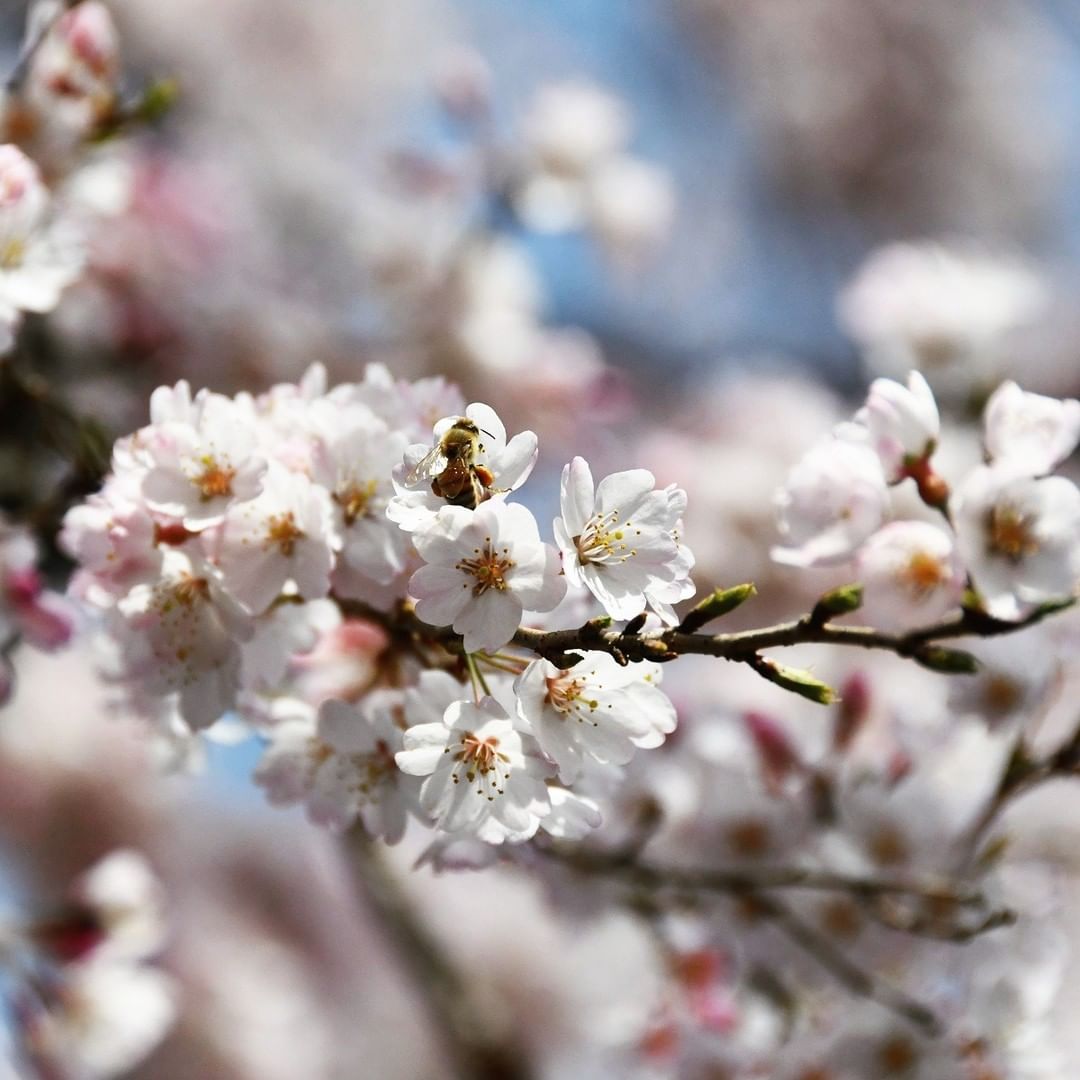
Image credit: @tatemonoen via Instagram
If you happen to arrive before the museum’s opening hours or want to linger a while more after the museum closes, take a walk in the surrounding Koganei Park. Not only is Koganei Park one of Tokyo’s most popular sakura-viewing spots, it also abound with seasonal blooms year-round.
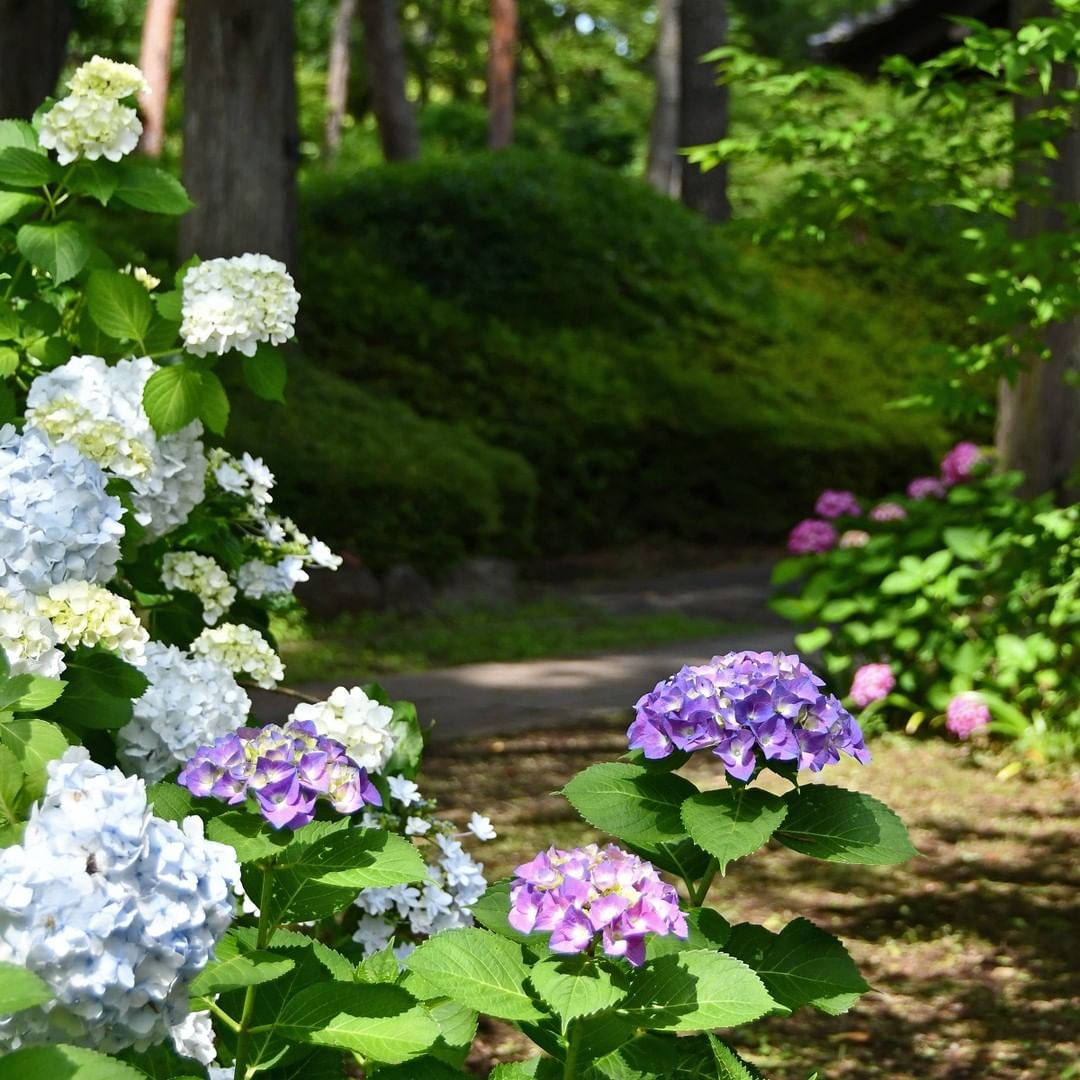
Image credit: @tatemonoen via Instagram
Apart from the picturesque nature, there’s also the Ghibli Museum and Hakenomori Art Museum within a 40-minute bus ride in the area for museum-hoppers with an eye for aesthetics.
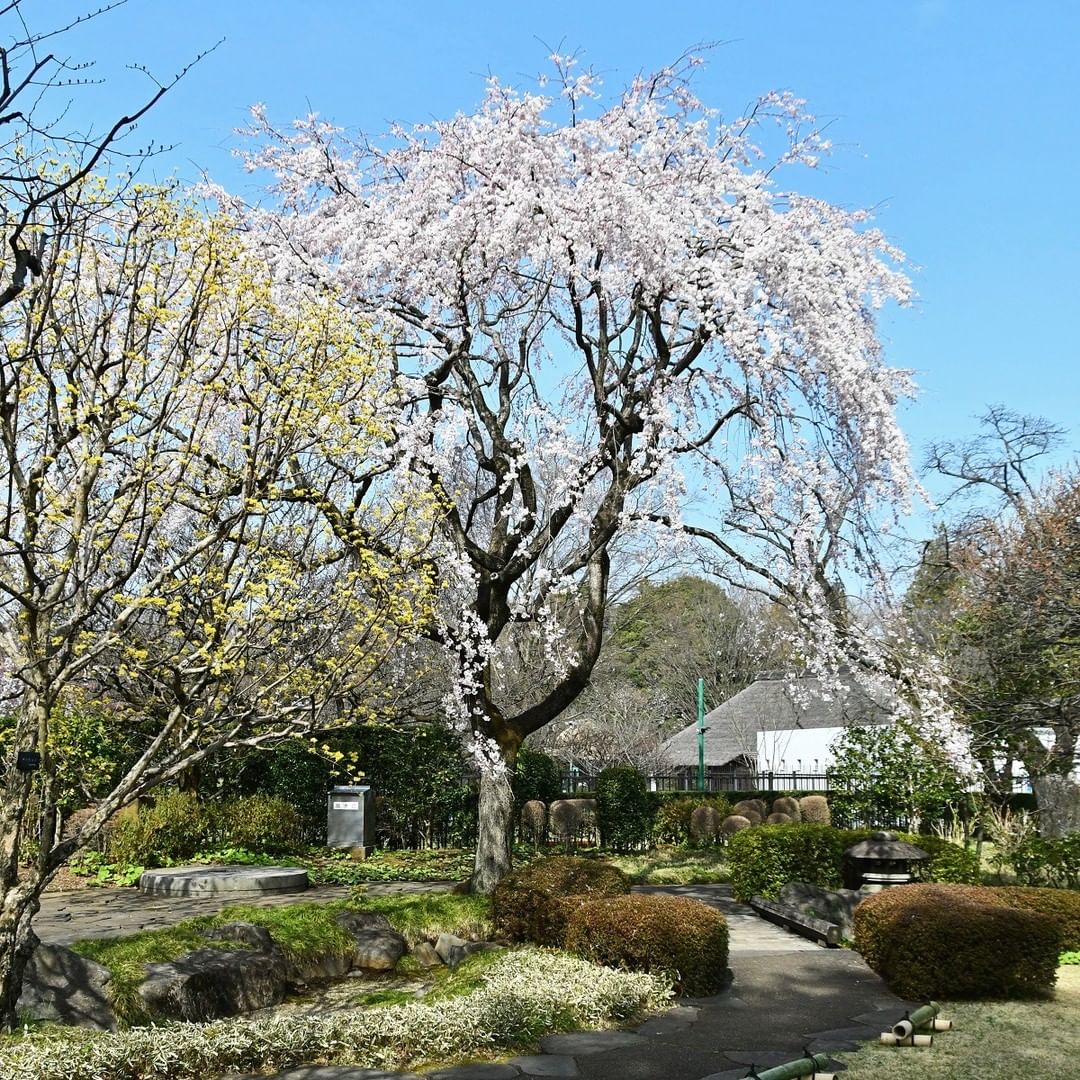
Image credit: @tatemonoen via Instagram
Getting there: for the shortest walking time, we recommend taking the JR Chuo Line to Musashi-Koganai station for Bus Seibu 12, 13, 15 or 15. Alight at Koganei-Koen Nishiguchi Bus-Stop and you’ll be right across the road from the corner of Koganei Park where the museum is located.
Admission: ¥400 (~USD2.98) for adults, ¥300 (~USD2.24) for college and vocational school students, ¥200 (~USD1.49) for junior high students, high school students, and seniors above 65 years old.
Address: 3 Chome-7-1 Sakuracho, Koganei, 184-0005, Tokyo
Opening hours: 9.30am-5.30pm, Daily (Apr-Sep) | 9.30am-4.30pm, Daily (Oct-Mar) (Closed on Mondays) (Last admission 30 minutes before closing)
Contact: 0423-88-3300
For more hidden gems in Tokyo, check out Jimbocho, a literary haven for bookworms, or our Daikanyama guide. Alternatively, Shimokitazawa is a great place for some thrift shopping, and consider these free things to do in Tokyo if you’re on a tight budget.
Cover image adapted from: @tatemonoen via Instagram
